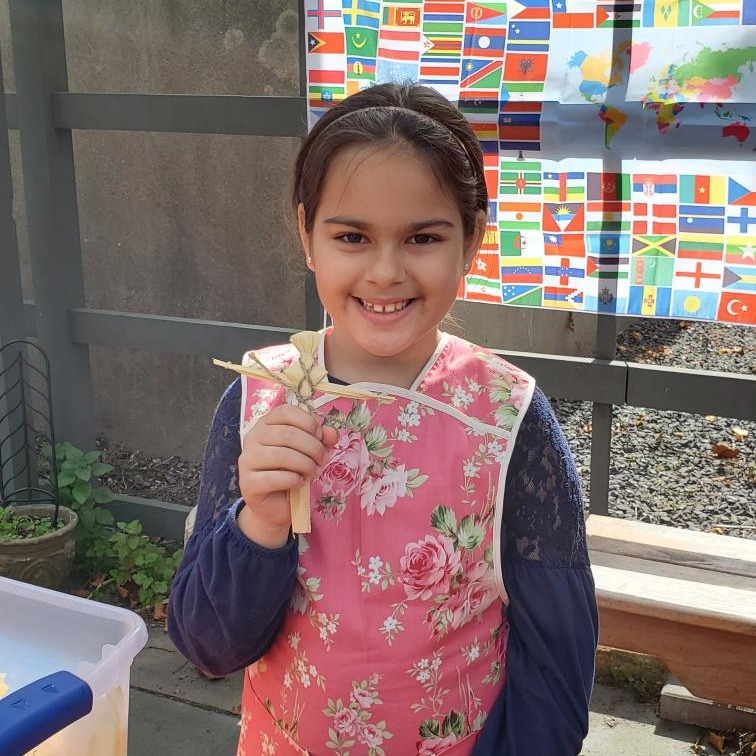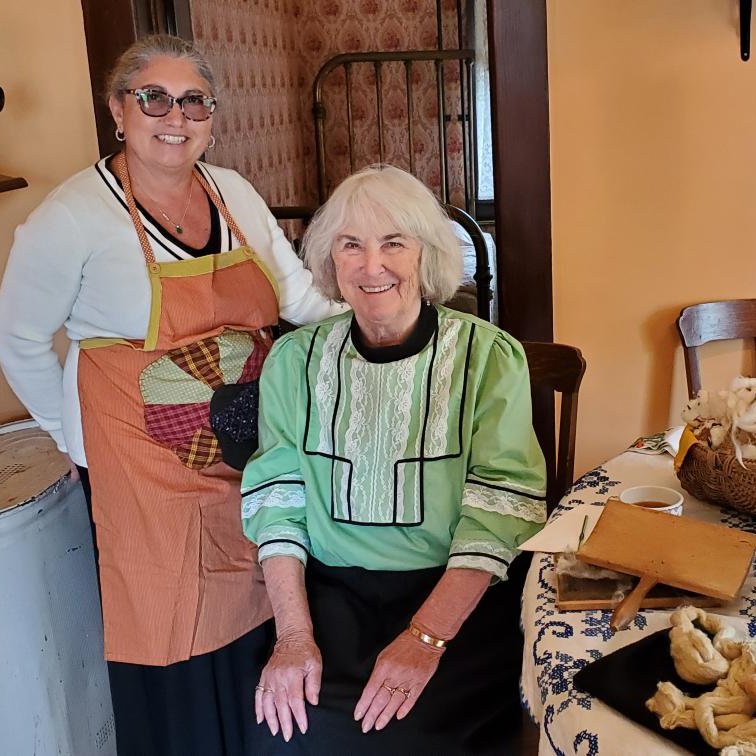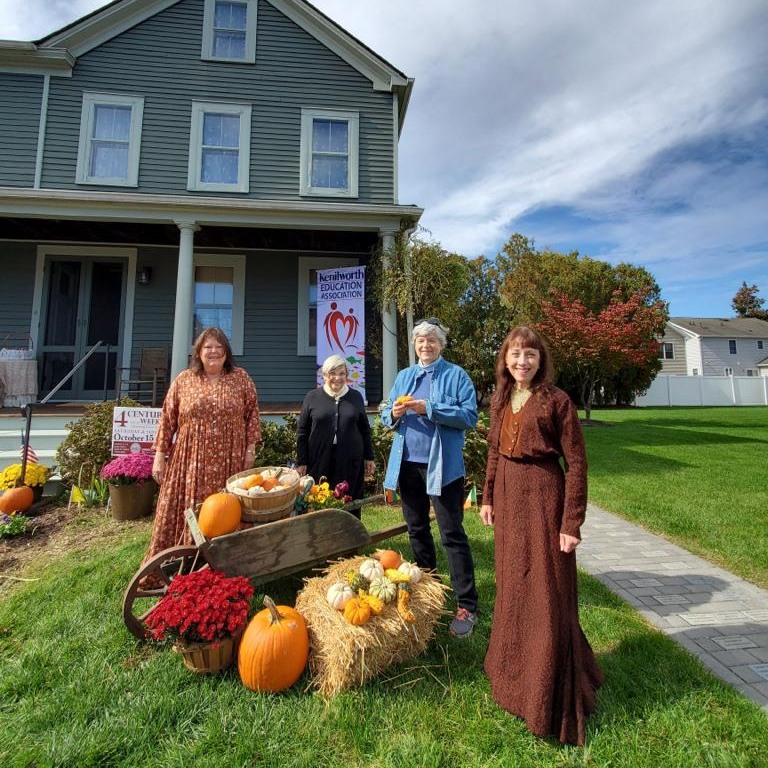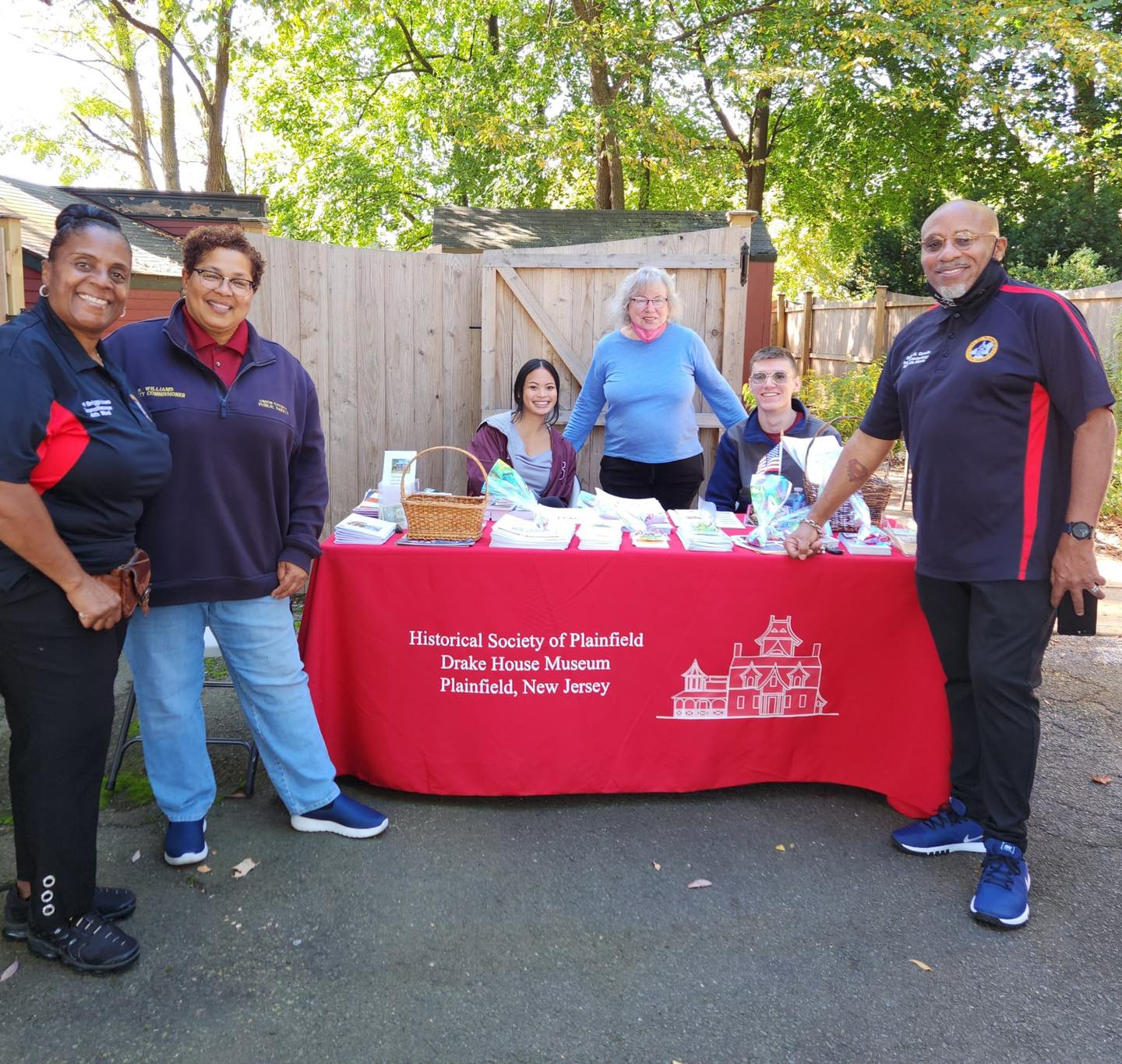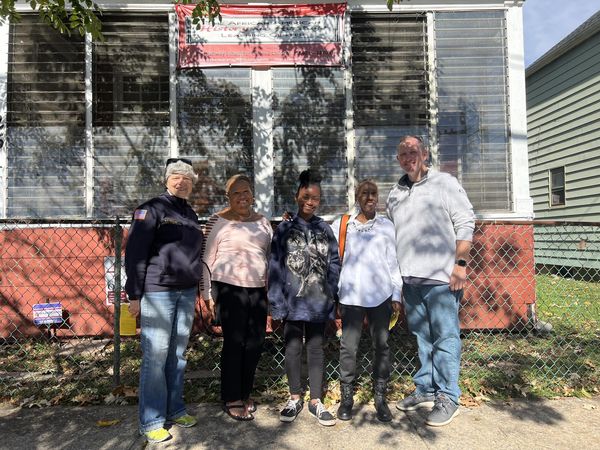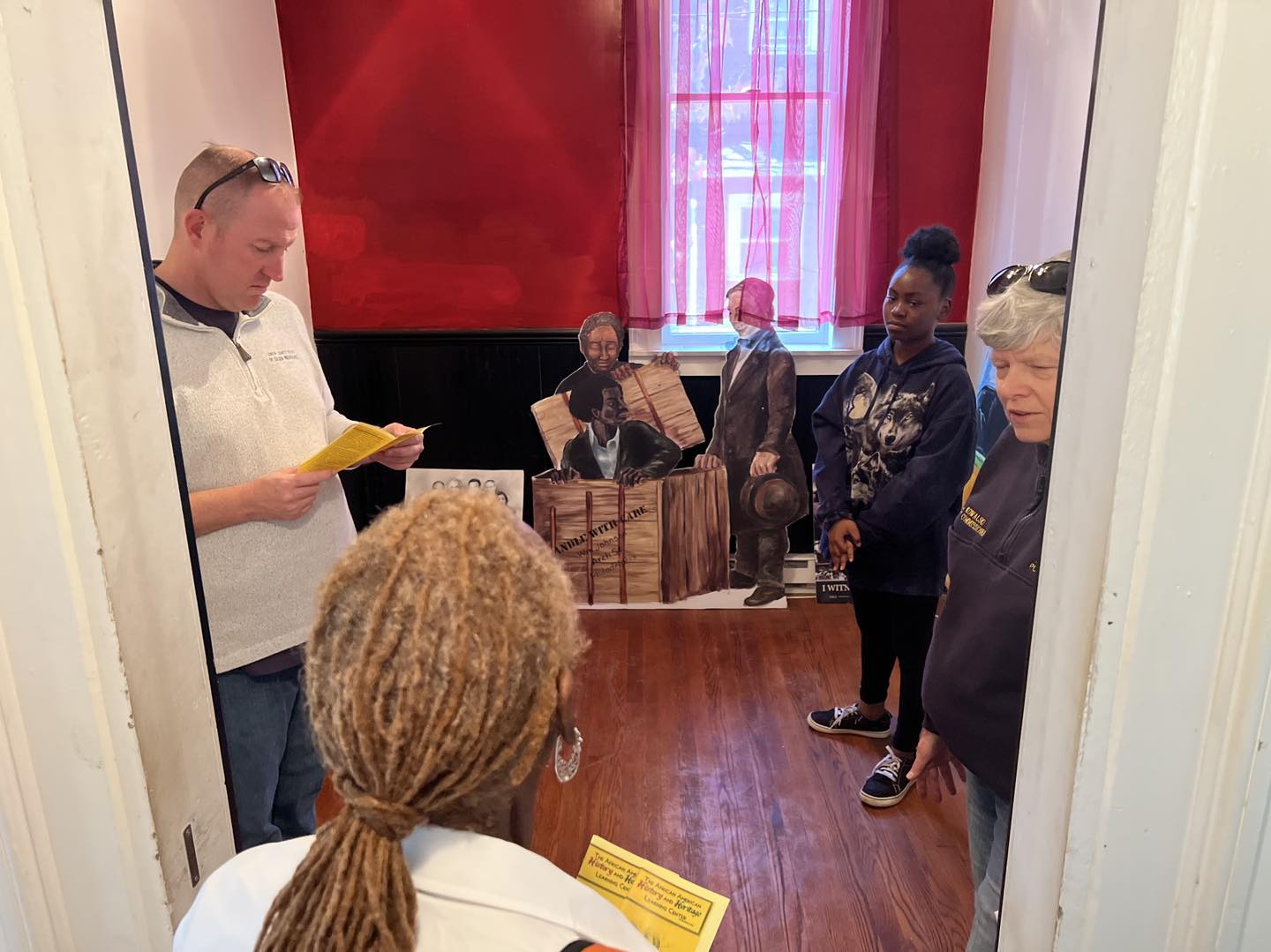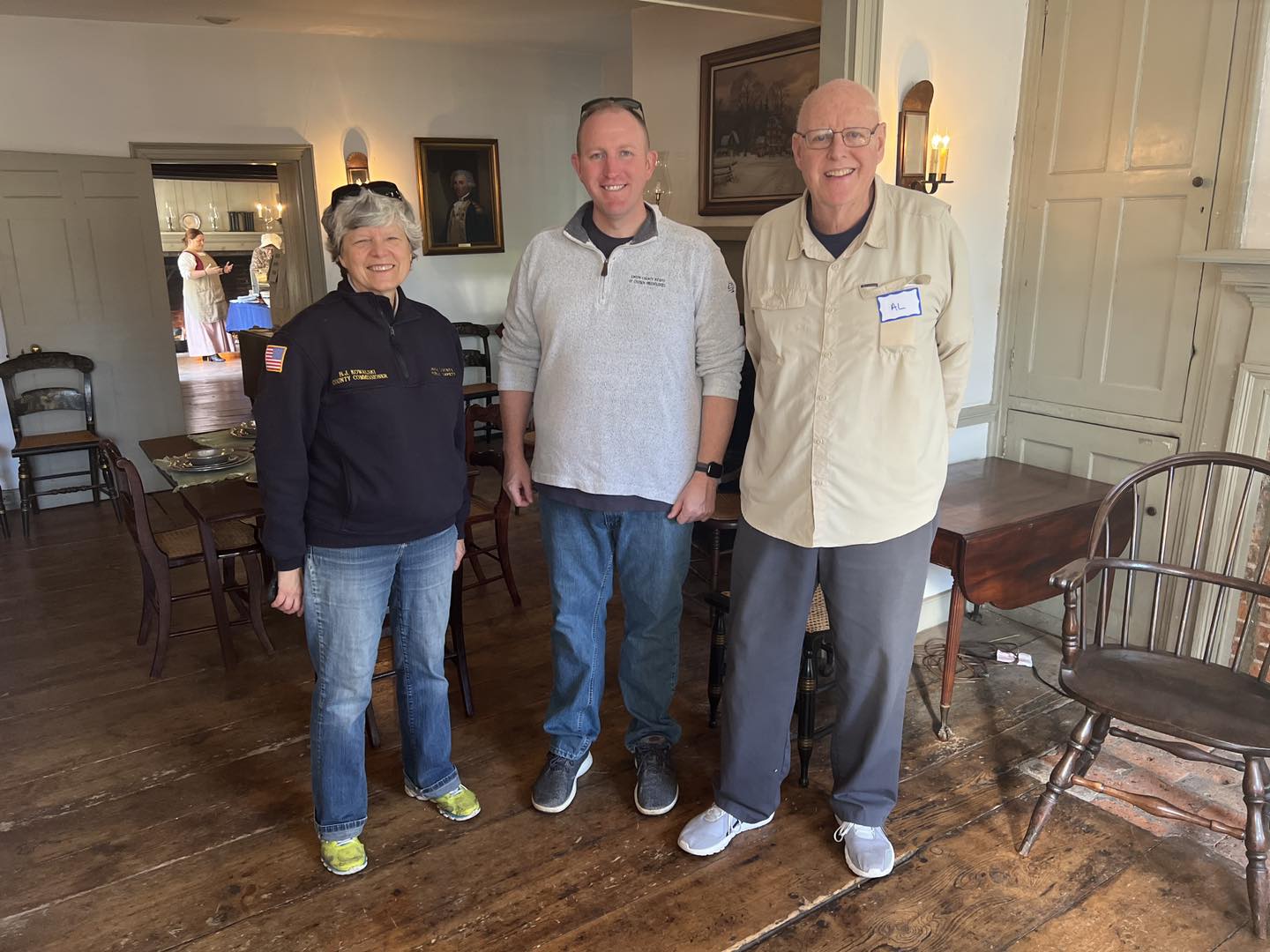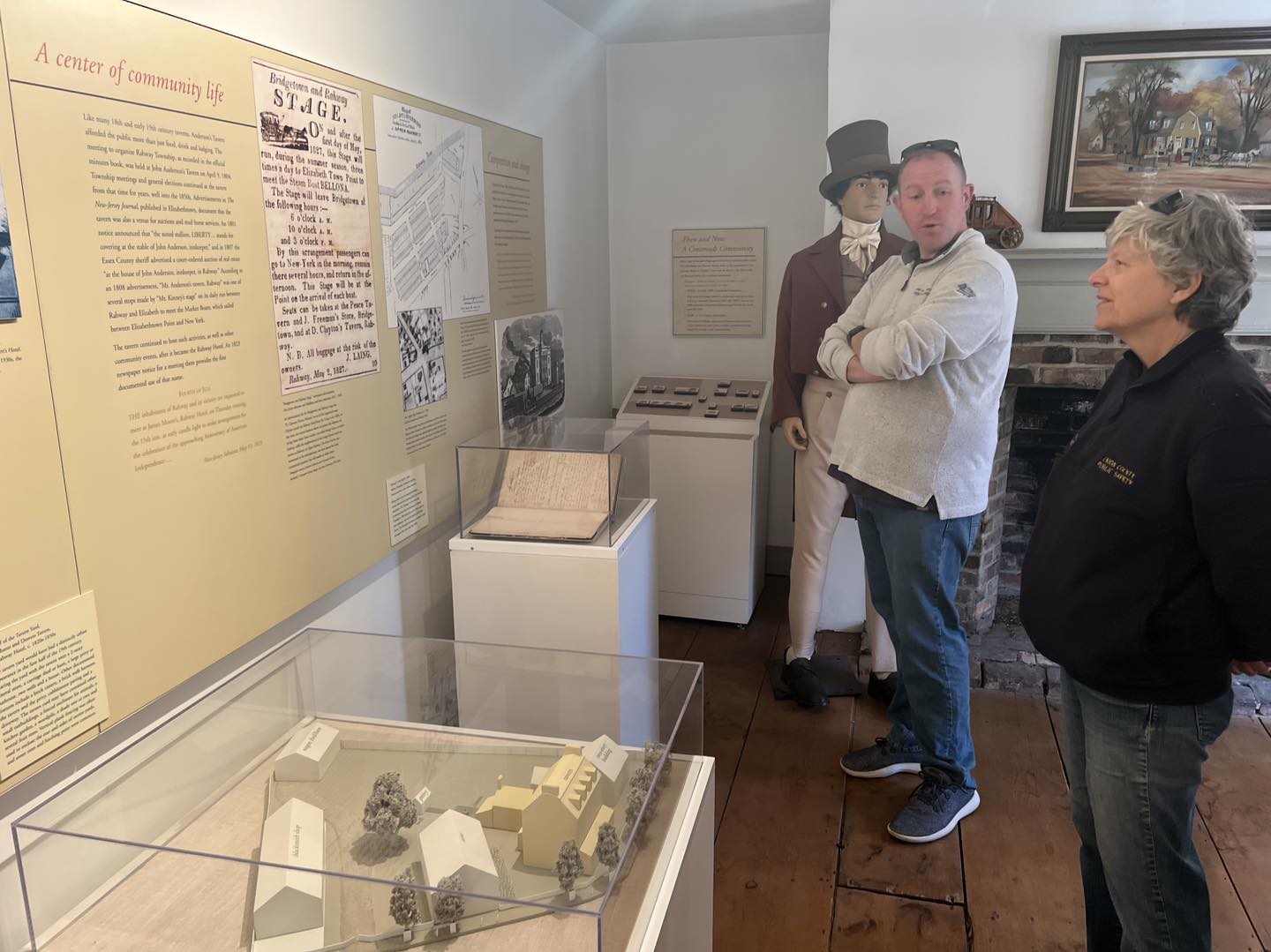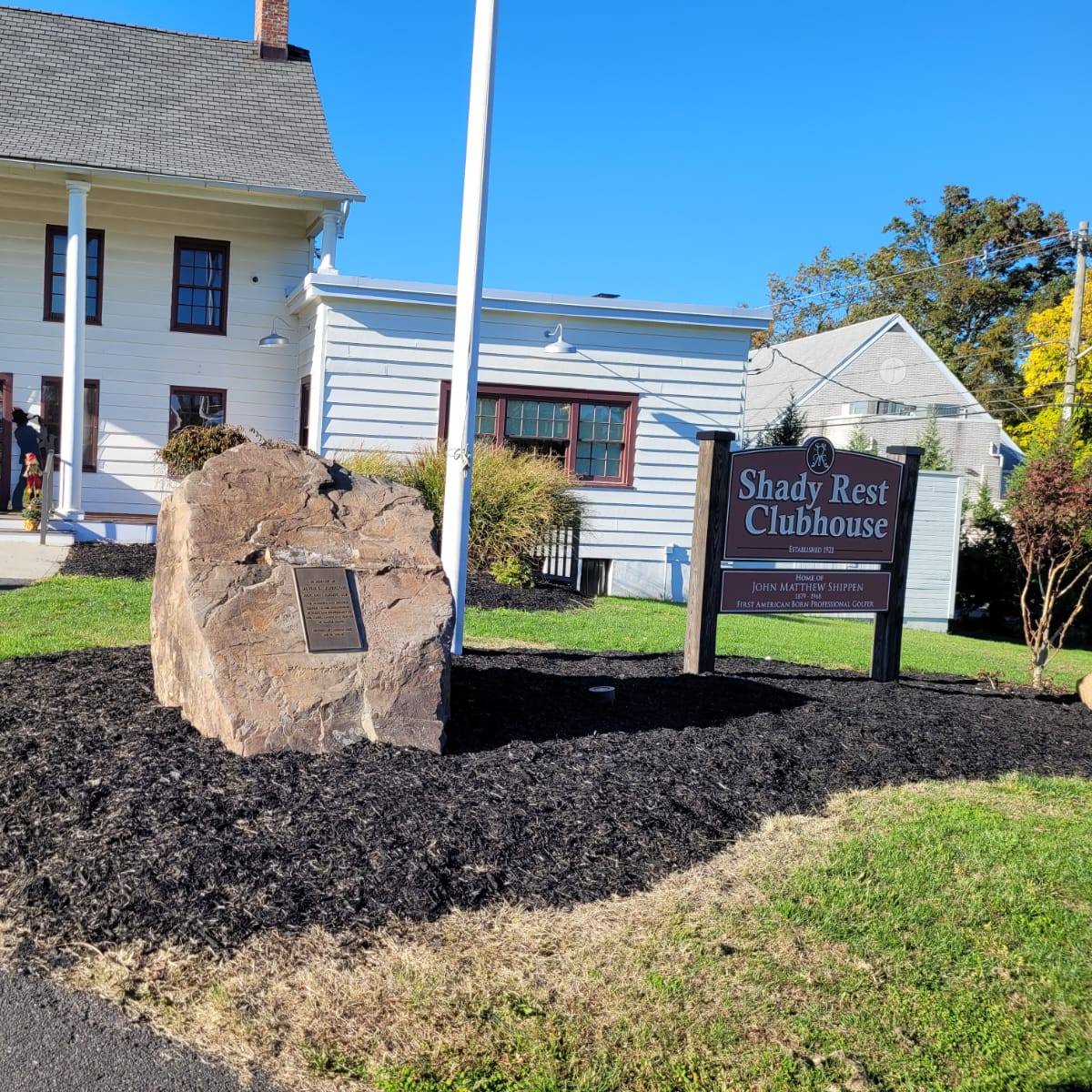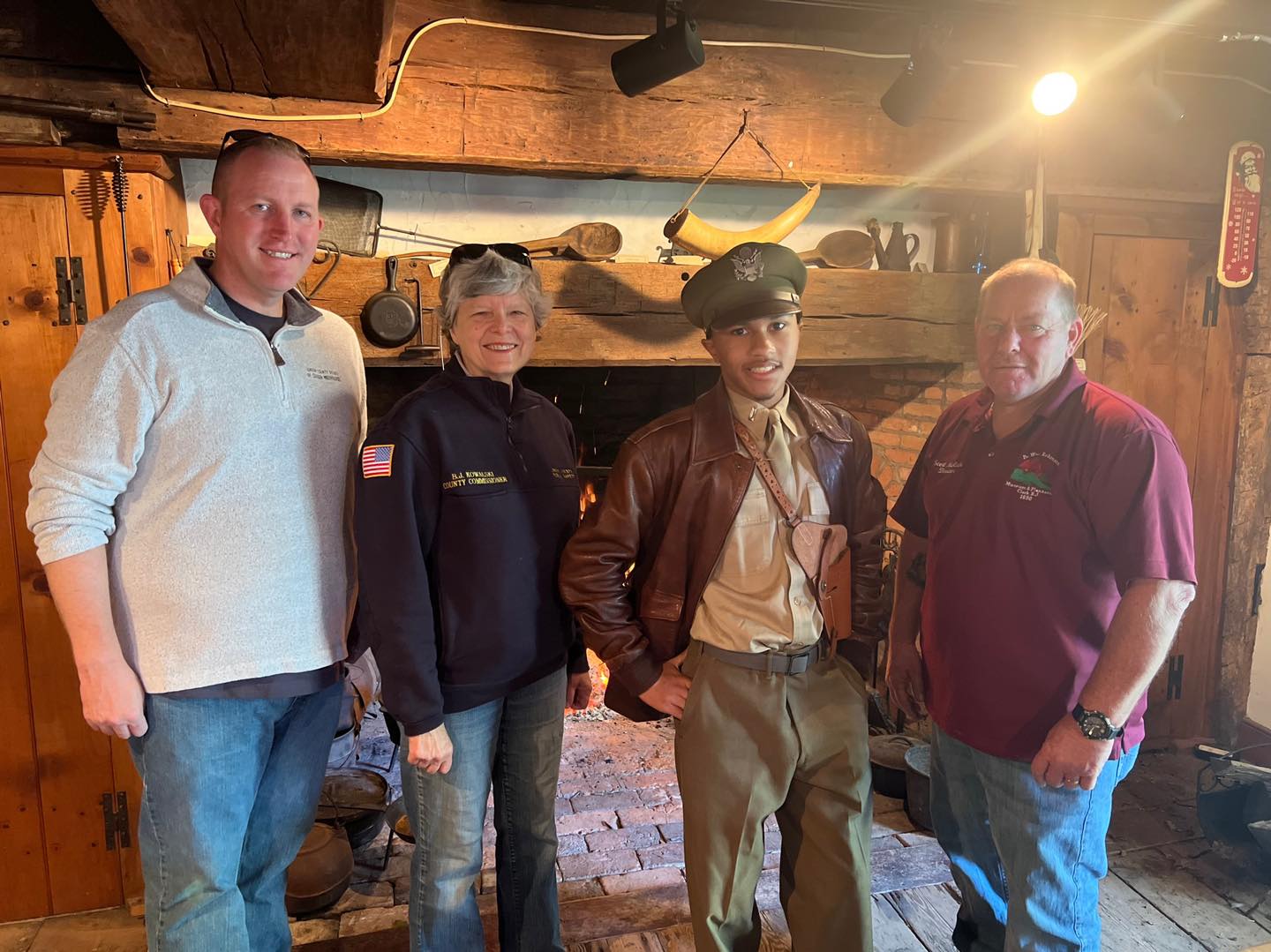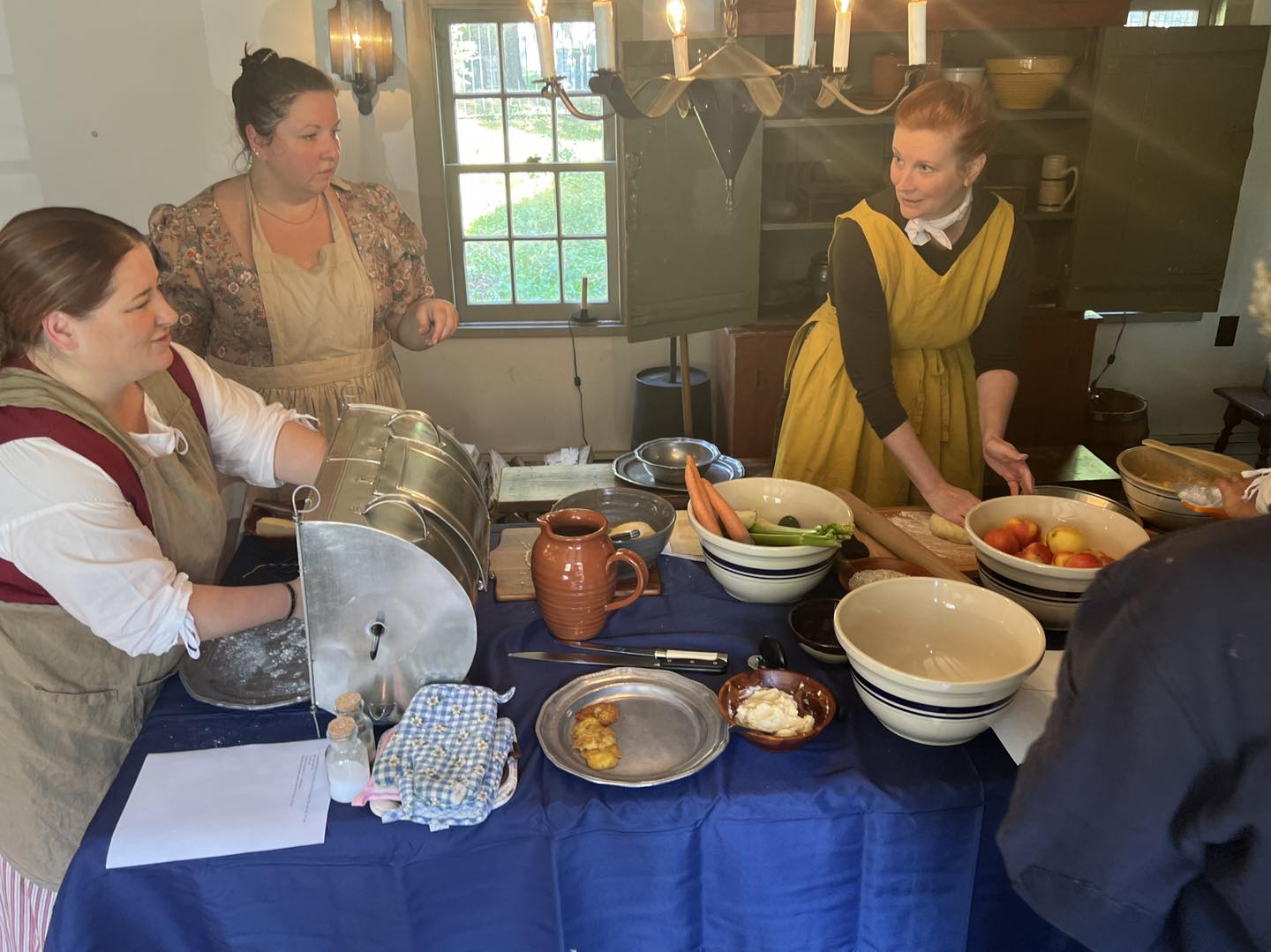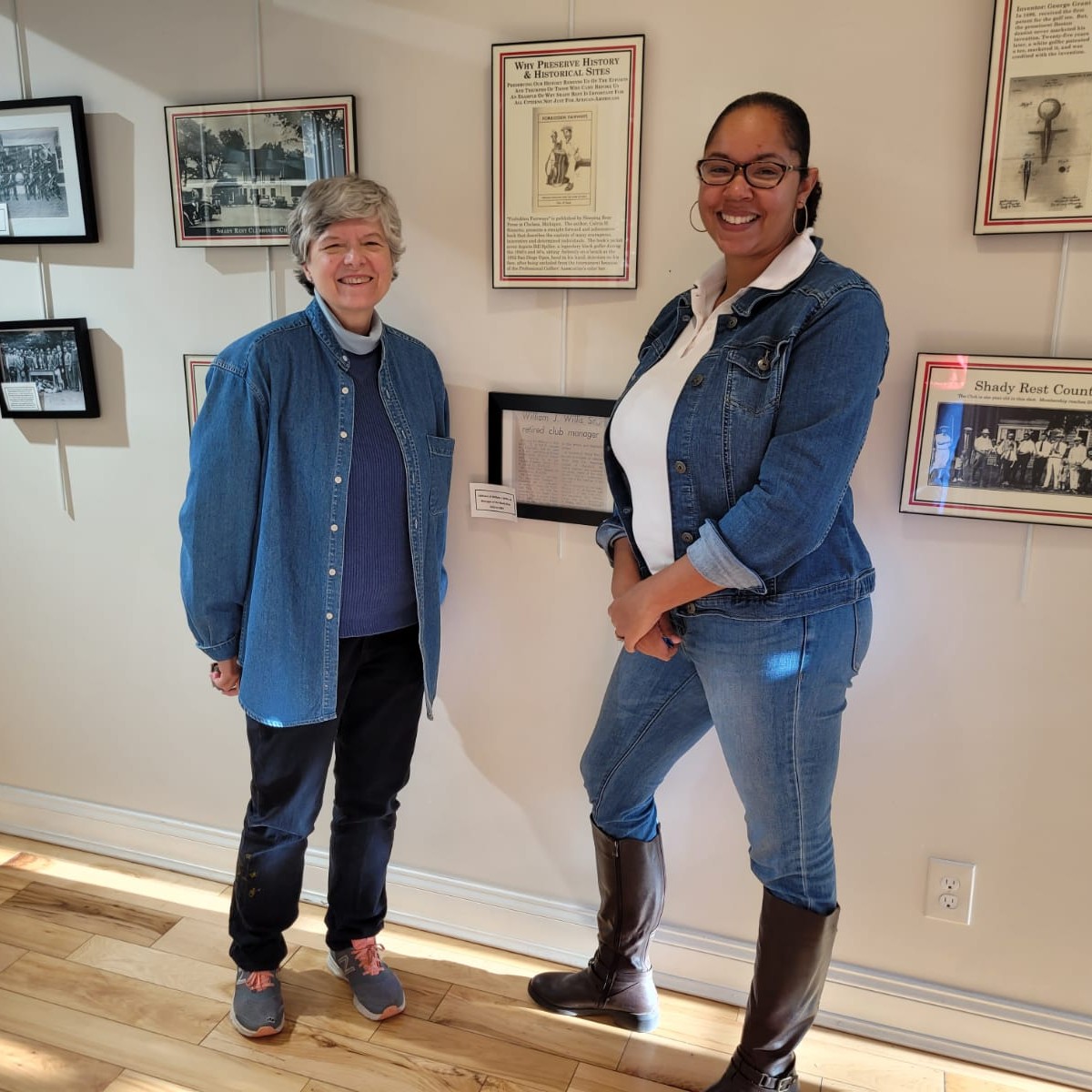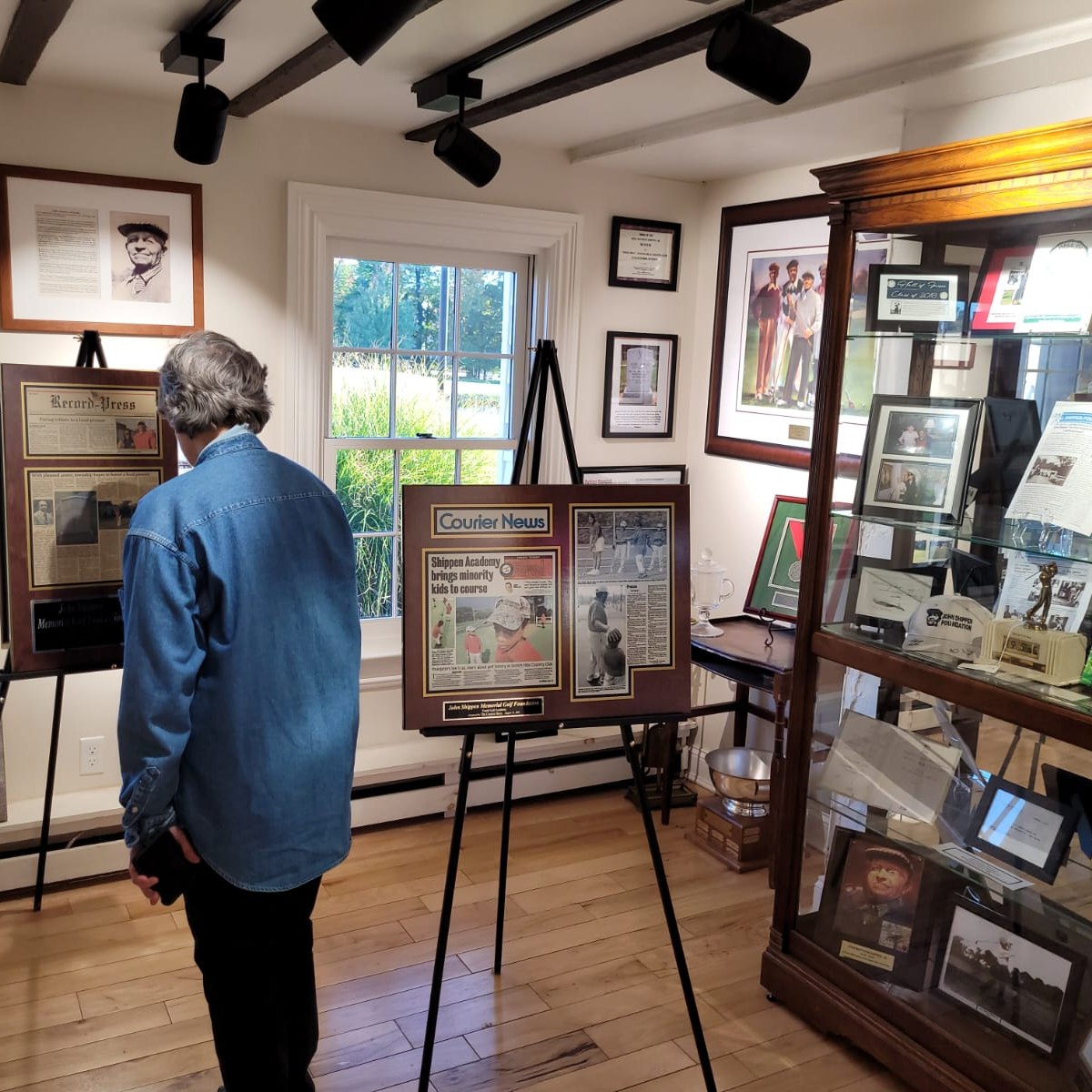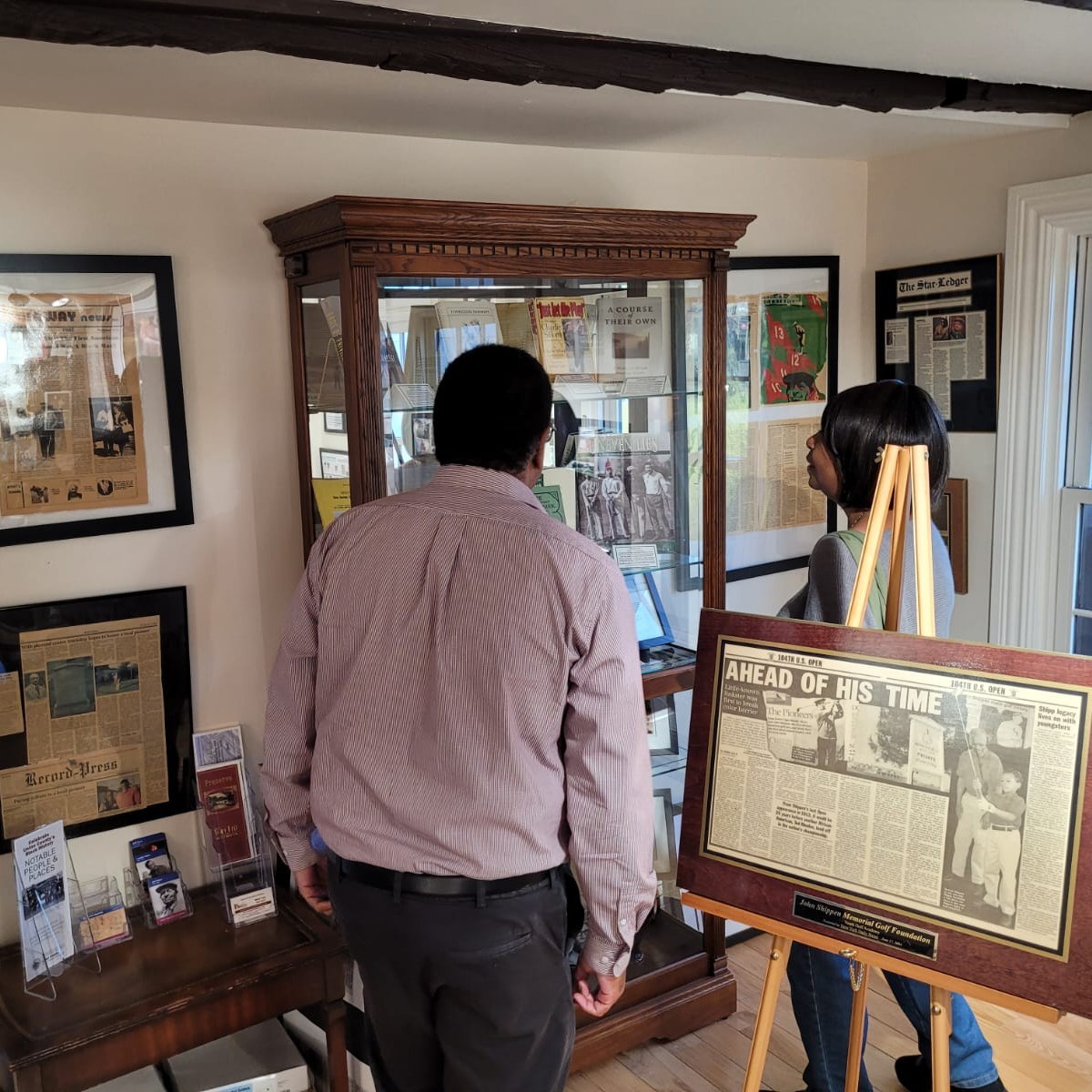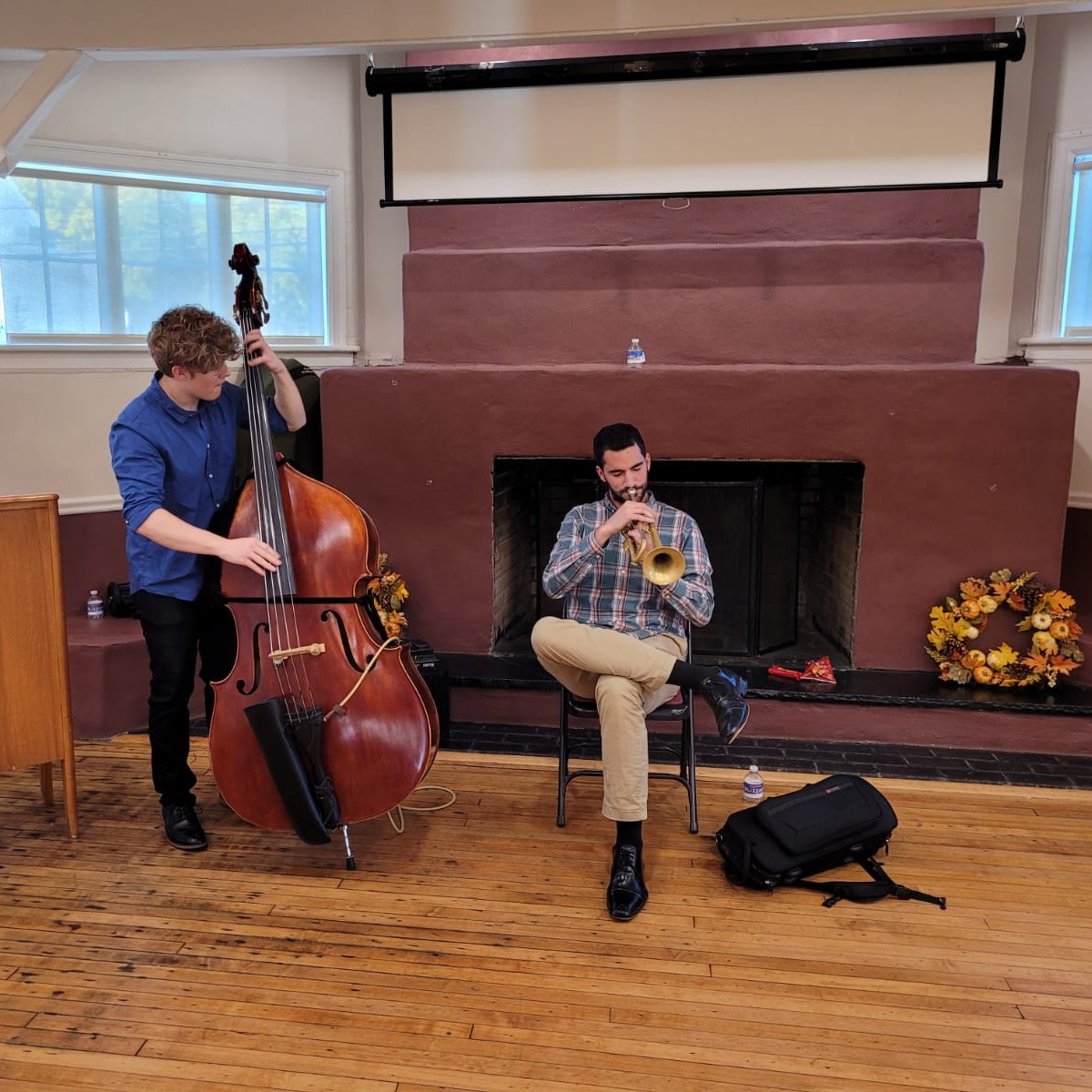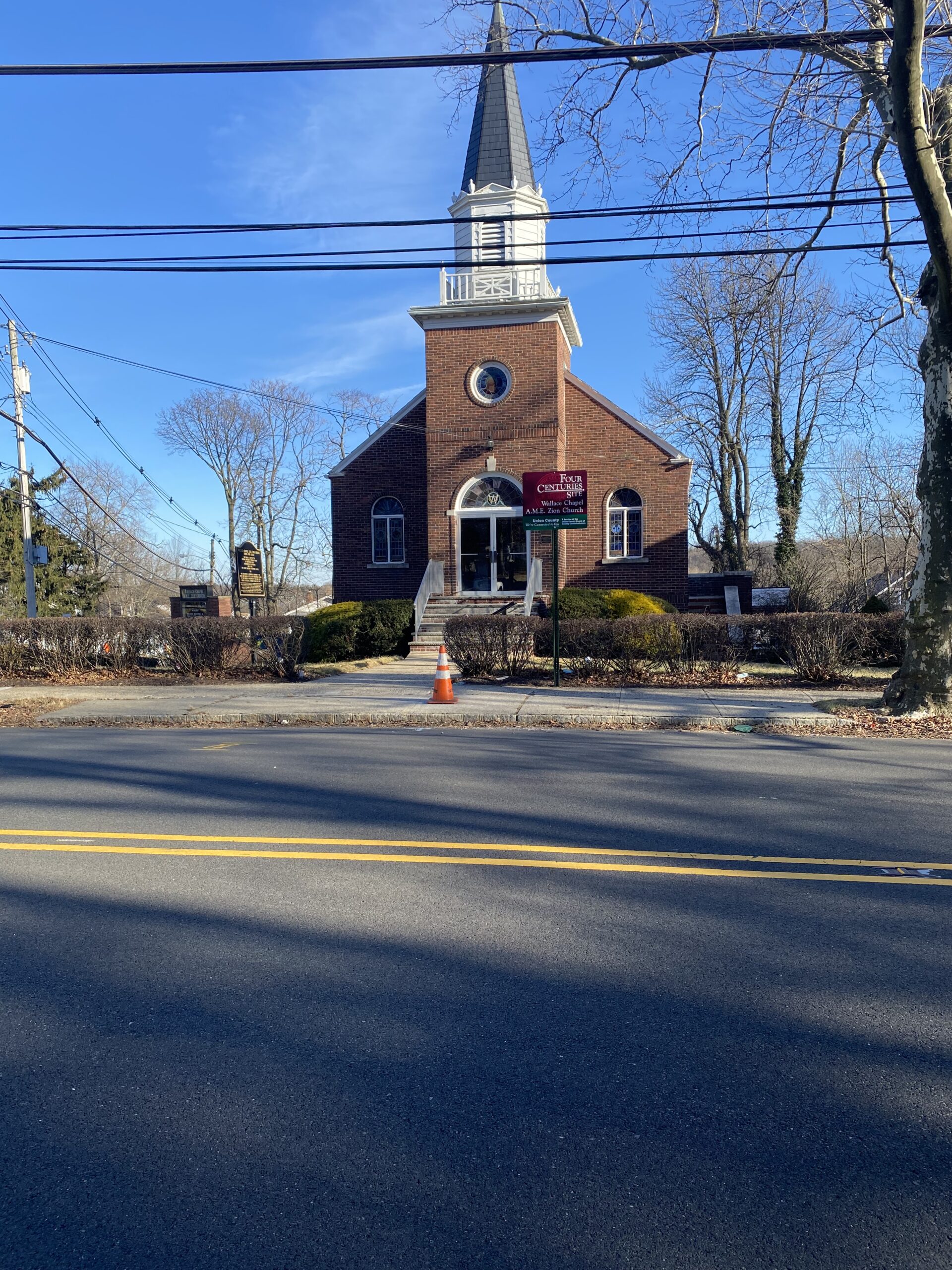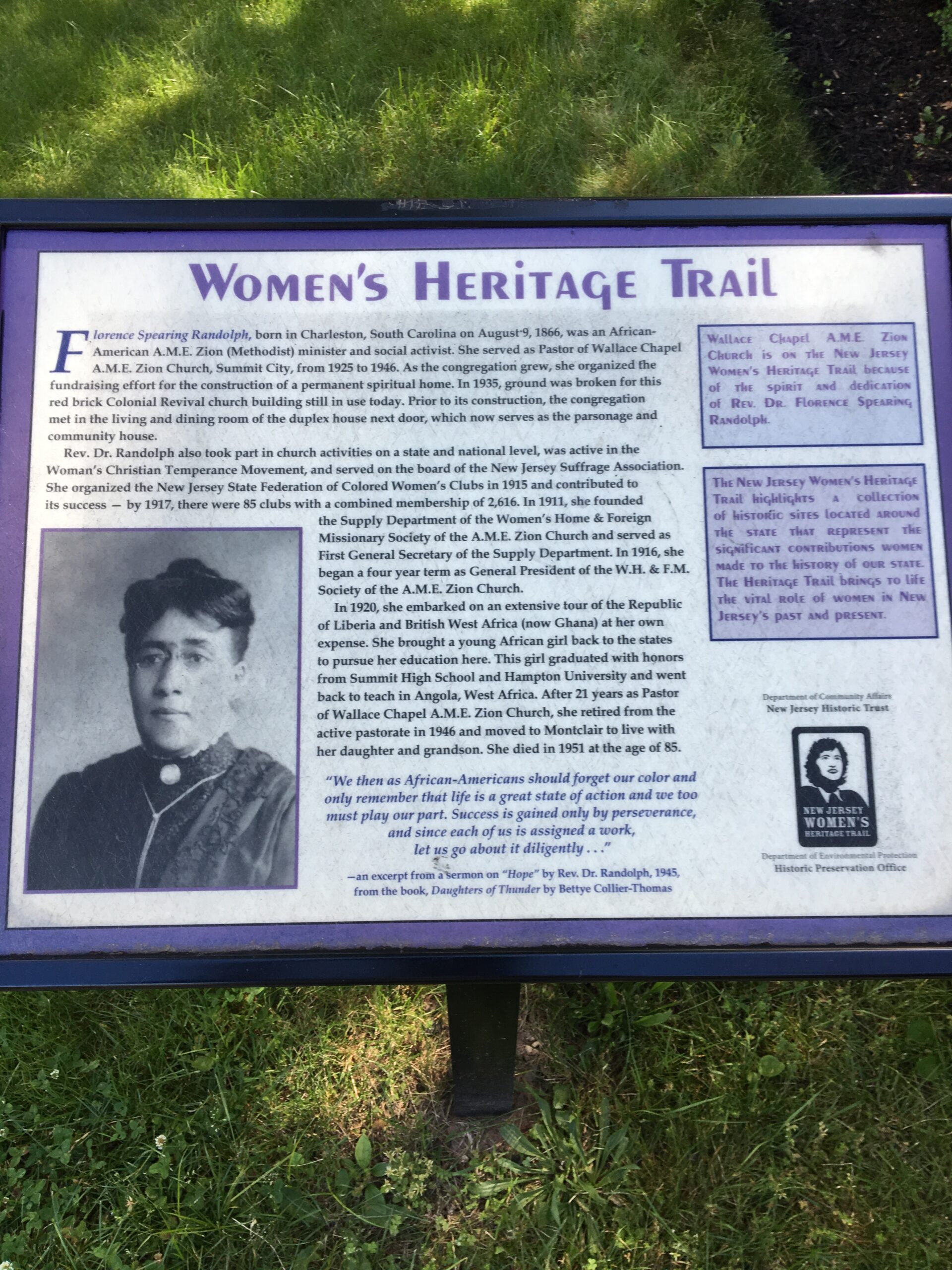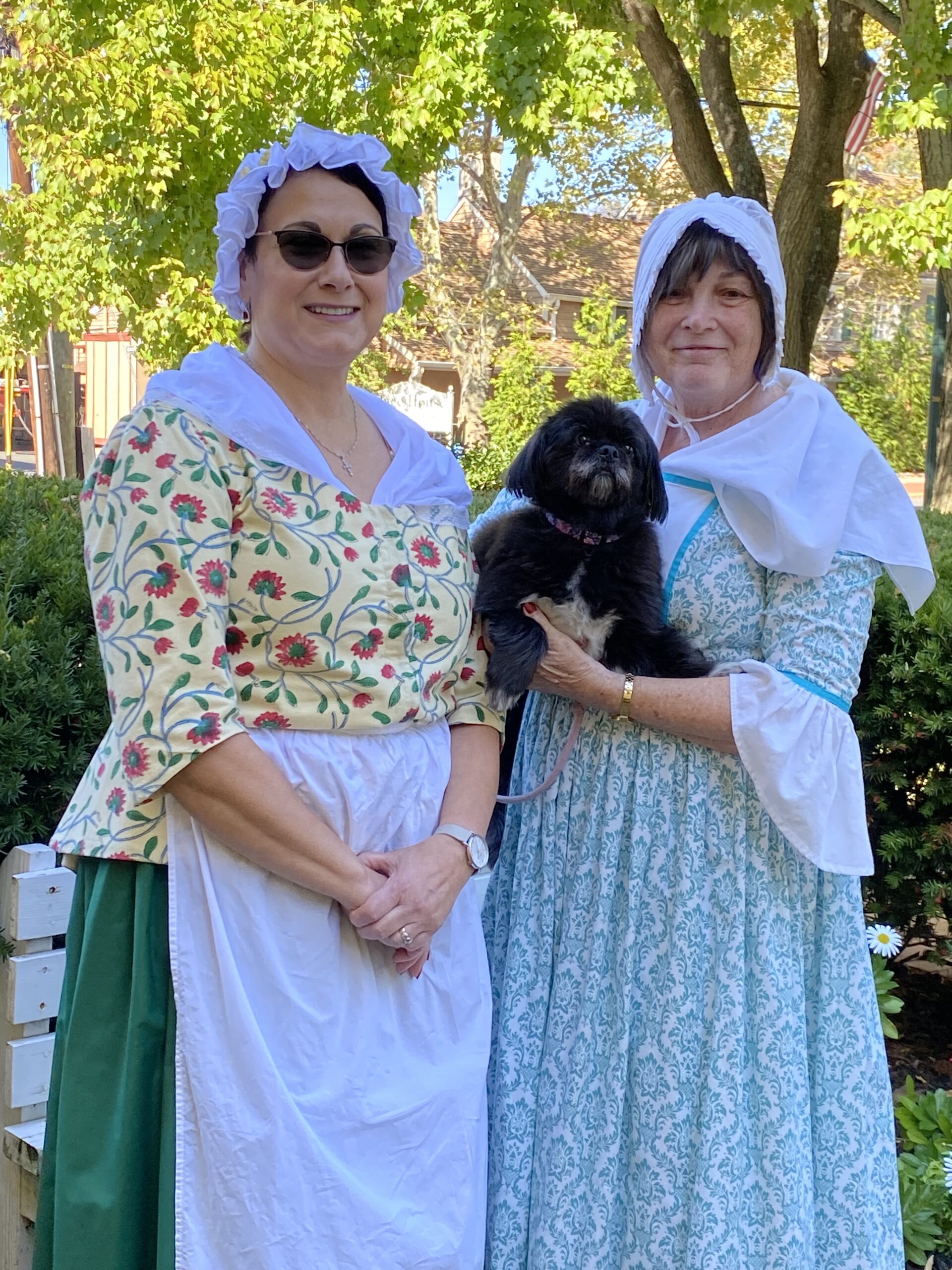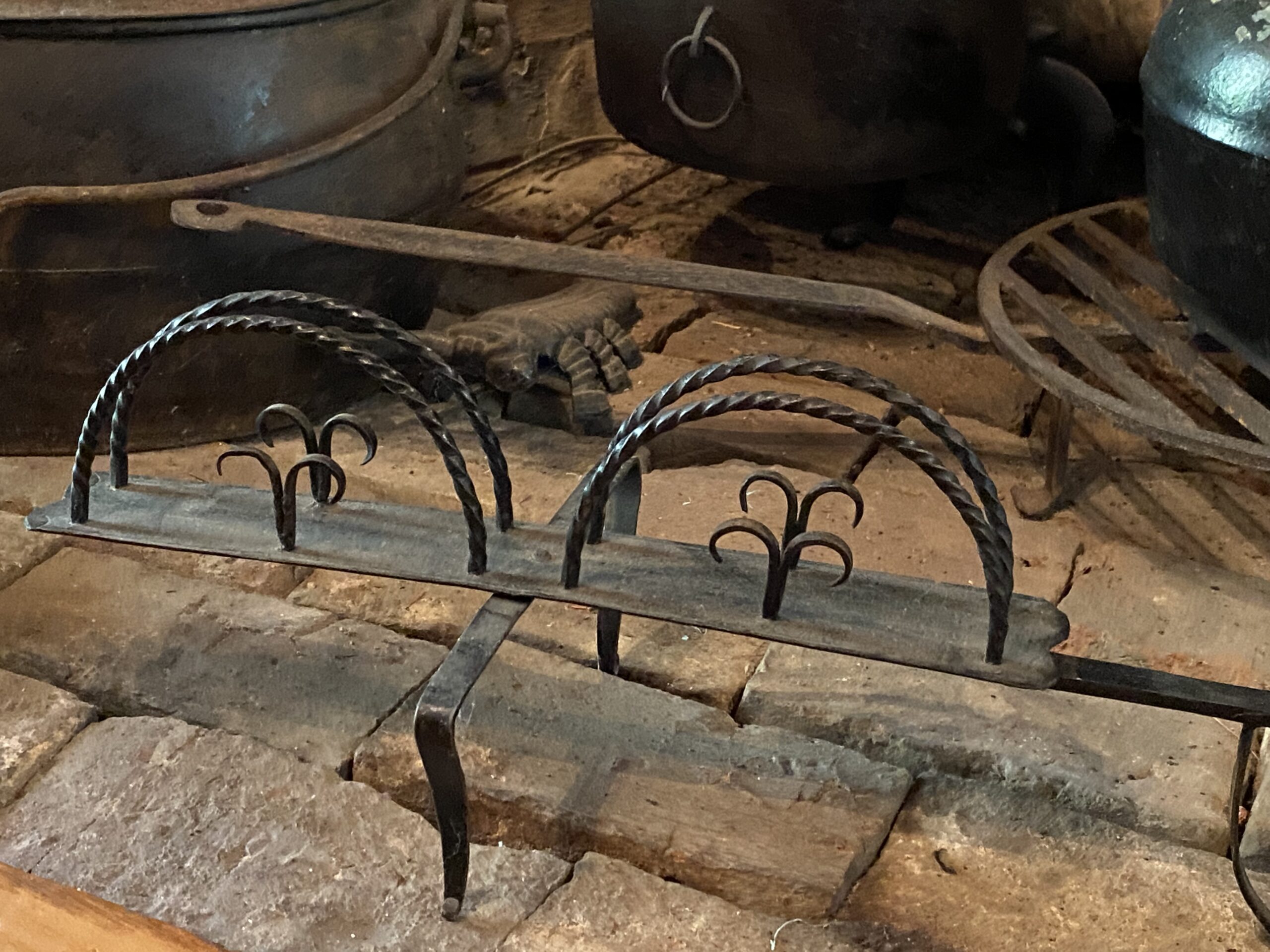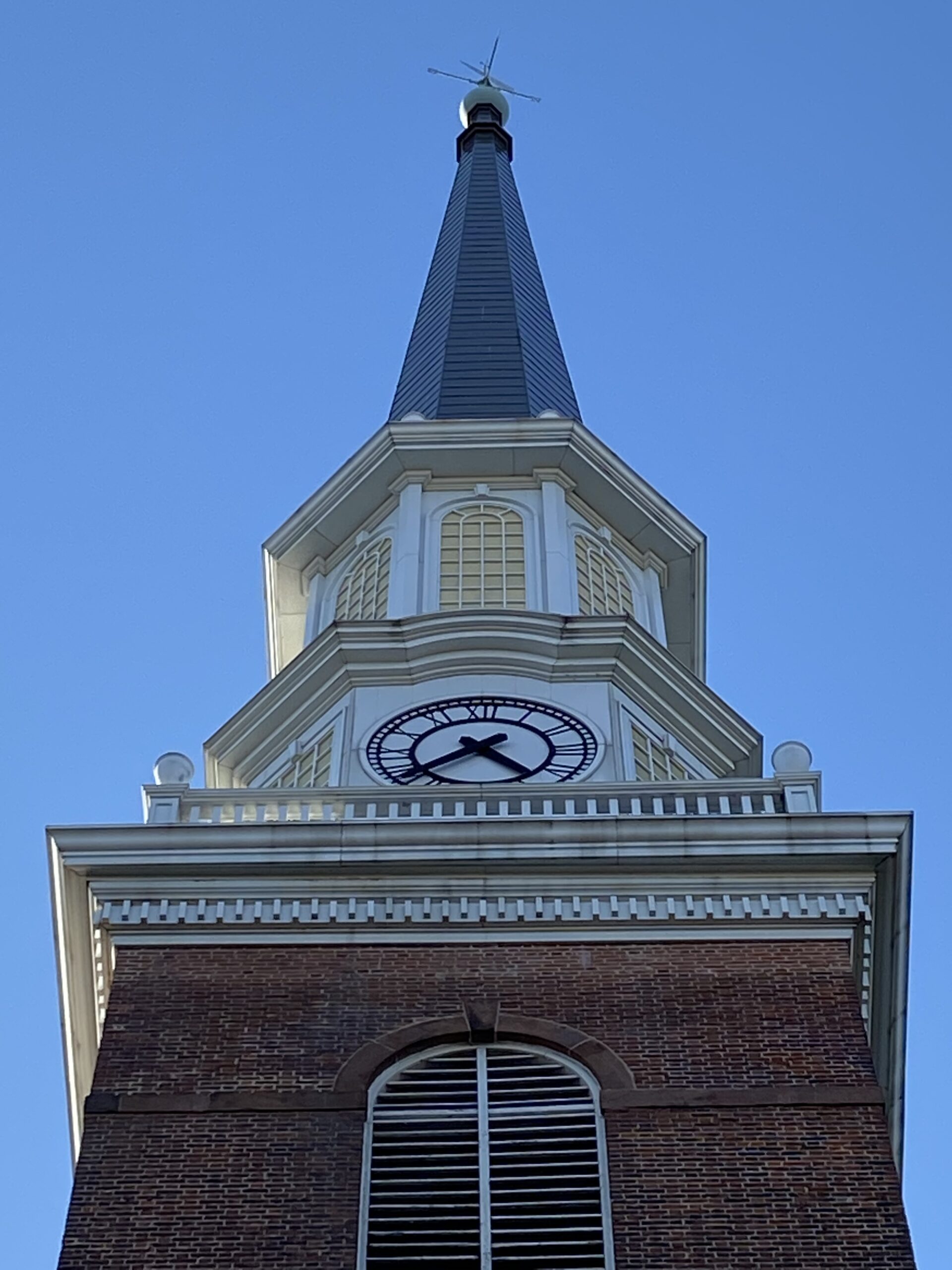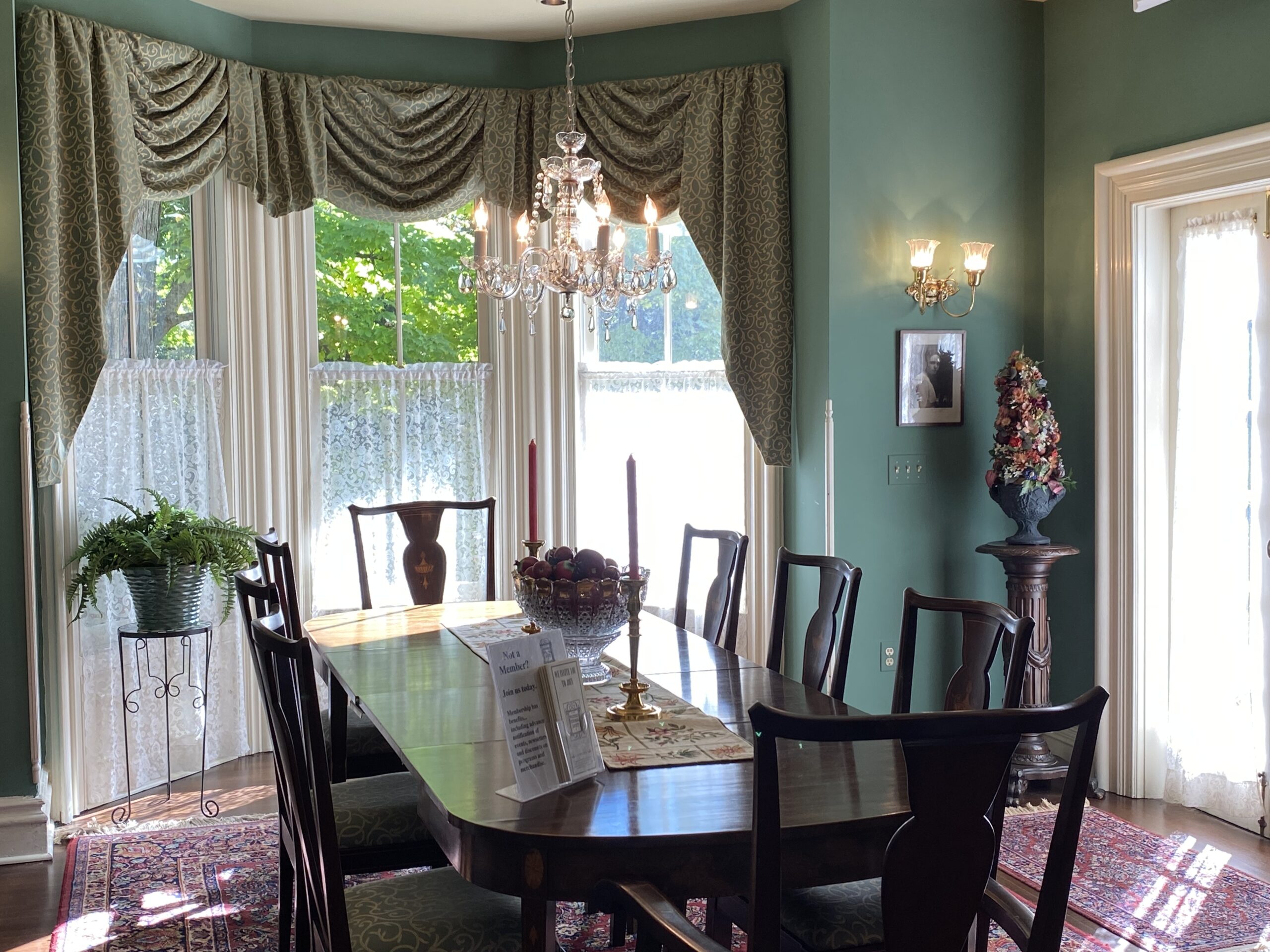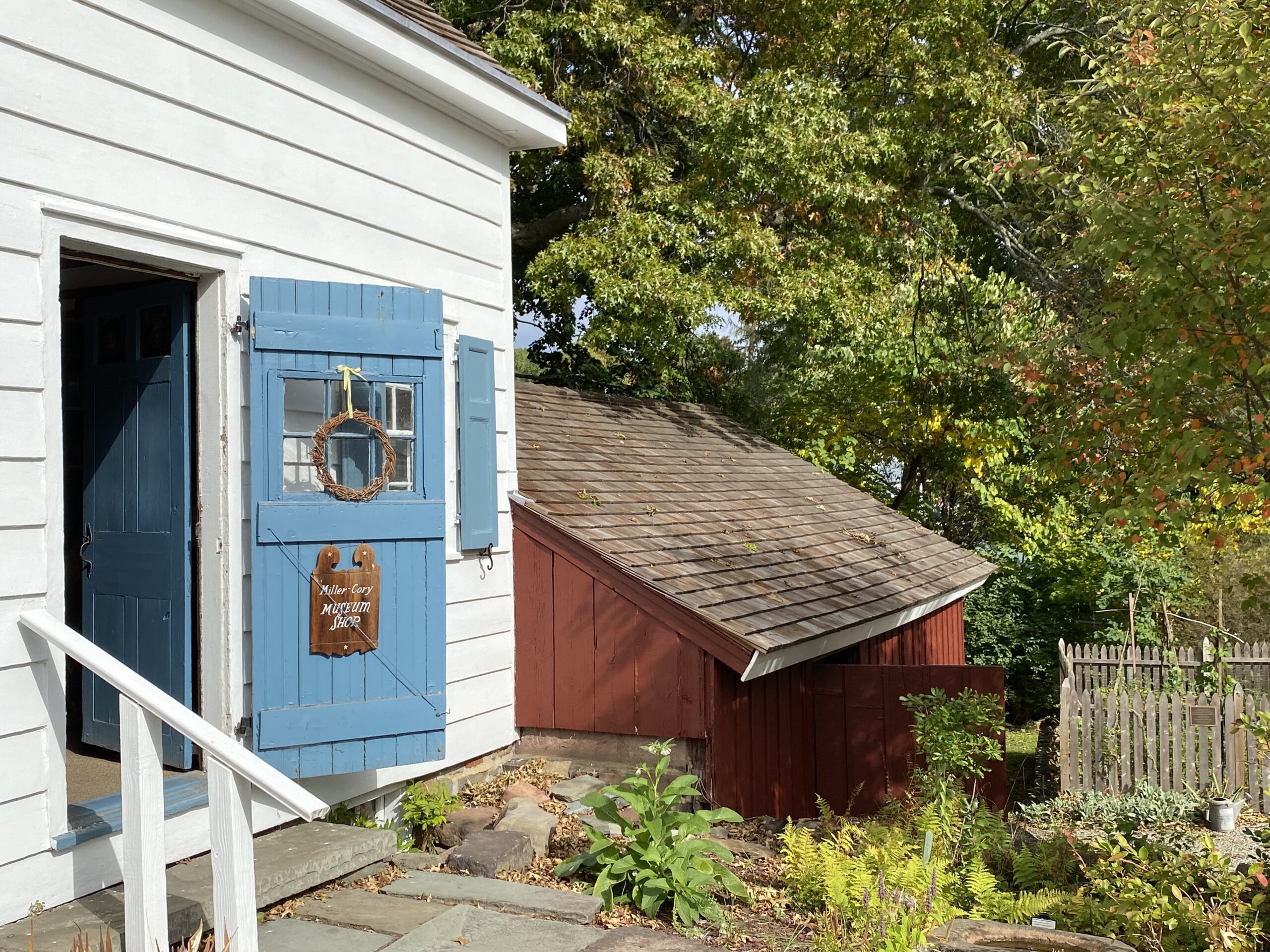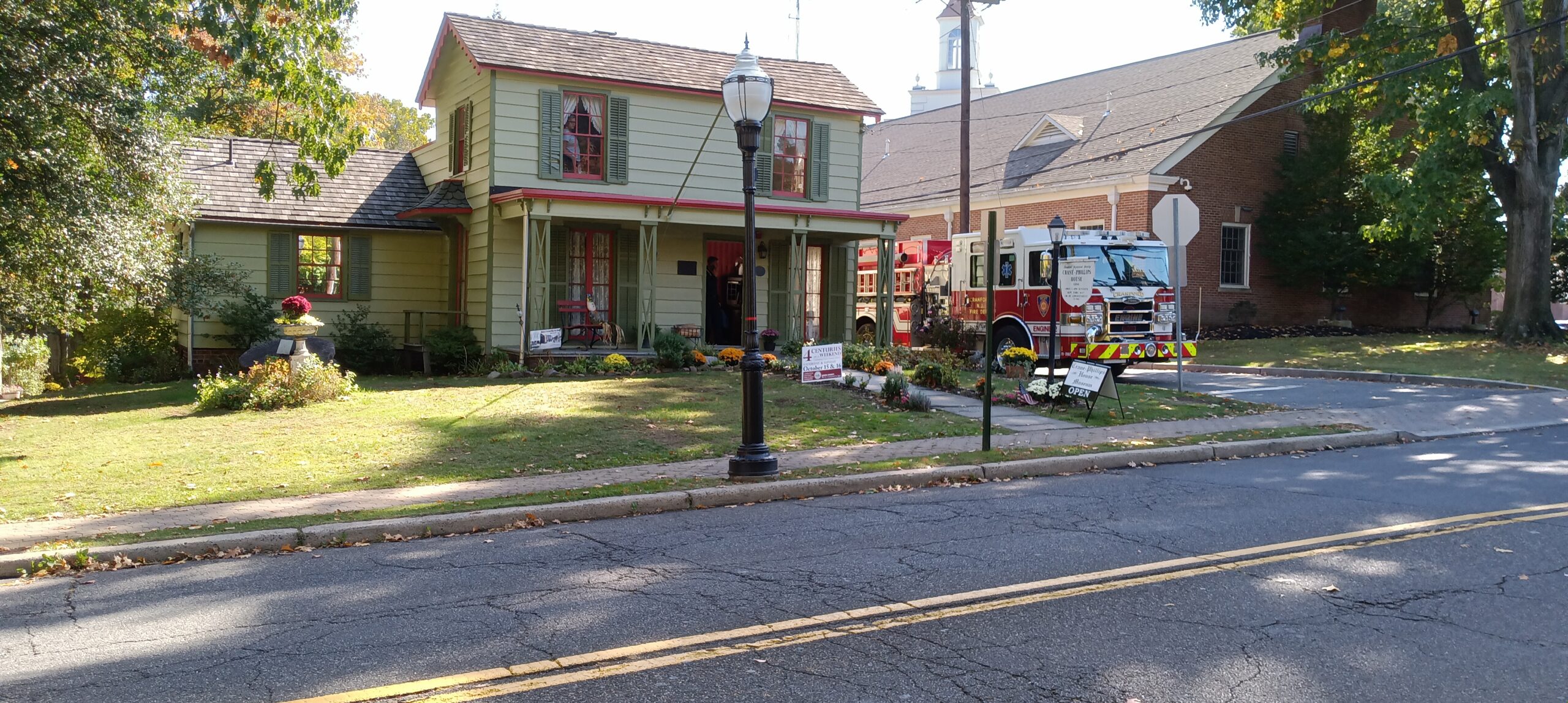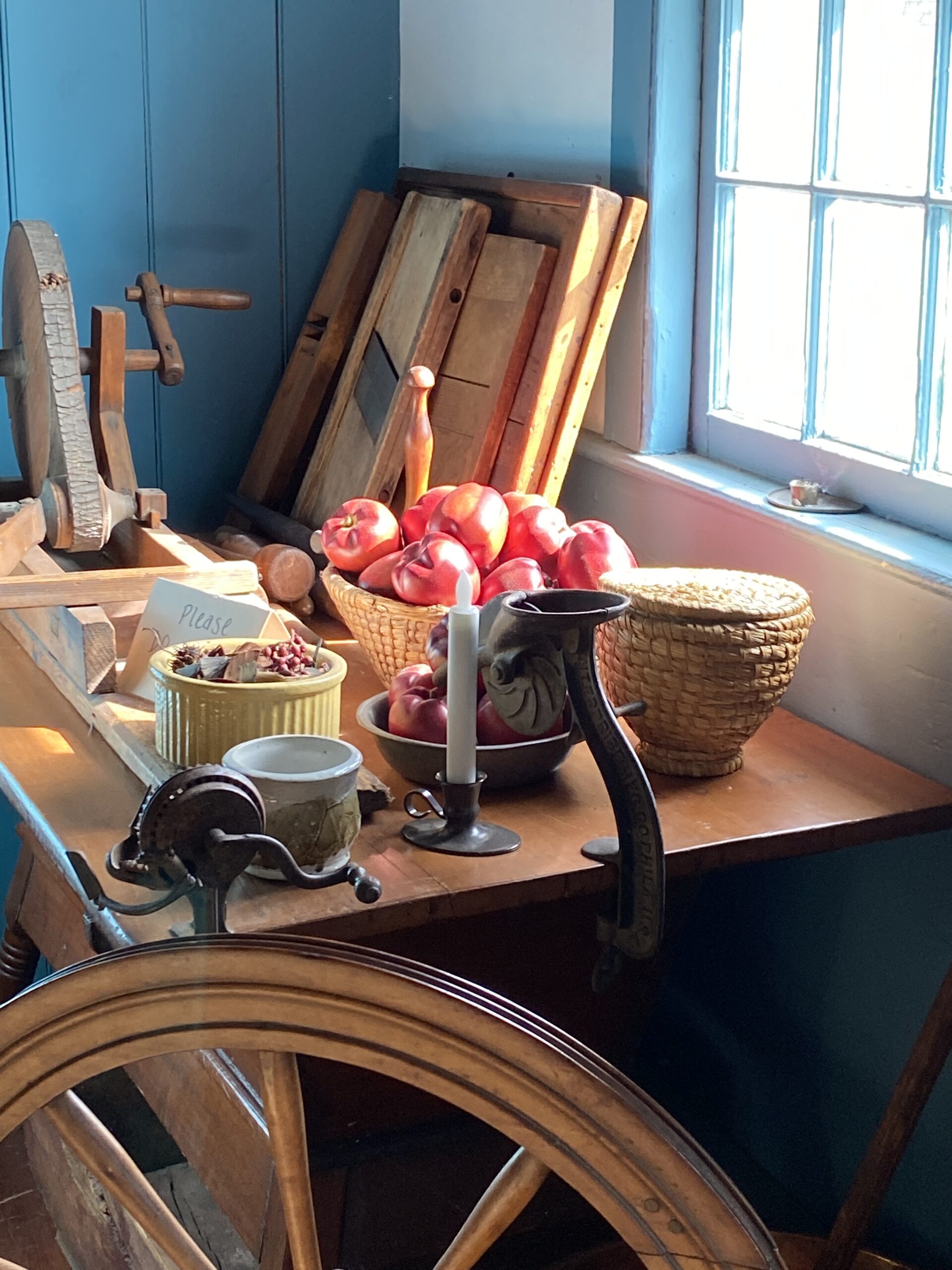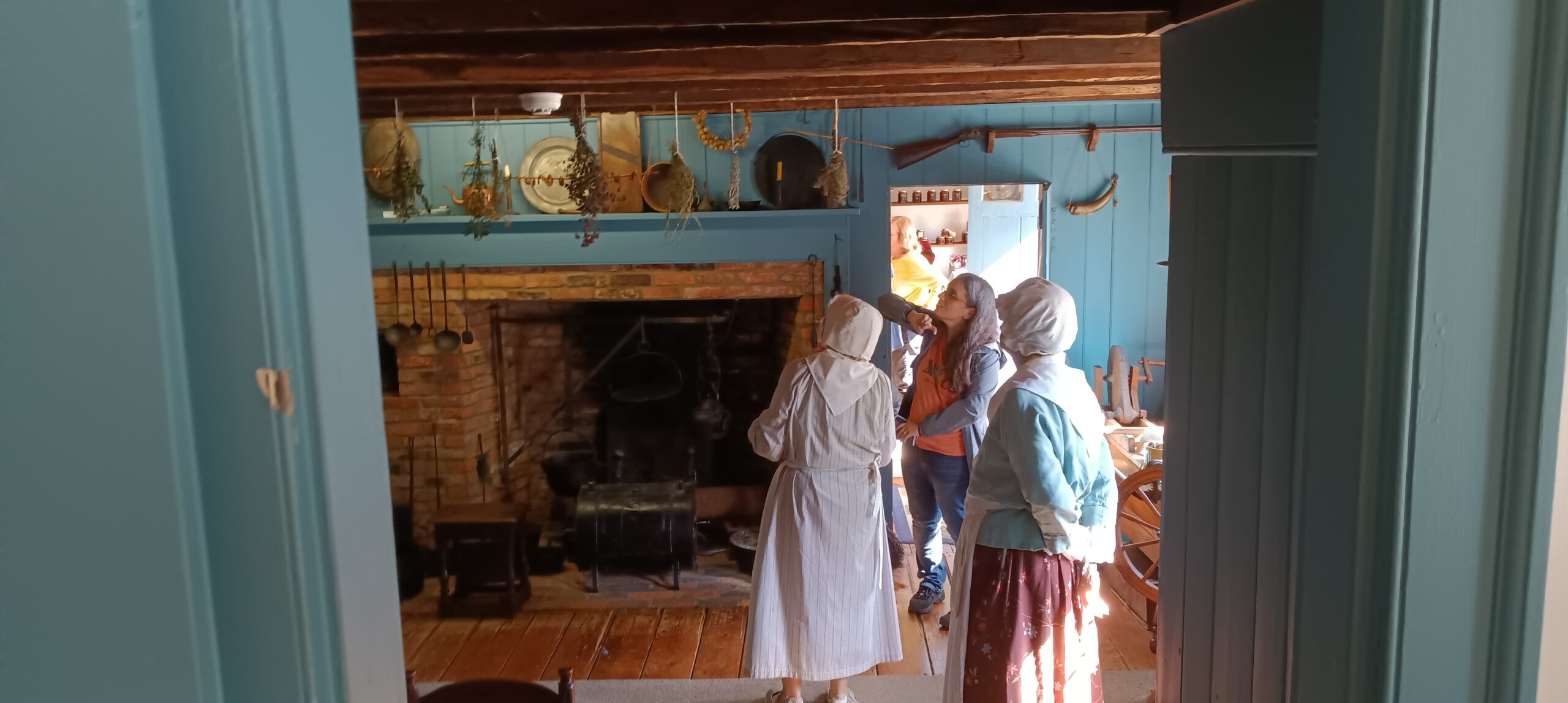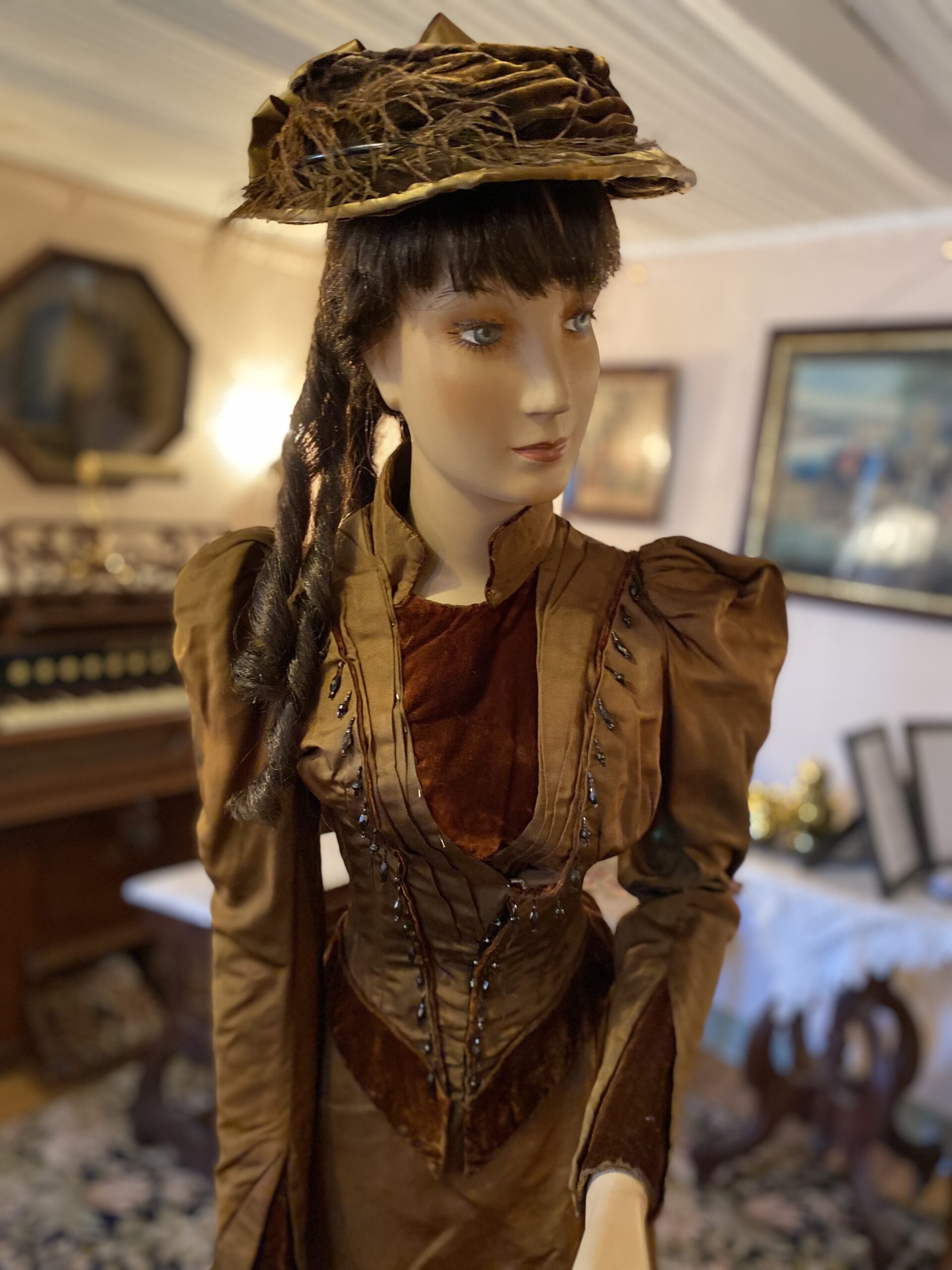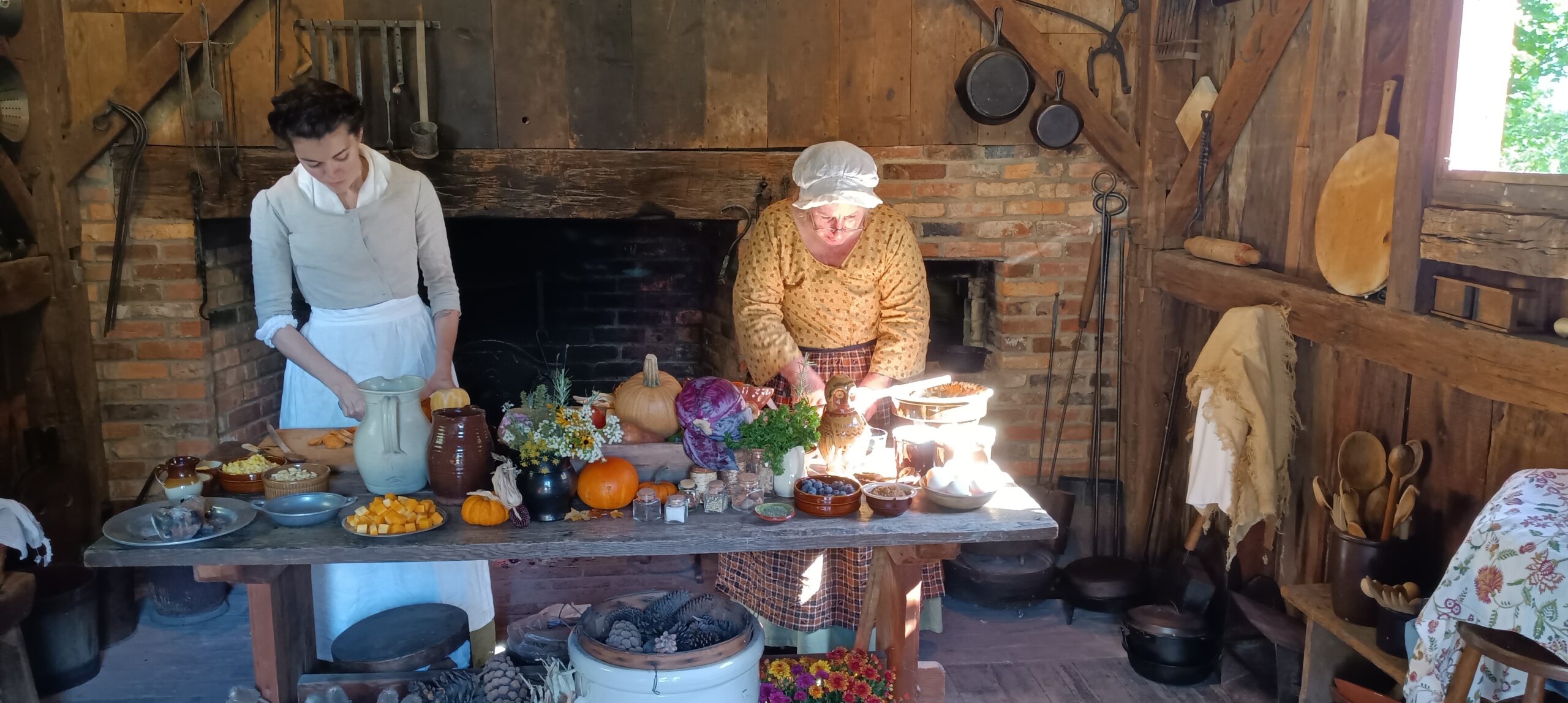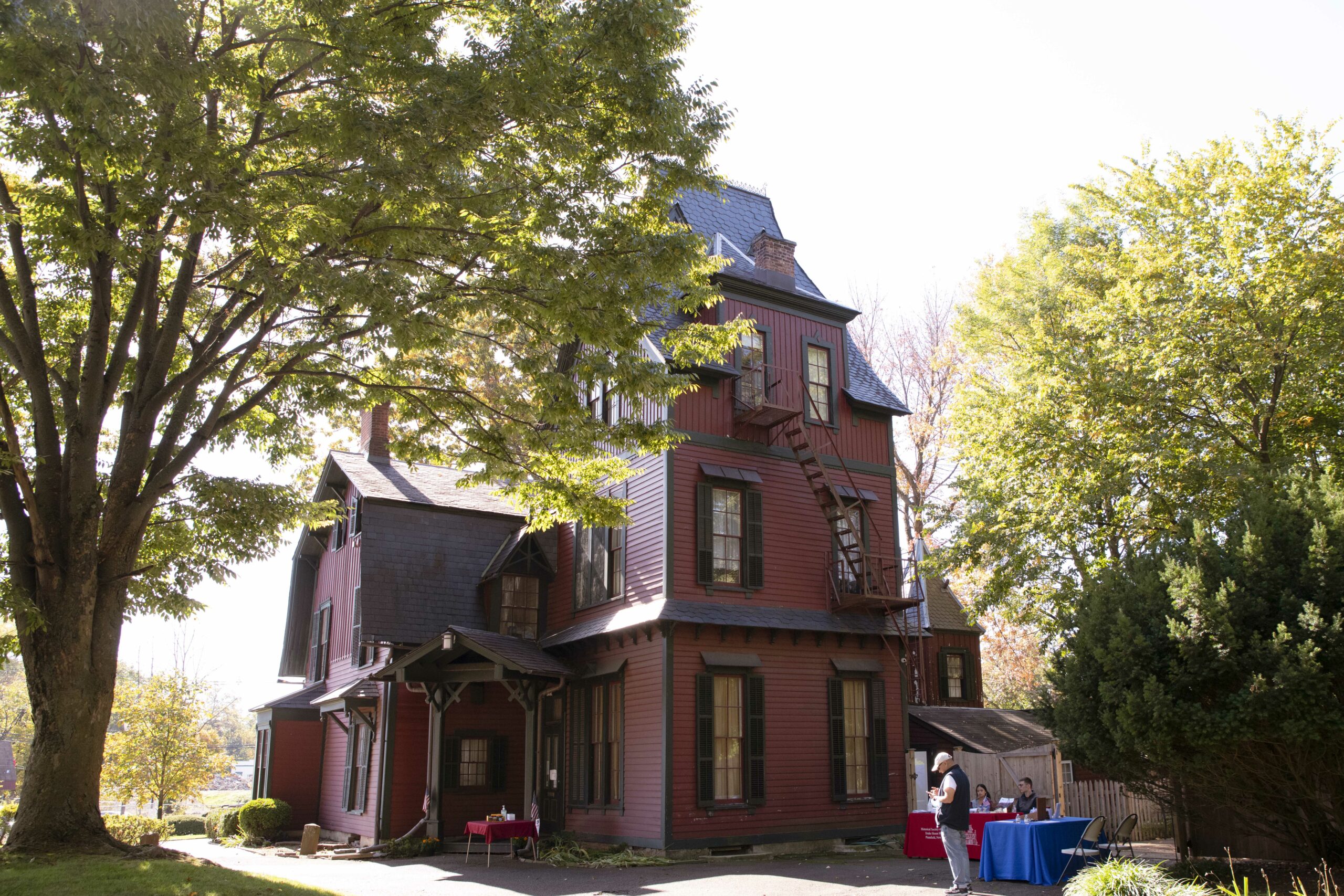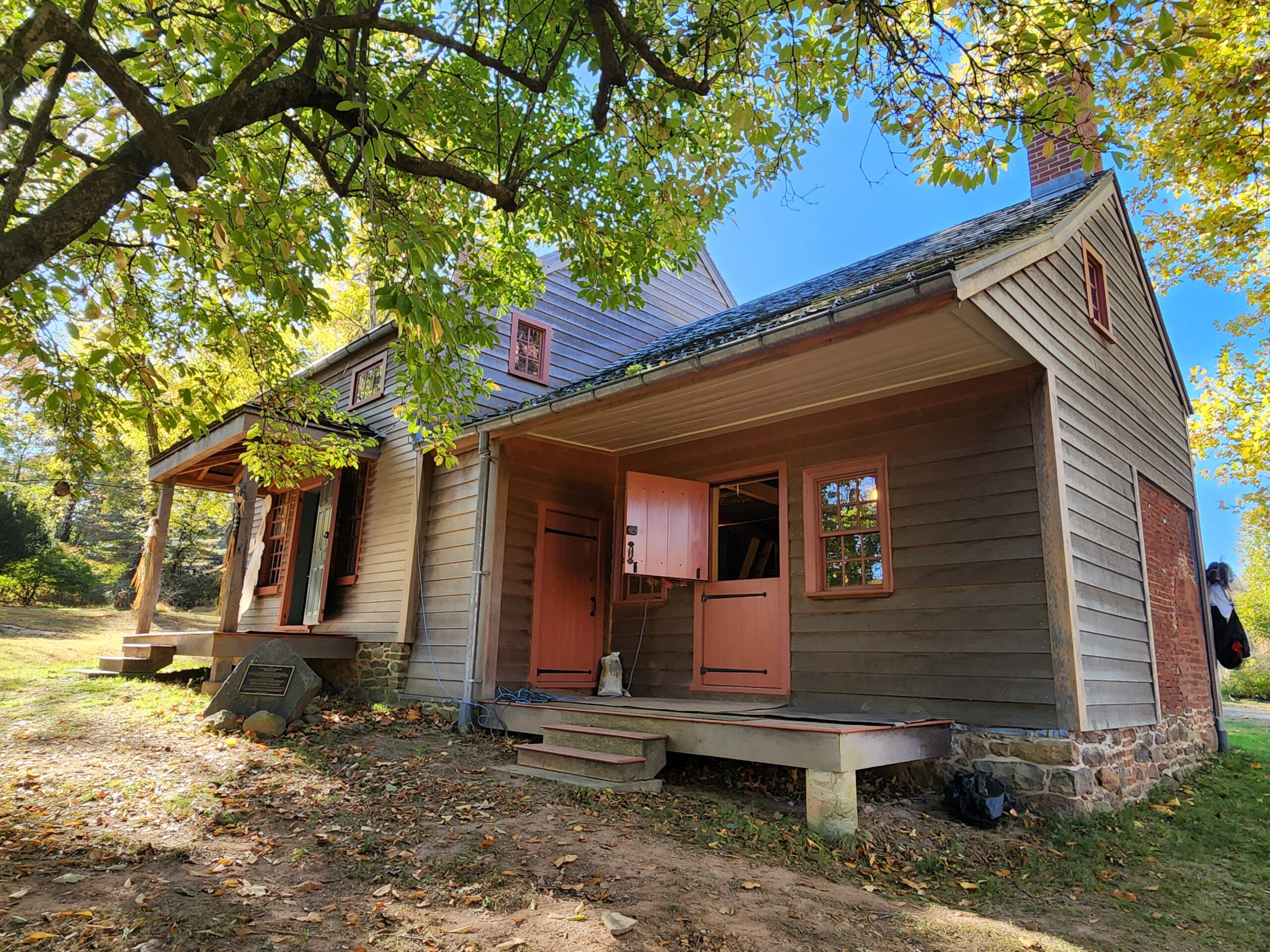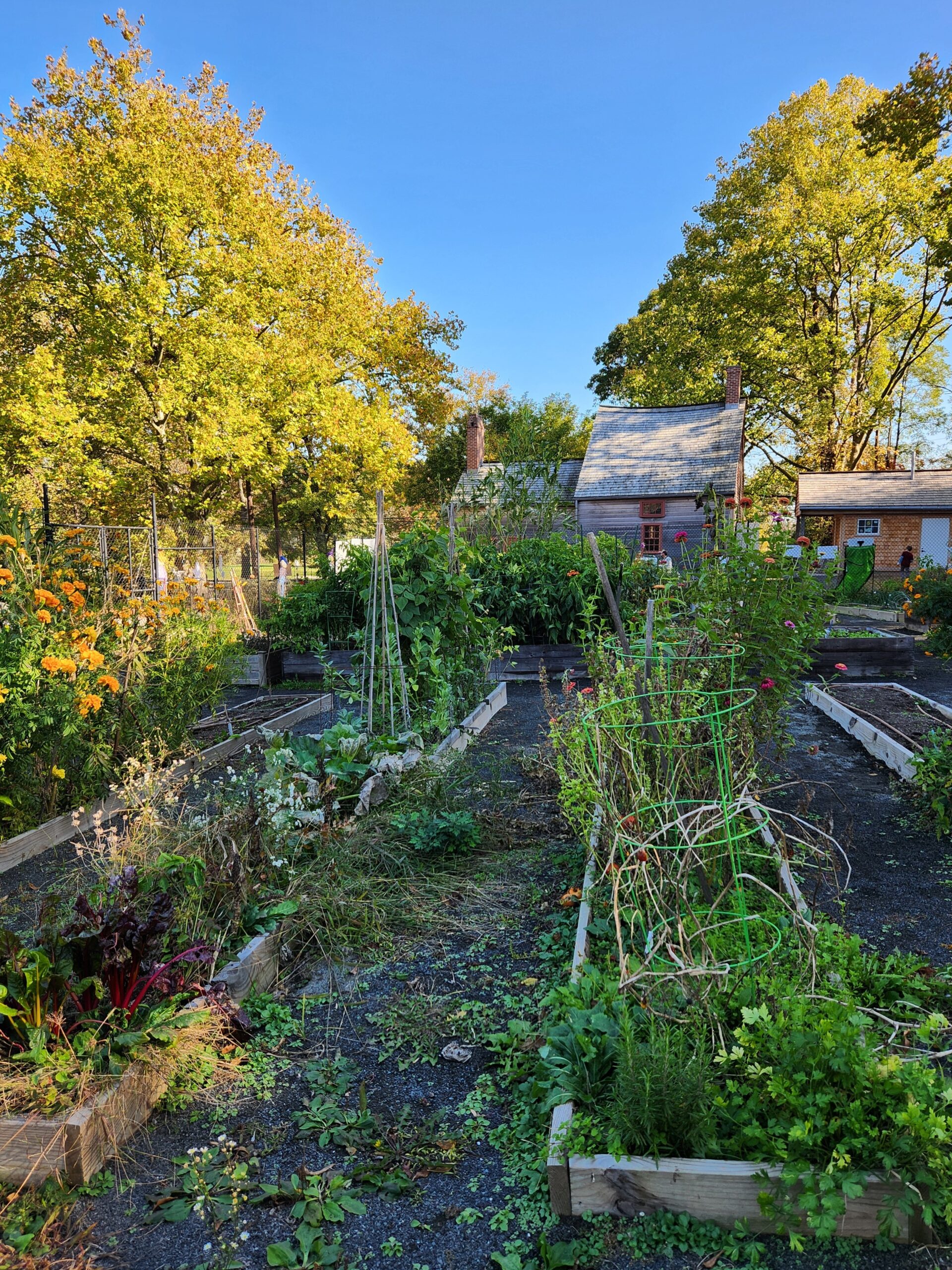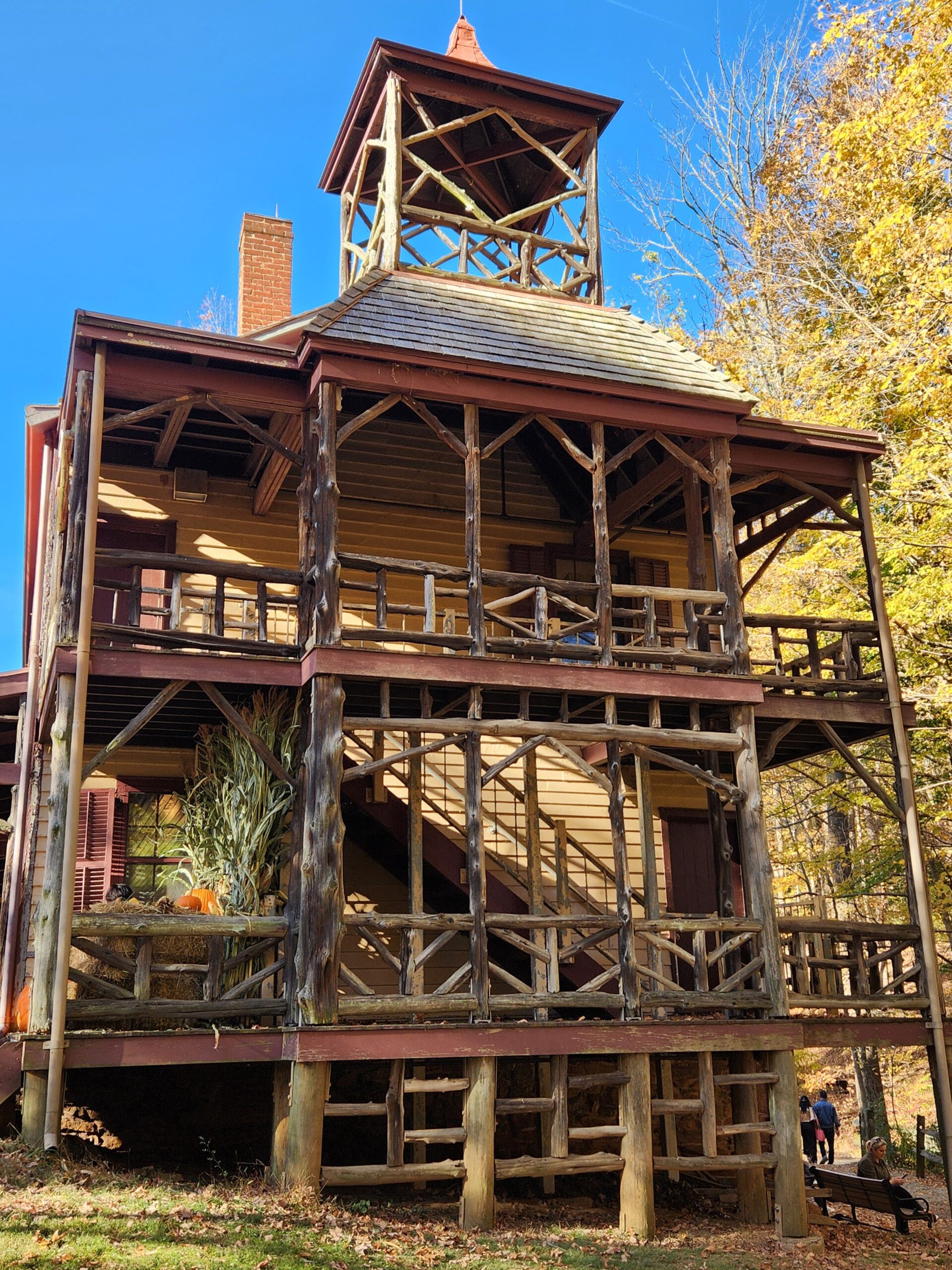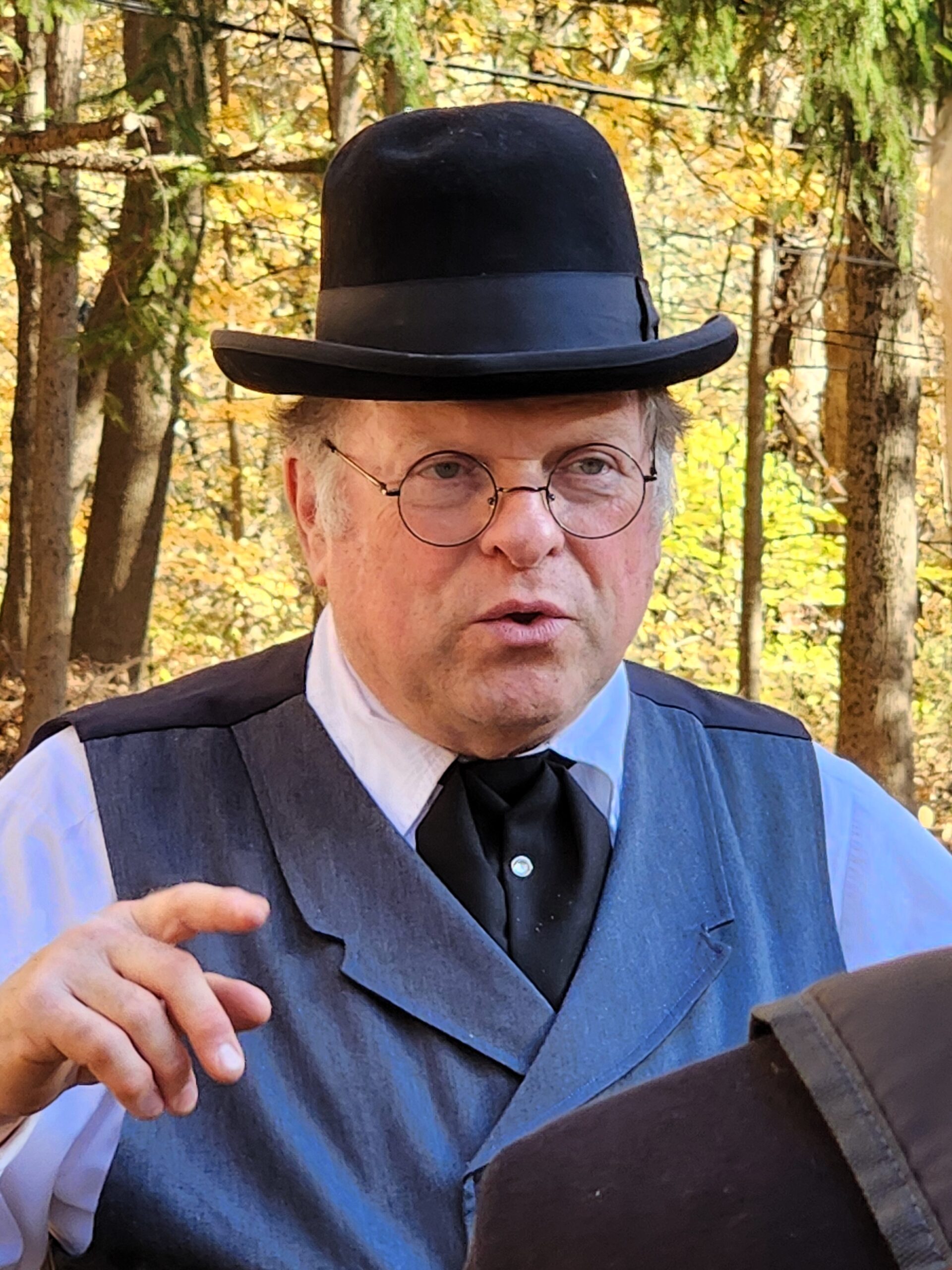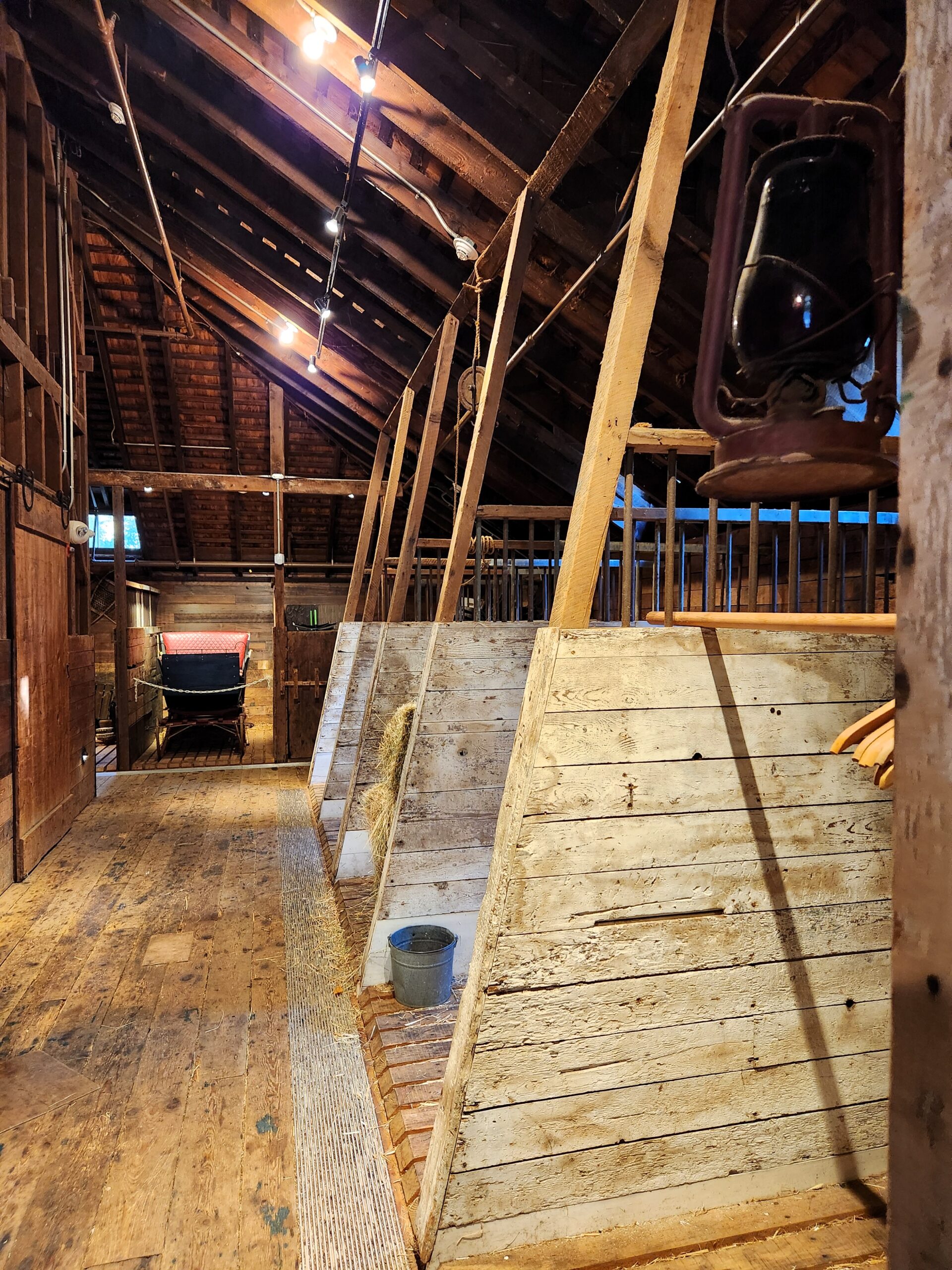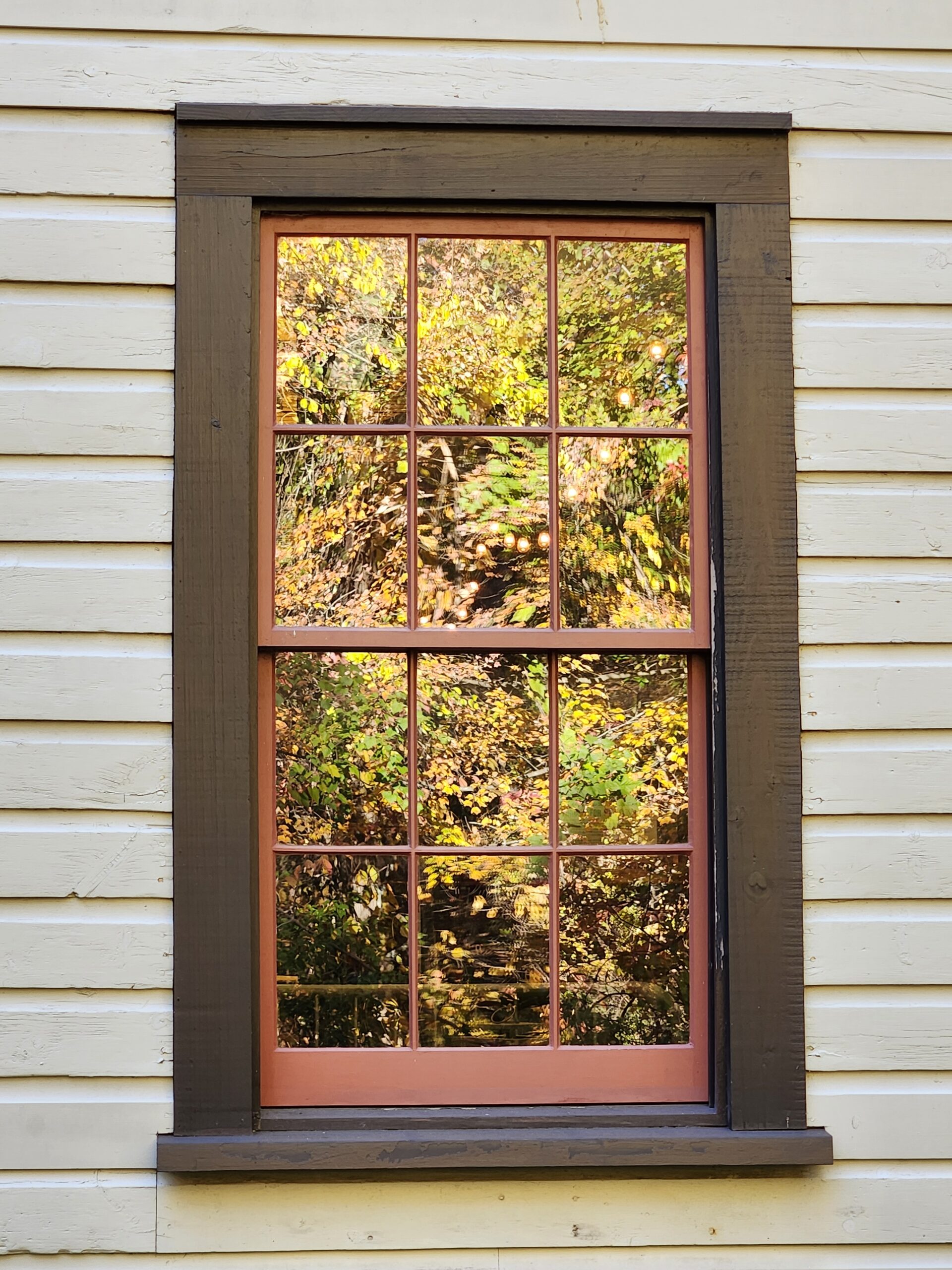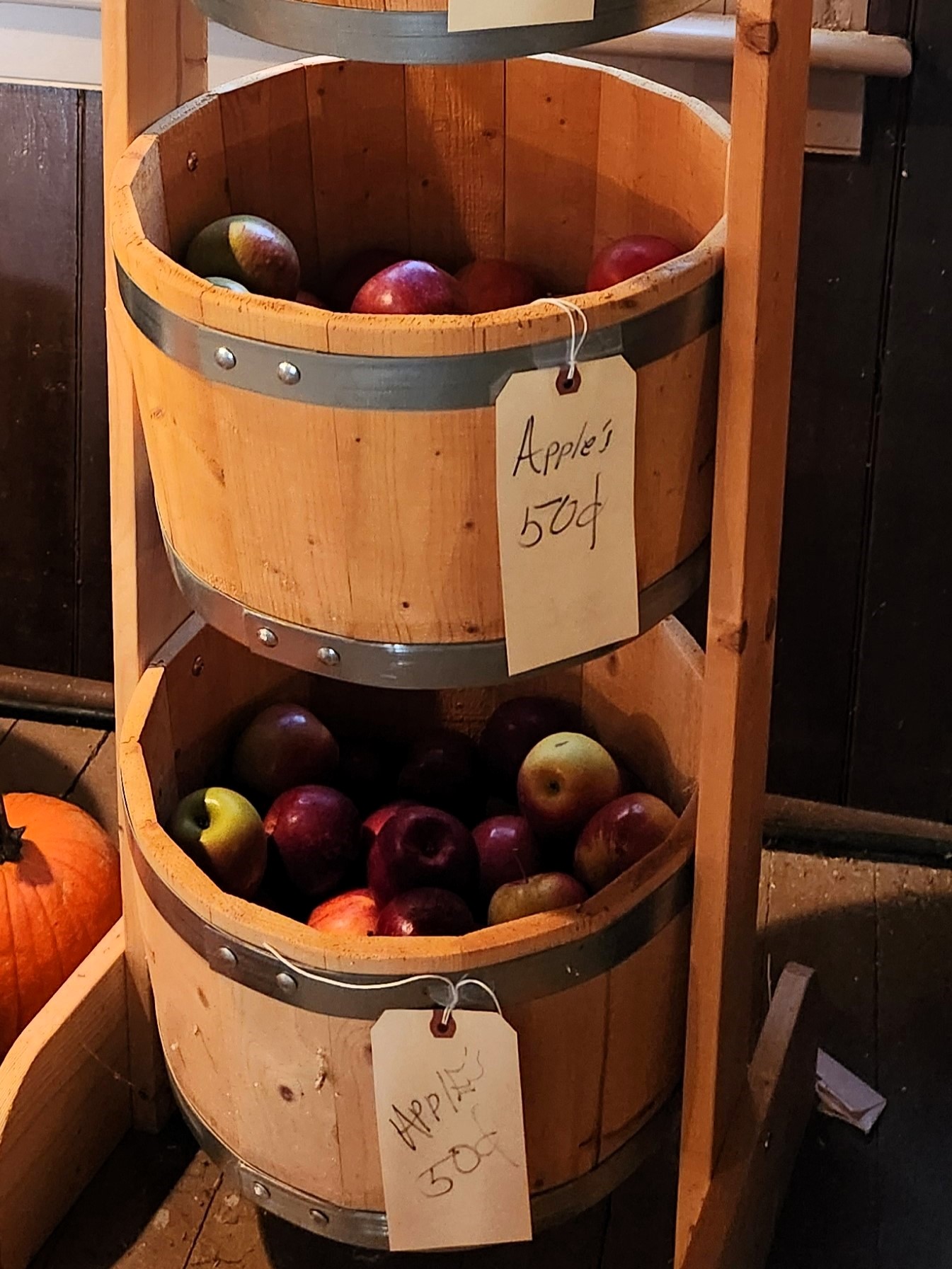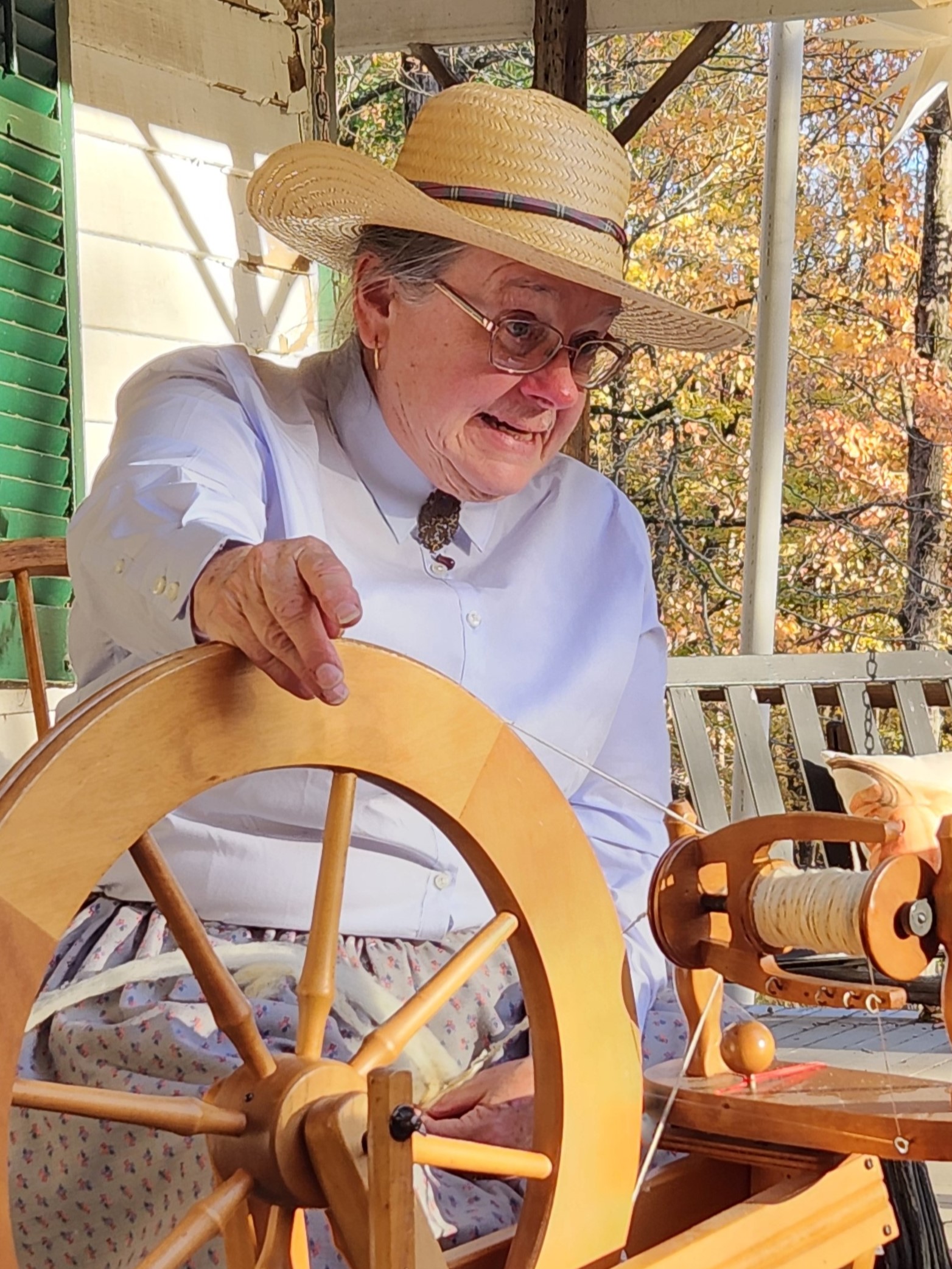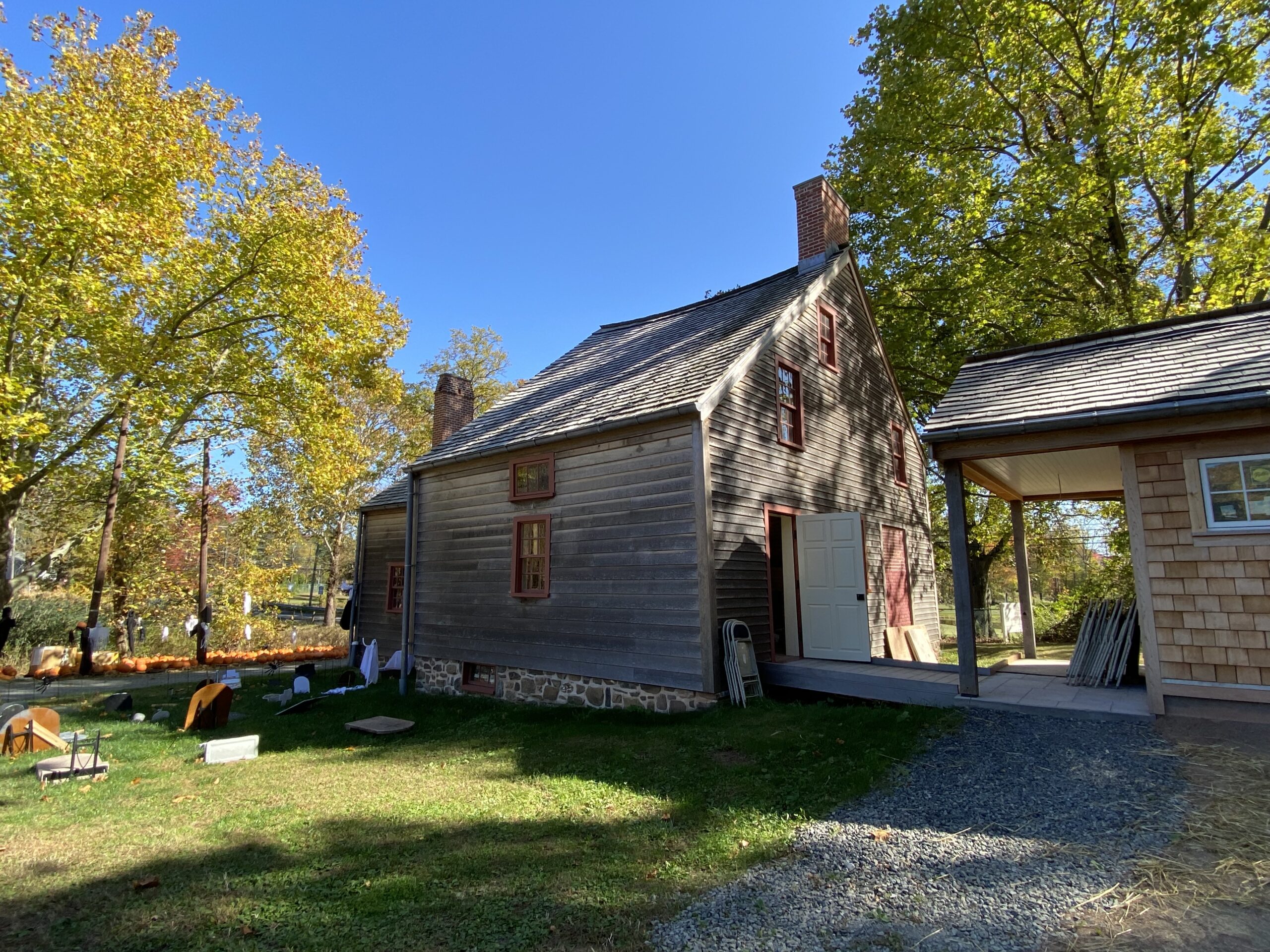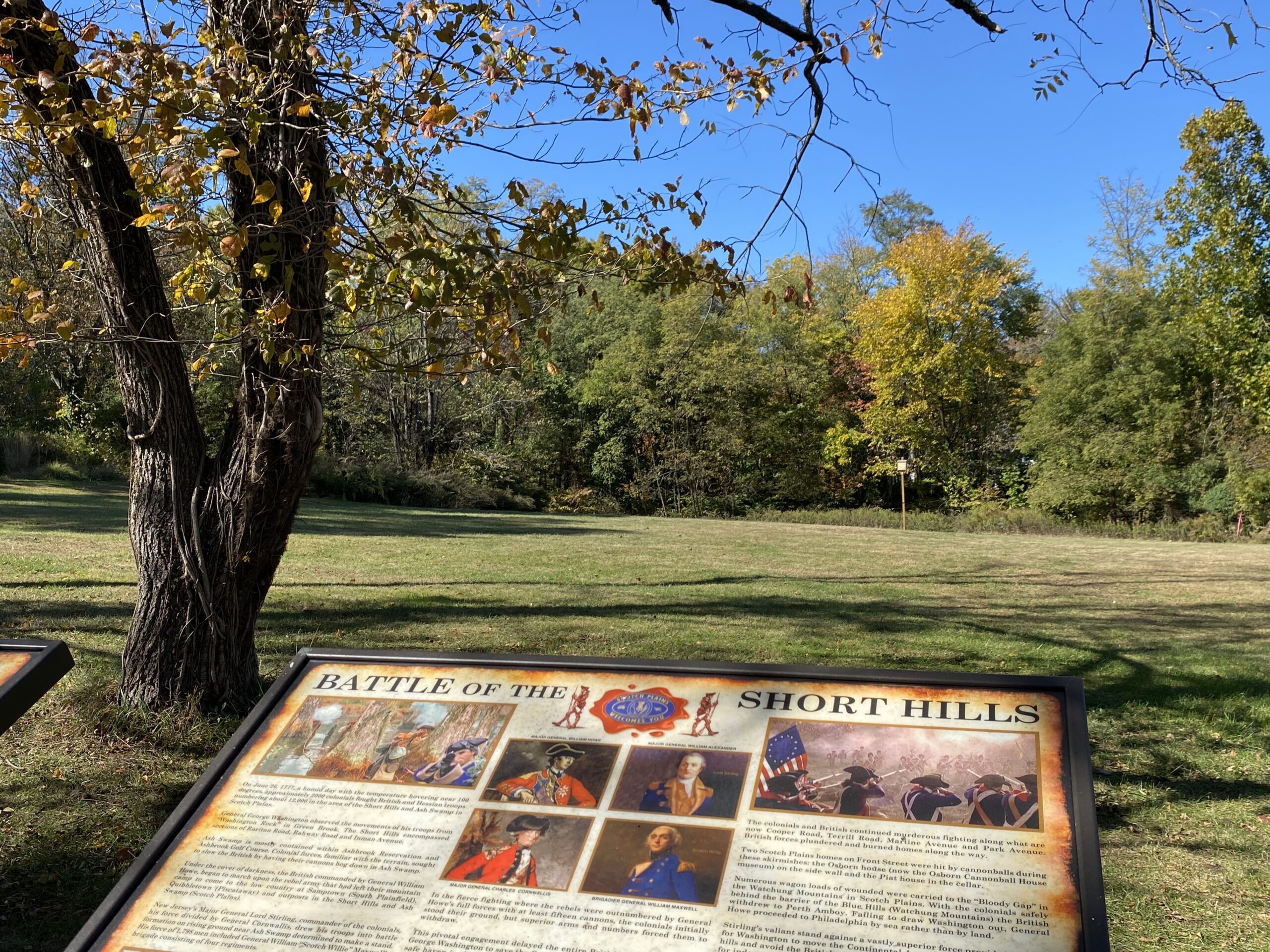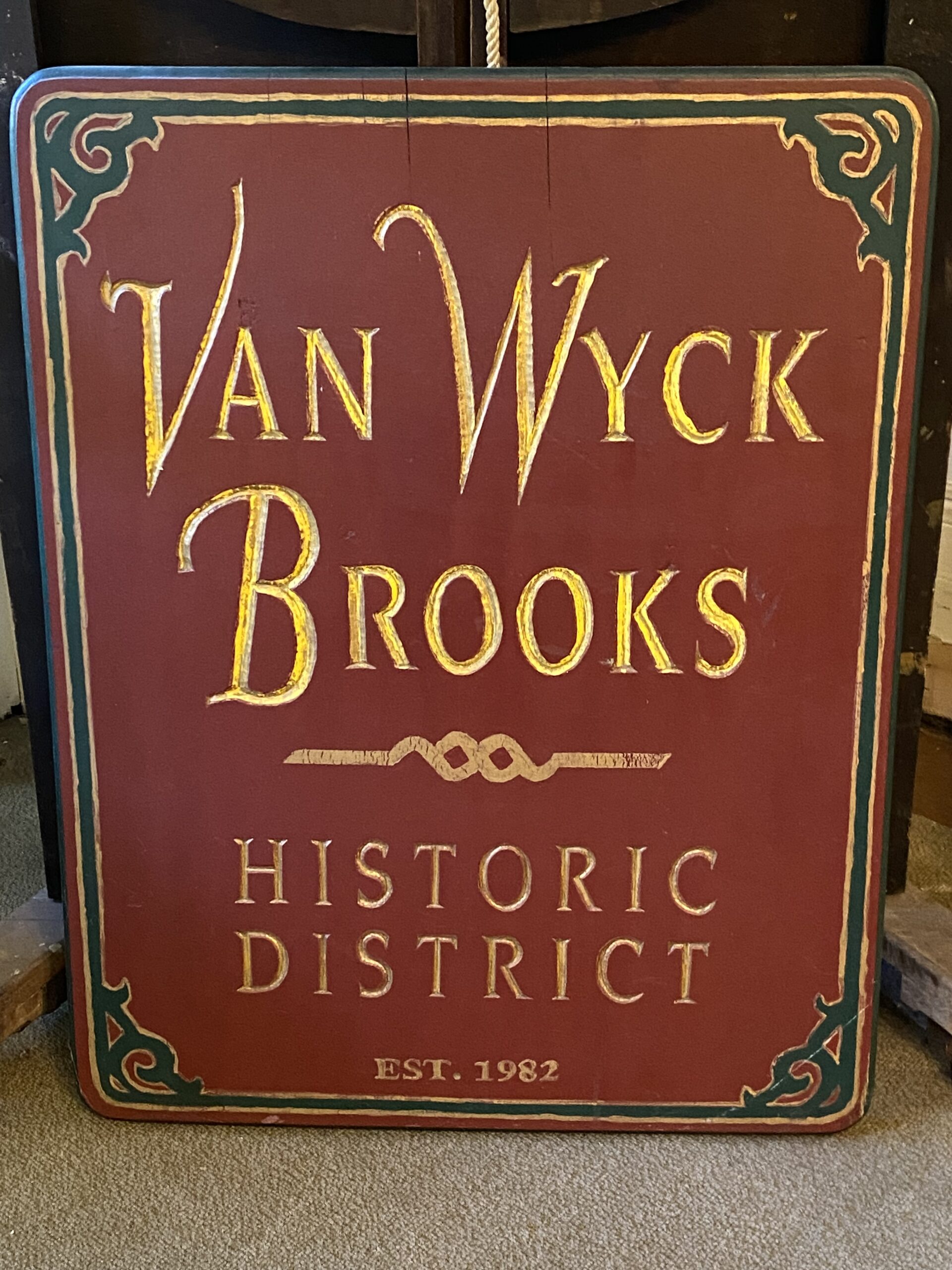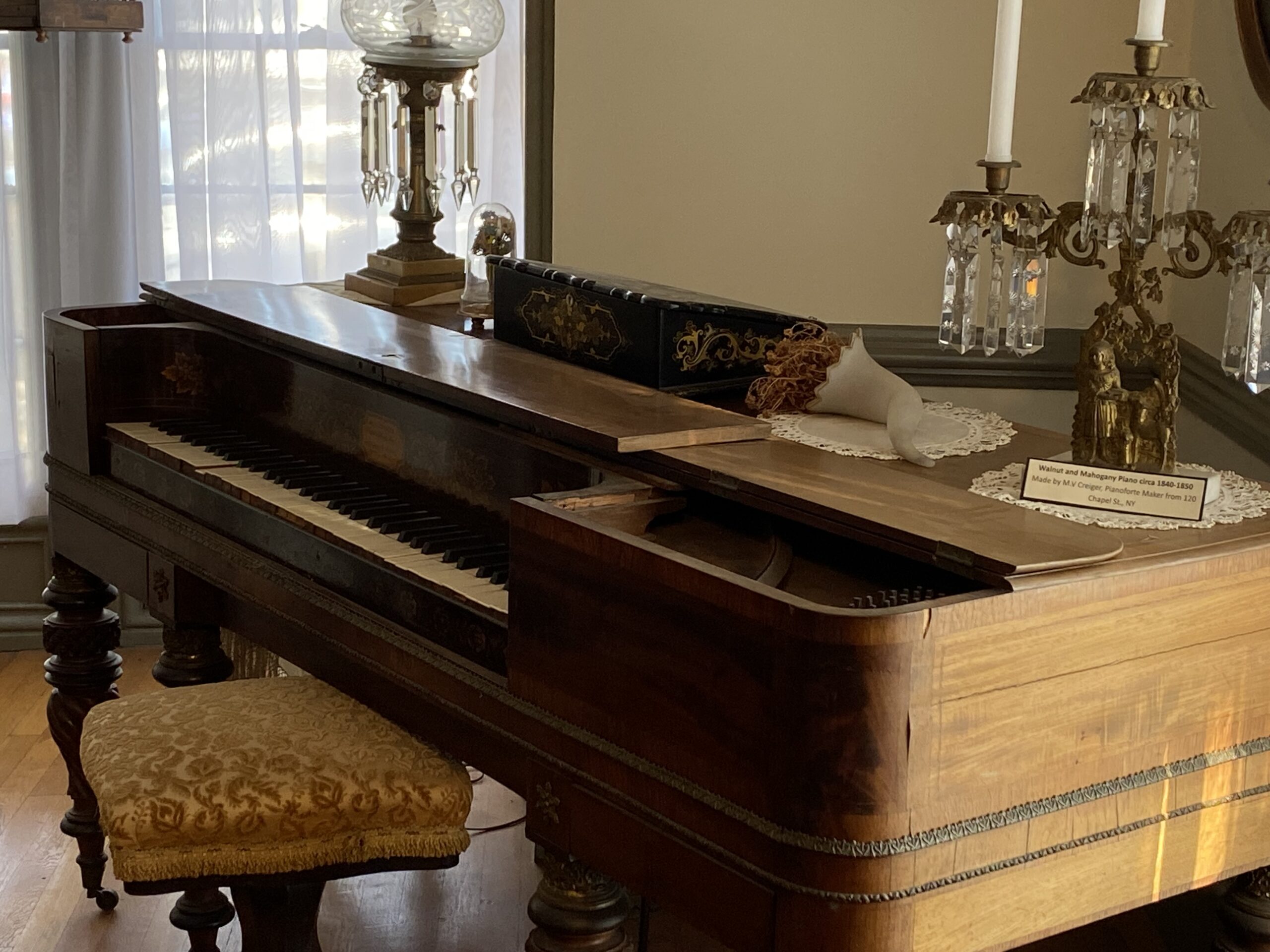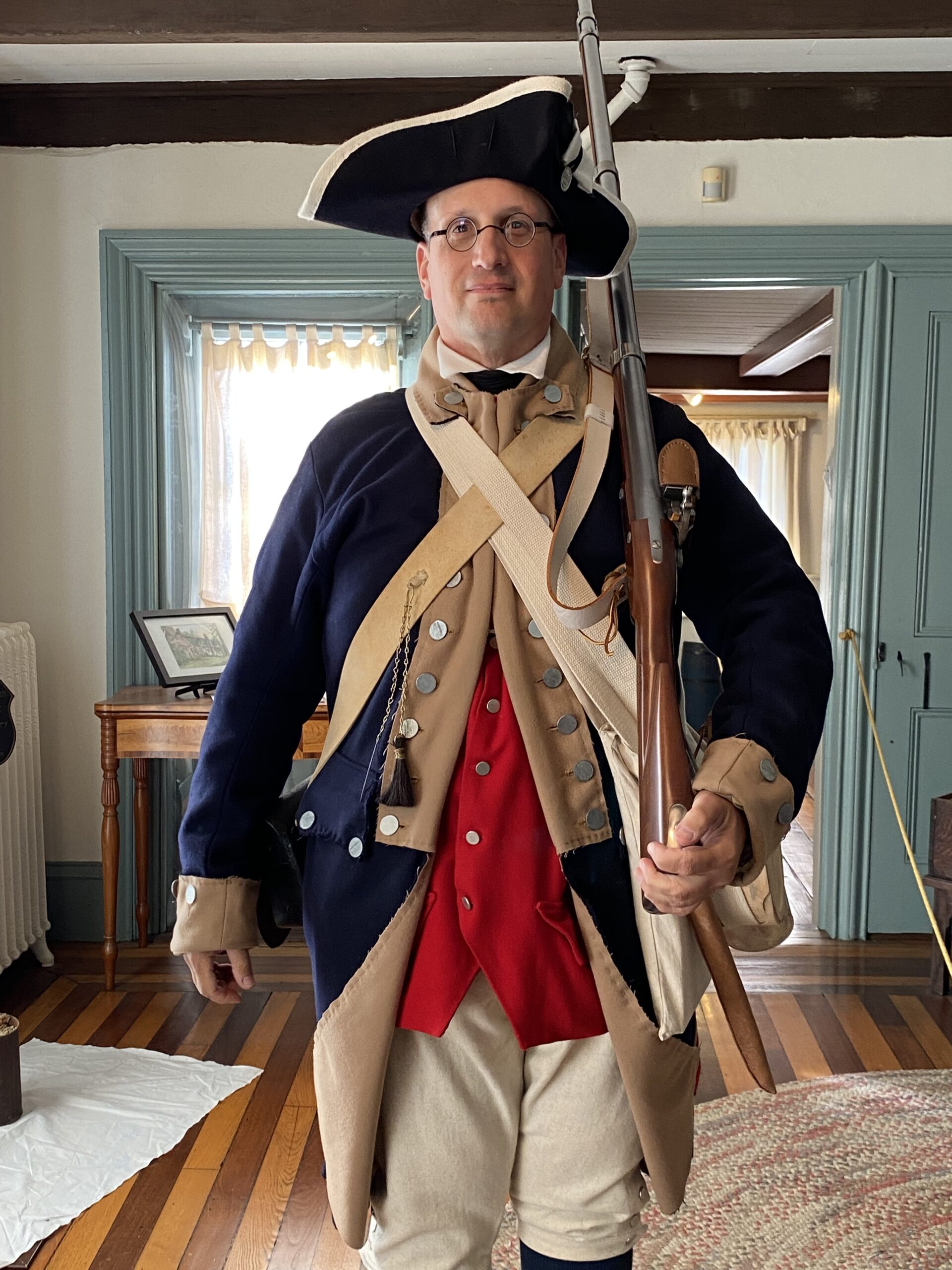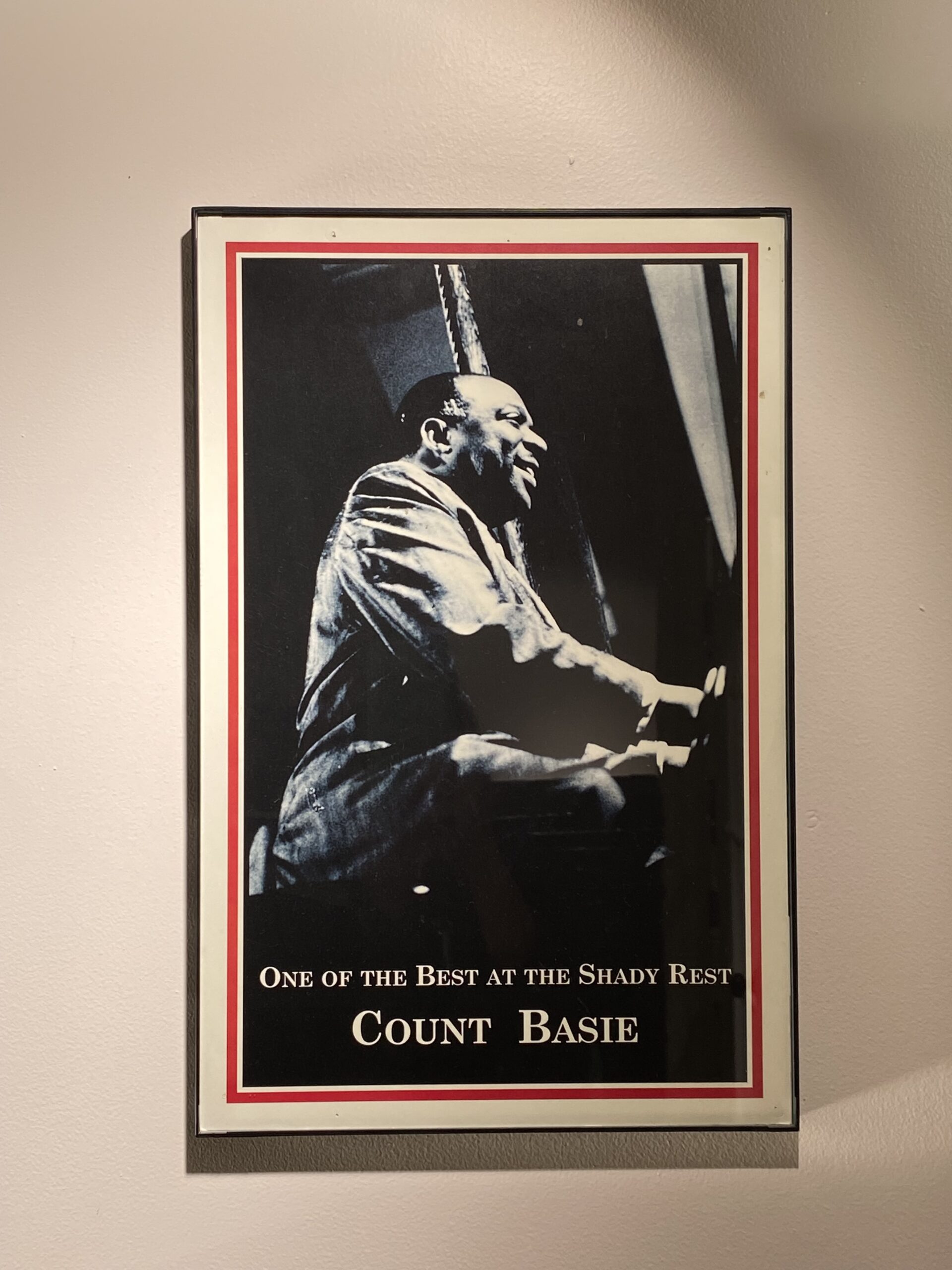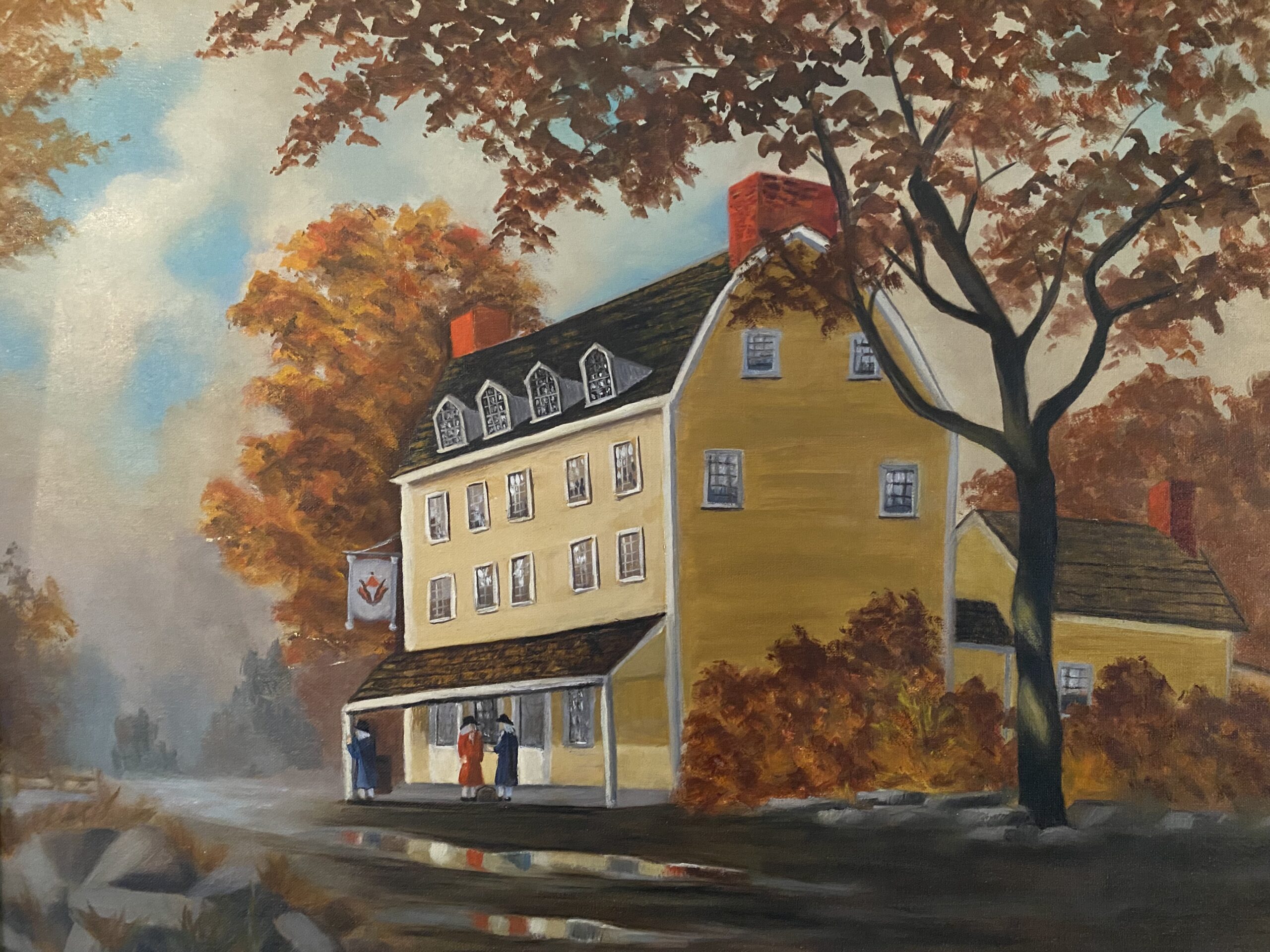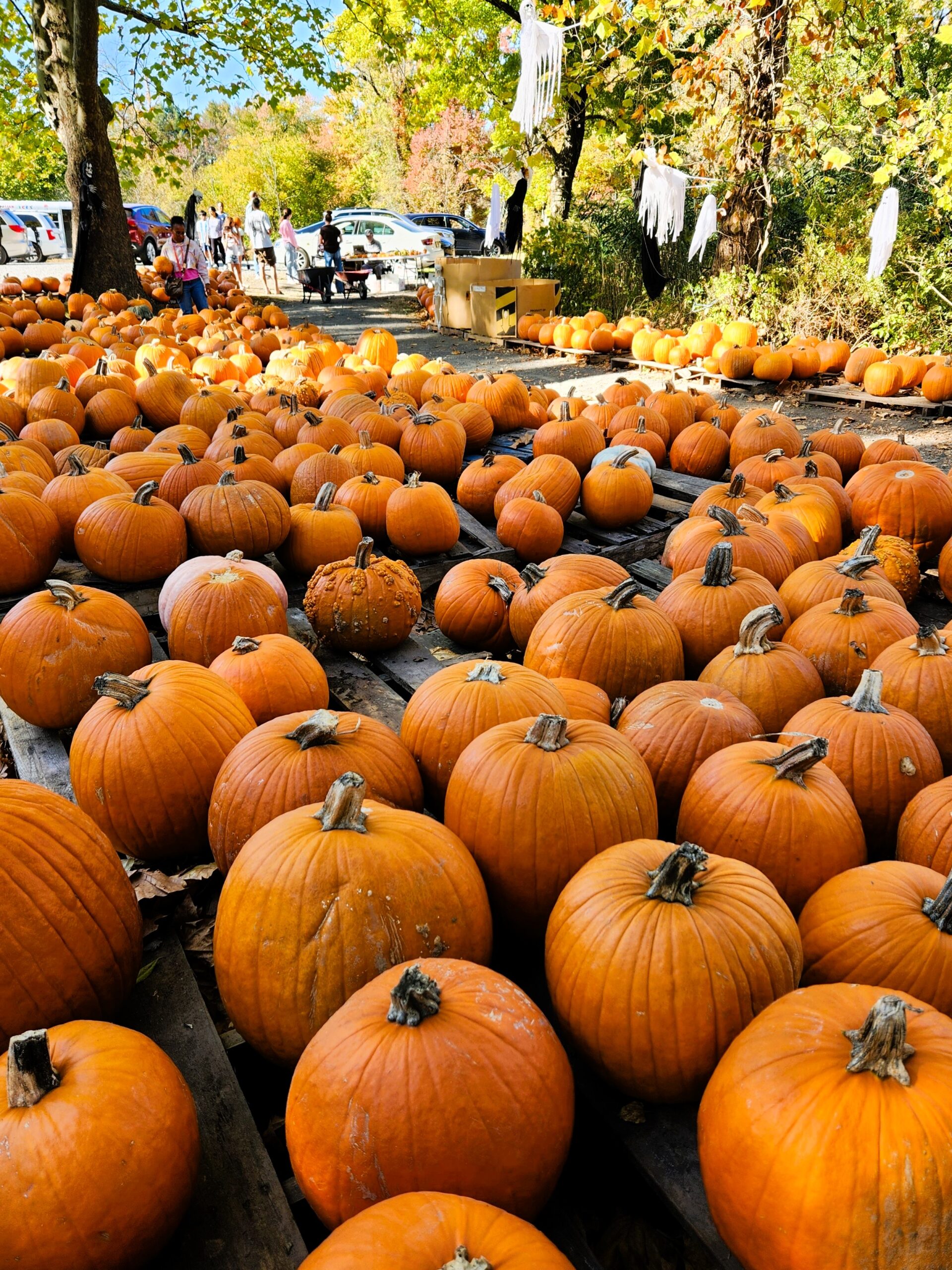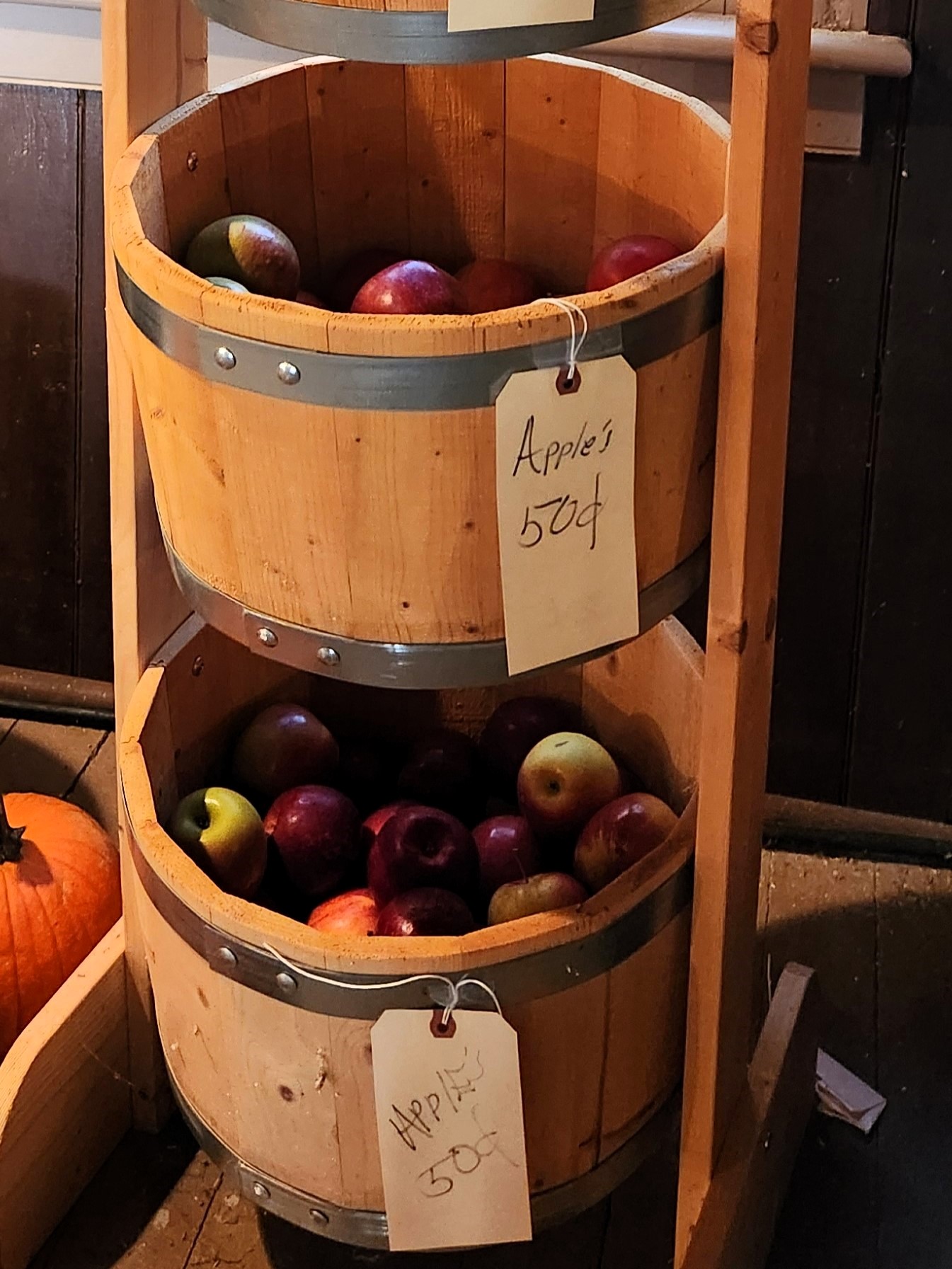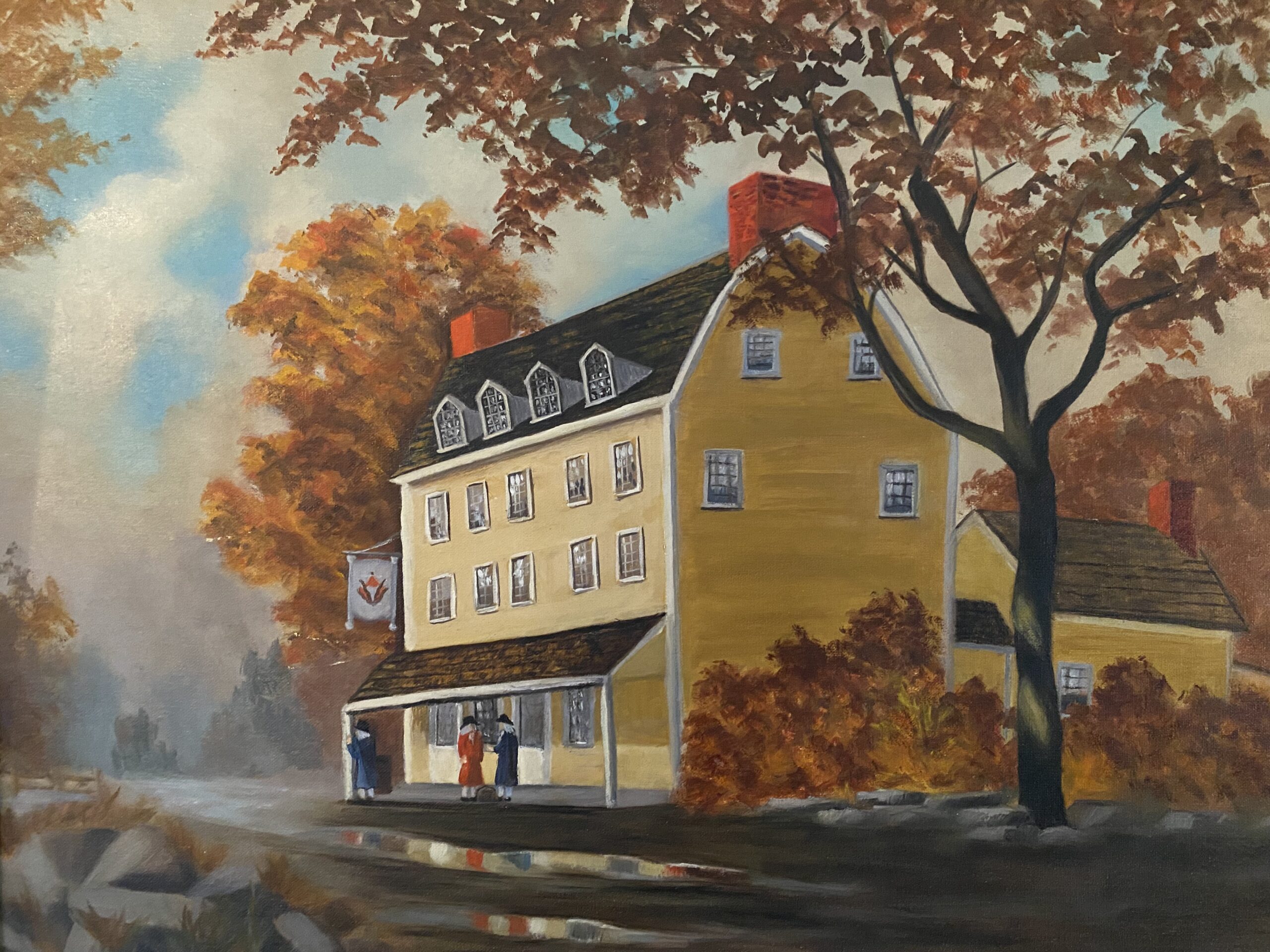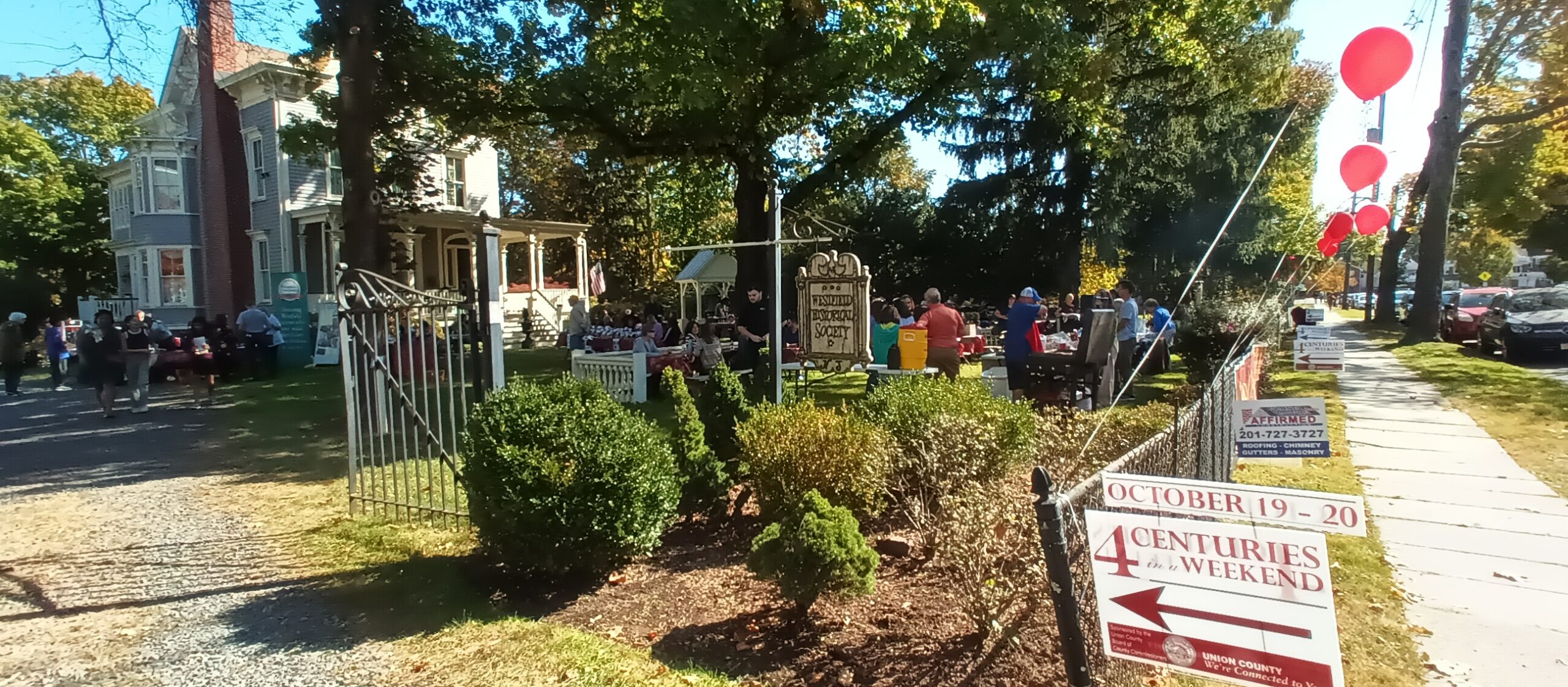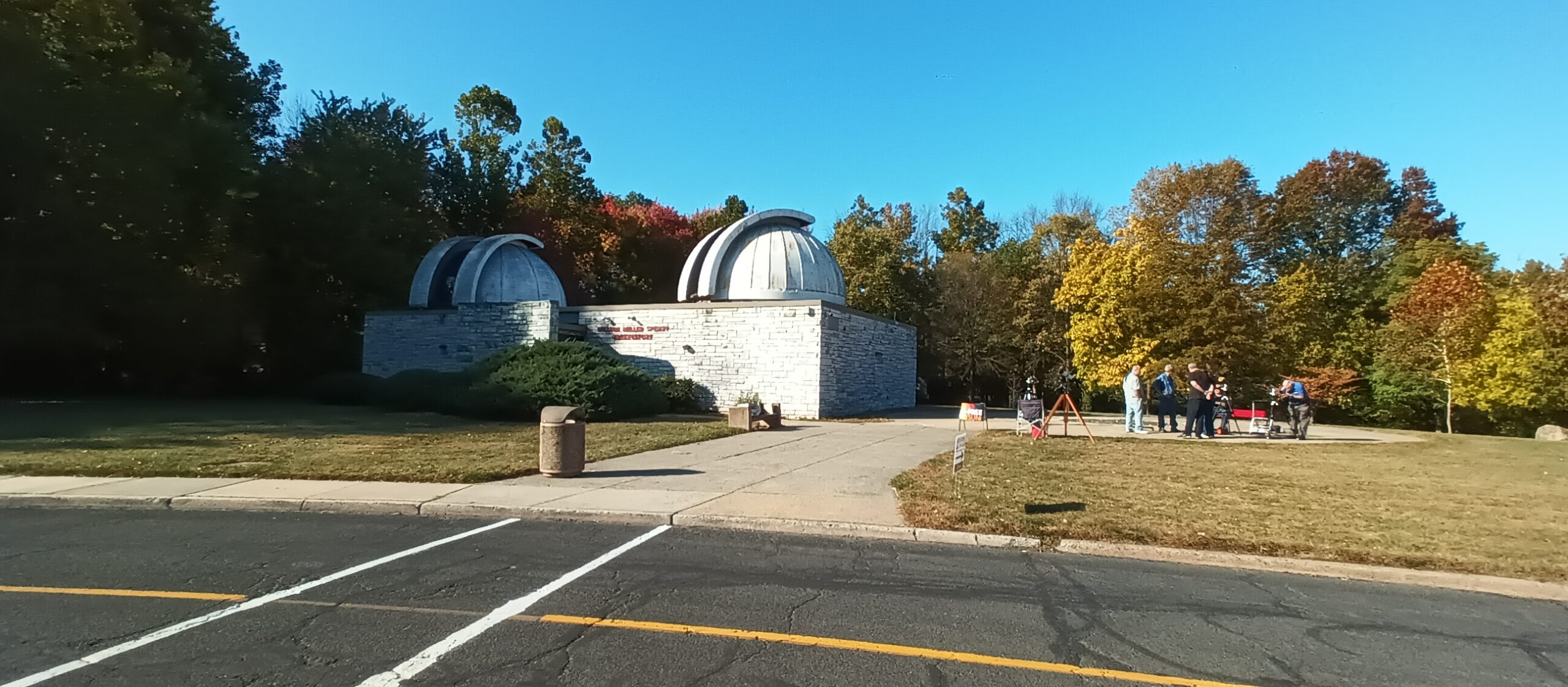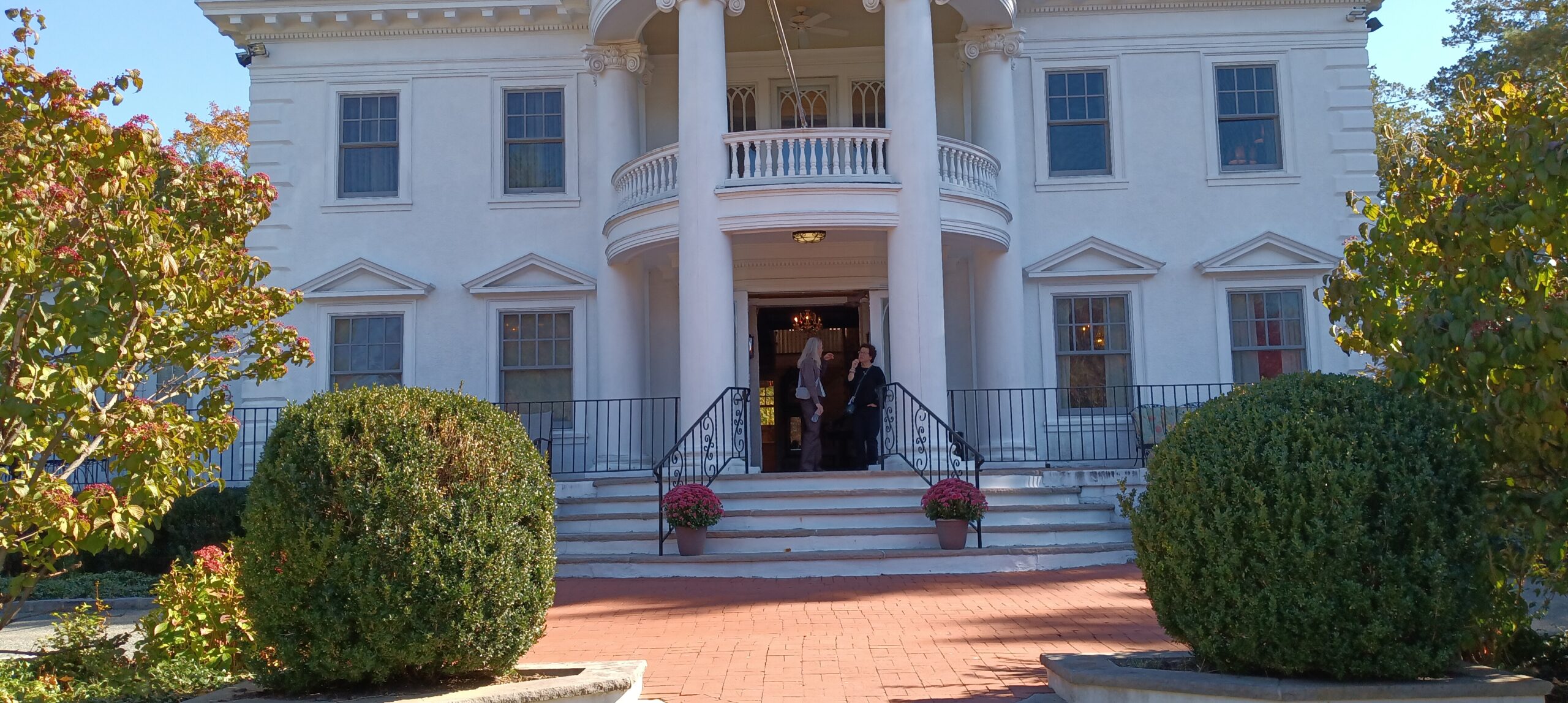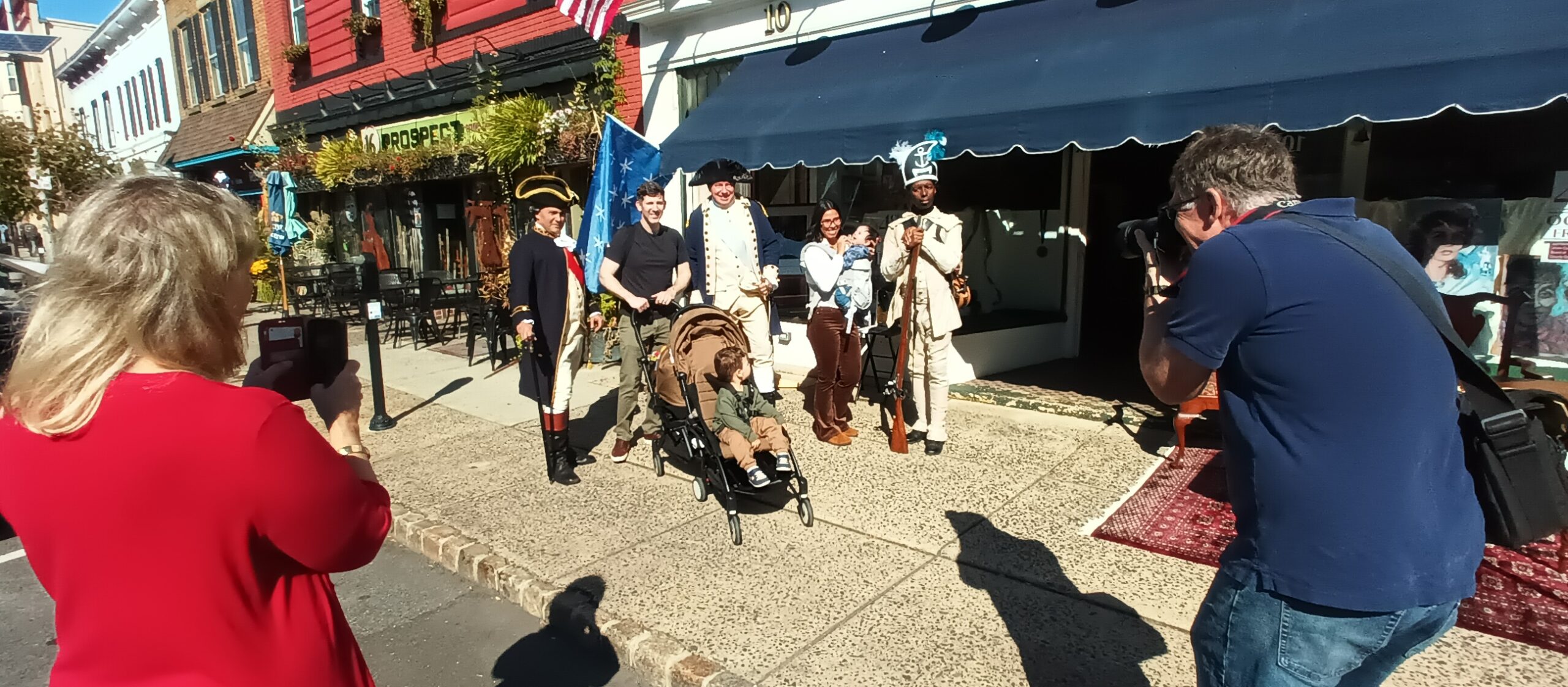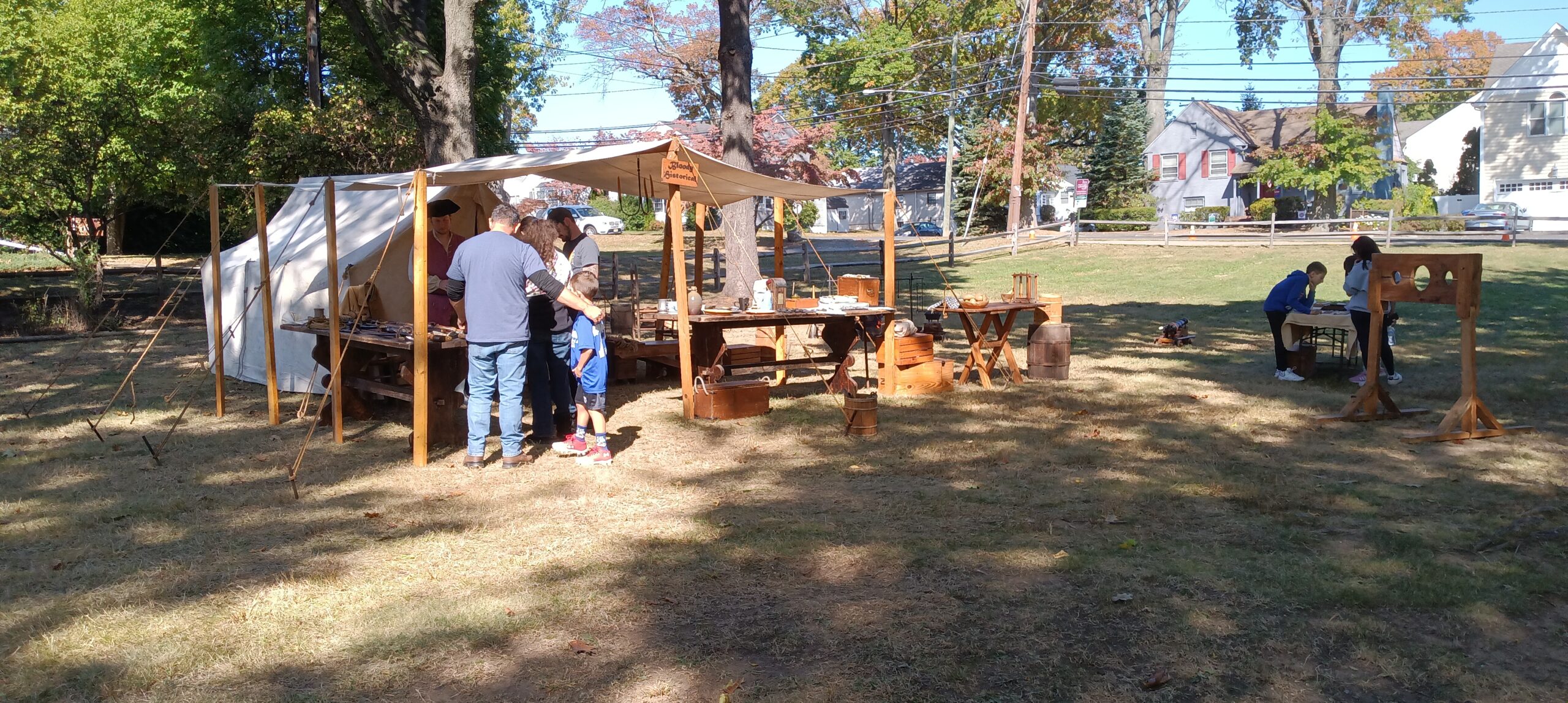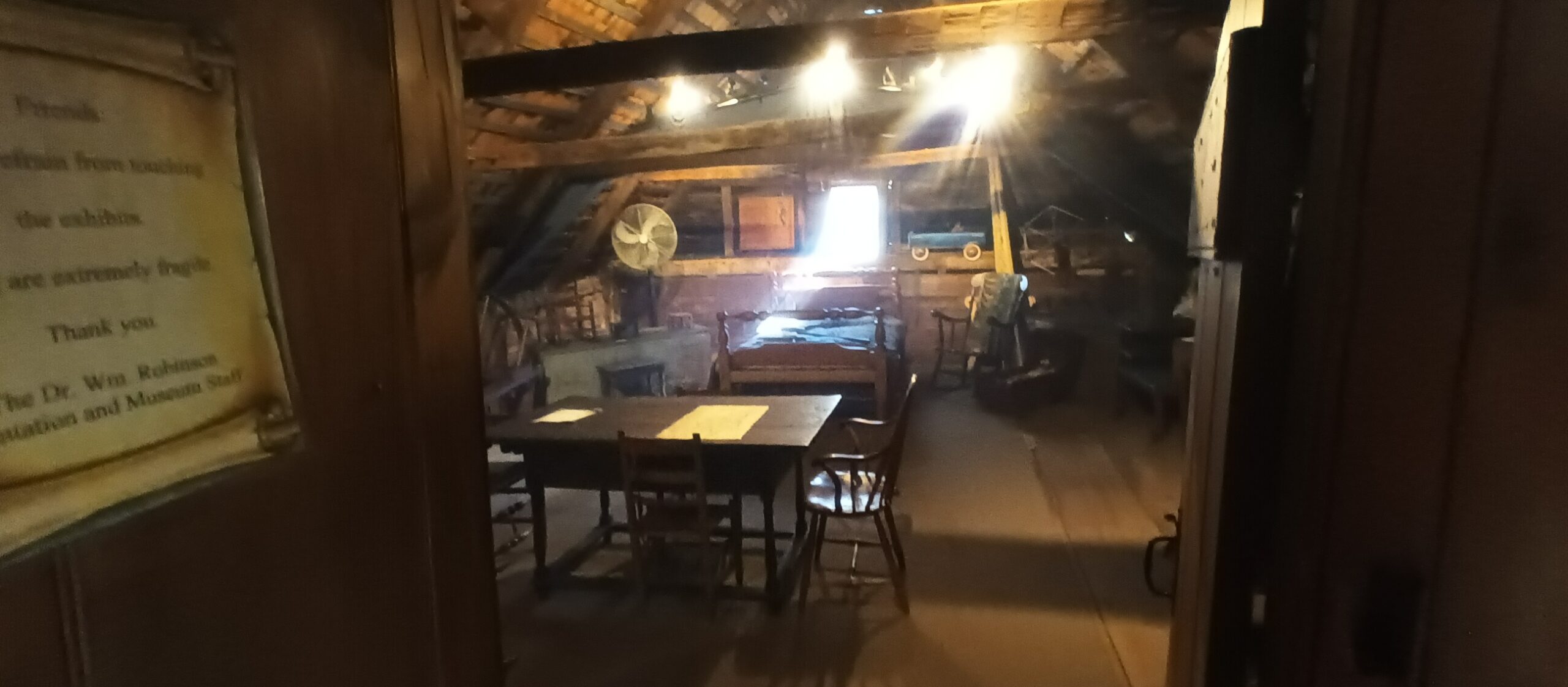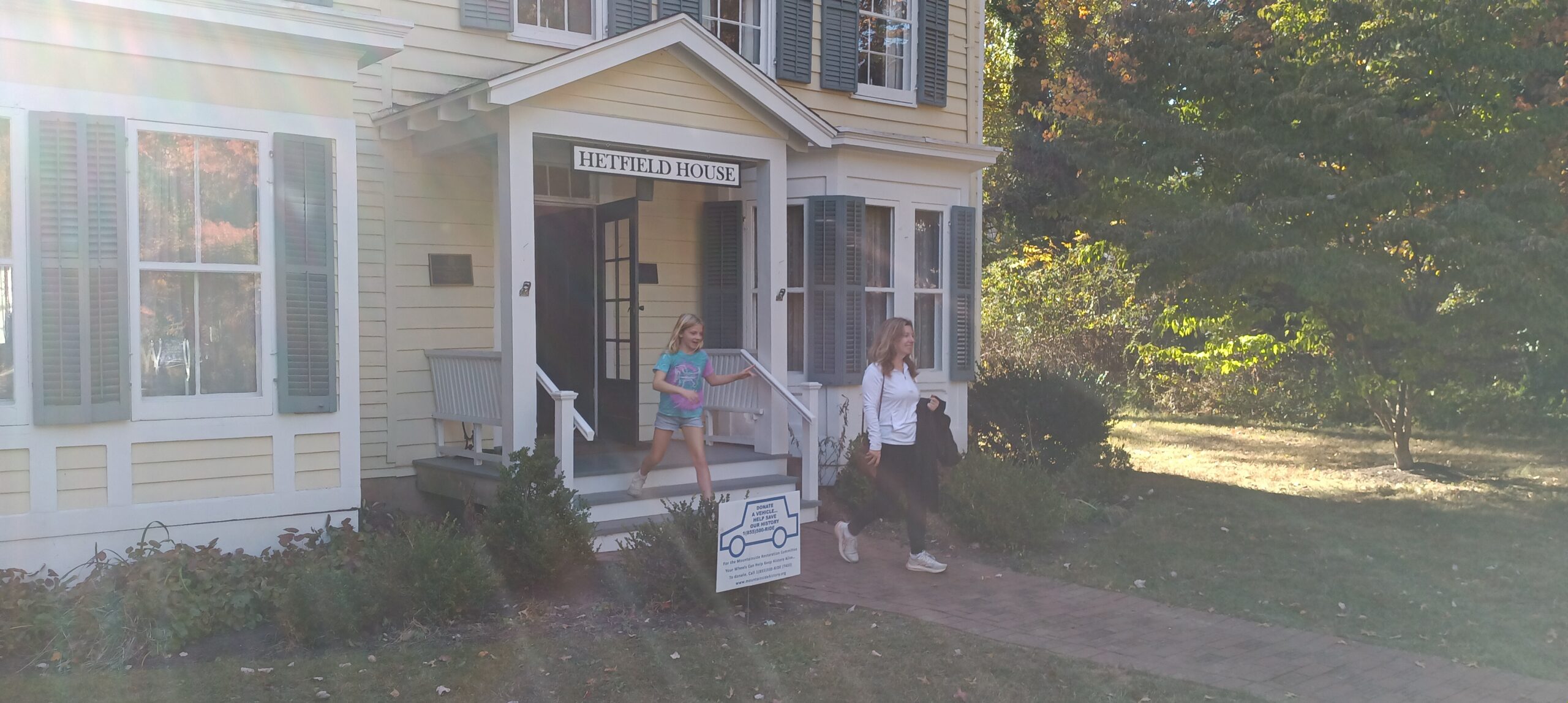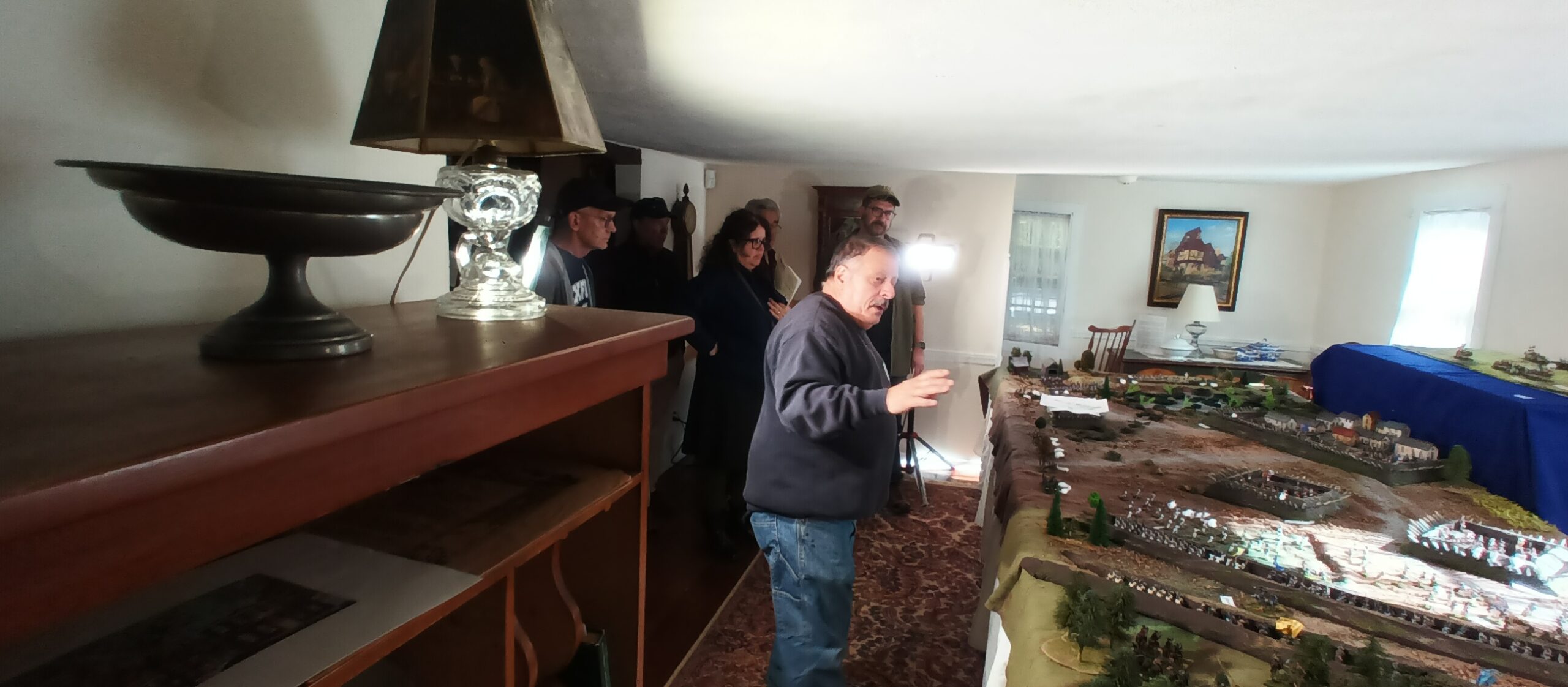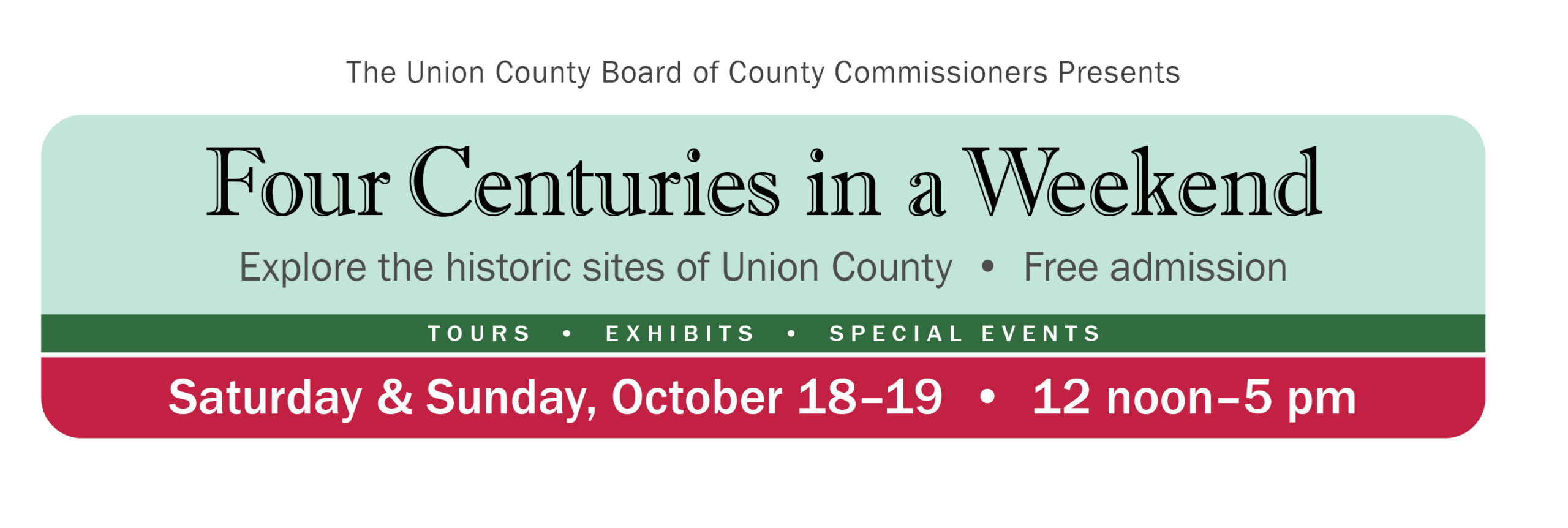
More than 30 historic sites across Union County are open to the public for Four Centuries in a Weekend, an annual fall tradition. Visitors learn about life and local history over the course of four centuries, with docent tours plus special activities ranging from colonial games and open-hearth cooking to re-enactors, live music, and new exhibits.
Most sites offer collectible Union County history trading cards. All sites offer the Union County Passport — pick one up to have stamped at each site you visit.
⭐This symbol designates a site within the National Park Service’s Crossroads of the American Revolution National Heritage Area, offering a unique stamp for the Passport to Your National Parks booklet.
Unless stated otherwise, sites are open both days, 12 noon to 5pm, October 18 and October 19.
Click here to view, print or download our “Four Centuries Weekend Guide 2025″
Lesson Plans – A | B | Map Other Features – Videos | History Trading Cards
Berkeley Heights
Deserted Village of Feltville-Glenside
within the Watchung Reservation ⭐
1 Cataract Hollow Rd., Berkeley Heights
908-527-4900 | www.ucnj.org/dv
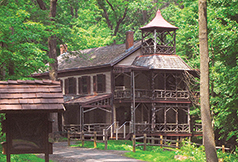
This 1845 town was the creation of New York businessman David Felt. Today, it contains 10 buildings and the archaeological remains of a vibrant community populated, in part, by European immigrants. At its height, Feltville included a school, church/general store and a factory on the Blue Brook while rows of cottages housed workers and their families.
“King David” sold Feltville in 1860. After several failed enterprises, it was reborn in 1882 as Glenside Park, a summer resort. Adirondack porches transformed workers’ houses into vacation cottages enjoyed by city dwellers.
Suburbanization led to the resort’s closure in 1916. Today, the Deserted Village is nestled in the Watchung Reservation, Union County’s 2,142-acre nature preserve.
Hours & Activities for 4 Centuries Weekend
- Guided tours of the Village (or self-guided)
- Visit the general store and museum
- 2 pm, both days: Presentation in Masker’s Barn about the artwork of Roberto de la Selva, with a display about his murals and a wood carving.
- Hayrides
- Apple cider-pressing
- For children: archaeology activity and old-fashioned games
- Quill pen writing
- Roast marshmallows on a campfire at the circa-1882 carriage house
- Meet characters from the Village’s past, including founder David Felt, Revolutionary War soldier John Willcocks and others — plus the research team of historians and archaeologists
- Most buildings and activities in the Village are wheelchair-accessible, but spread out over a large, hilly area. From the main parking lot, a hay wagon (accessible for wheelchairs and strollers) will transport visitors around the site, stopping at major points
- A golf cart will be available to transport visitors needing assistance with mobility. Wheelchair-accessible parking available near the Church/Store.
- Attendants at the entrance on Cataract Hollow Road will direct visitors to parking; please inform attendant of accommodations needed for people with disabilities.
Littell-Lord Farmstead
31 Horseshoe Road, Berkeley Heights
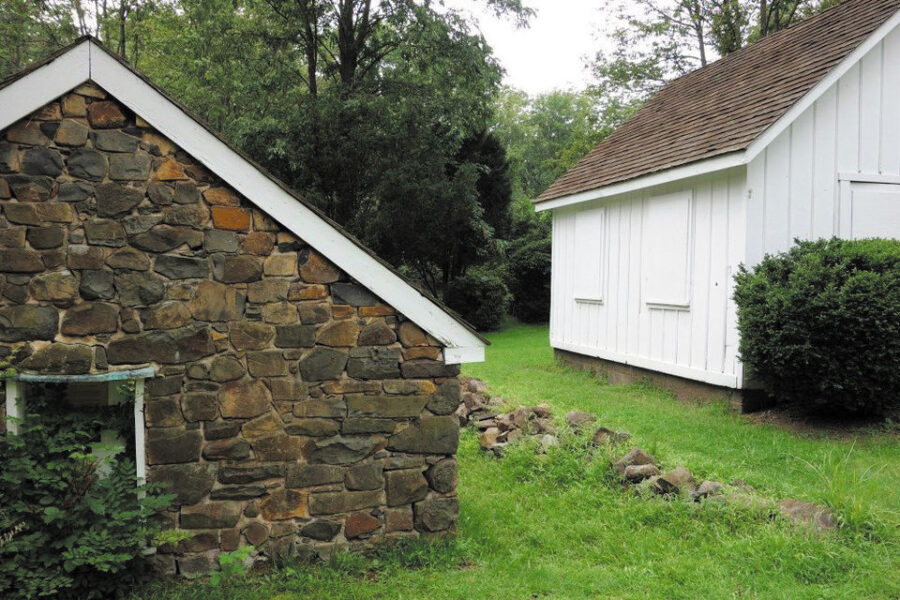
The Littell-Lord Farmstead, with its stone springhouse, summer kitchen and rural surroundings, is a rare reminder of Union County’s agricultural past.
Built circa 1760 by a farmer and weaver named Andrew Littell, the house features a lean-to kitchen, Empire-Victorian parlor, pump house and Gothic-style “grandmother house,” which served as a guest house and, for a time, as a school.
The Lord Family purchased the farmstead in 1867 and lived here for more than 100 years.
Hours & Activities for 4 Centuries Weekend
- Exterior tours of this circa-1760 farmstead; interior is closed for renovations.
- Festival includes local artists, artisans and crafters, games, pumpkin painting, raffles, a beer and wine garden, food truck, and hot dog stand
- Display of woodworking and artwork by local students
- Grounds are wheelchair-accessible.
- Limited parking on grounds.
- Ample parking on Horseshoe Rd. and Mountain Ave. shoulders.
↑ Back to Top ↑
Clark
Dr. William Robinson Plantation Museum⭐
593 Madison Hill Rd., Clark
732-340-1571 | DrRobinsonMuseum.org
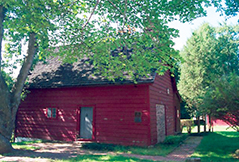
A rare example of 17th-century architecture in New Jersey, this post-medieval English-style house was built around 1690. A medicine room reflects the profession of Dr. William Robinson, one of the few physicians in East New Jersey at the time.
He practiced Physick, a popular form of healing with plants and herbs, and also performed Chirurgery, or surgery. Unusual architectural features abound, including wide floorboards and a 20-inch wide summer beam. The hall, with its large fireplace, is complete with period furnishing. A box-like winder staircase leads to the second floor, where Dr. Robinson’s last will and maps are displayed.
Hours & Activities for 4 Centuries Weekend
- Learn about life here during the 1690s, in this 3-story museum with a garden of herbs considered medicinal in the colonial era.
- First floor of building is wheelchair-accessible. Second floor and basement are visible via a video tour shown on the first floor.
- Street parking available.
↑ Back to Top ↑
Cranford
Crane-Phillips House Museum
124 North Union Ave., Cranford
908-276-0082 | www.cranfordhistoricalsociety.org
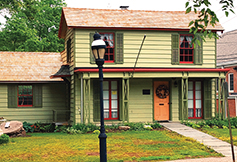
This American Civil War veteran’s cottage stands next to the Rahway River near the 18th century river crossing, “Crane’s Ford.” An outstanding example of Andrew Jackson Downing architecture, it is dressed in its original 1870s Victorian colors. The museum offers a rare glimpse of the life of a modest veteran’s family in the Victorian Era of opulence. Permanent and changing exhibits, featuring items from the Society’s costume, tool and local history collections, are displayed.
The House has been named to “Save America’s Treasures” by the White House and the National Trust for Historic Preservation. It is among only 27 such sites in the state of New Jersey, and it is the only “American Treasure” in Union County. Nearby, the Hanson House, Society headquarters at 38 Springfield Avenue, contains a library and archives.
Hours & Activities for 4 Centuries Weekend
- Displays related to the American Revolution
- Guided tours of this circa-1843 cottage, and its surrounding gardens and outbuildings — showcasing what life was like for a modest family during the Victorian era
- Building and bathroom are wheelchair-accessible, except the second floor, which can be seen on a video shown on the first floor.
- Park in the nearby municipal lot, or in the Police Dept. lot behind the museum.
William Miller Sperry Observatory
Union College, 1033 Springfield Ave., Cranford
908-709-7000 | asterism.org
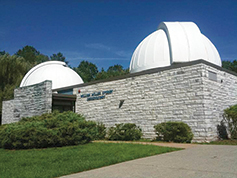
Sperry Observatory began as a $150,000 endowment to Union County College and was dedicated in 1967 in honor of William Miller Sperry, an avid amateur astronomer, local philanthropist, and president of Sperry & Hutchinson Co.
Known as S&H Green Stamps, the company had a line of popular supermarket trading stamps used from 1896 until the late 1980s. The current home of Amateur Astronomers, Inc. (AAI), the observatory houses two of the largest telescopes on the East Coast.
Hours & Activities for 4 Centuries Weekend
- Tours of the observatory by members of Amateur Astronomers Inc. include both large telescopes (among the largest in the eastern United States) — knowledgeable members will answer astronomy-related questions
- Safe solar-viewing through a telescope, weather permitting
- Free gently-used astronomy and science-related books and magazines available for visitors to take home
- Outdoor solar-observing and the Observatory classroom are wheelchair-accessible; the domes and indoor telescopes are accessed by stairs.
- Ample parking near the Observatory and in adjacent college campus lots. Observatory is near the back of Union College campus, between Springfield Ave. and Gallows Hill Rd.
↑ Back to Top ↑
Elizabeth
Boxwood Hall State Historic House⭐
1073 E. Jersey St., Elizabeth | 908-282-7617
nj.gov/dep/parksandforests/historic/boxwoodhall.html
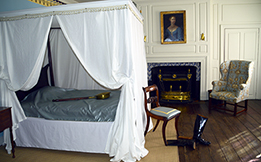
Prominent American statesmen of the late 18th and early 19th centuries had ties to this handsome Georgian house. In 1772, it became the home of Elias Boudinot, who served as a President of the Continental Congress. For a year during Boudinot’s residency, young Alexander Hamilton lived at Boxwood Hall while he attended school in Elizabethtown. George Washington lunched with Boudinot and a committee of Congressmen in 1789 while en route to his inauguration.
In 1795, the house was sold to Jonathan Dayton, signer of the Constitution, Speaker of the US House of Representatives and member of the US Senate. In 1824, Dayton hosted the Marquis de Lafayette during his American tour.
Hours & Activities for 4 Centuries Weekend
- Guided tours describe the events and people connected with this residence — including Hamilton and Lafayette — plus George Washington, who dined here on the day he was inaugurated as our first President
- New ramp for wheelchair access is under construction; call 908-282-7617 to hear current ADA-accessibility information.
- If parking lot behind building is not available due to construction, use street parking.
Elizabeth Public Library
11 S. Broad St., Elizabeth
908-354-6060 | www.elizpl.org
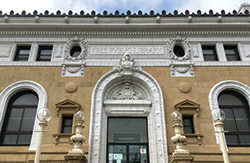
In 1910, Andrew Carnegie granted funds to build this library, during the “free library movement” period.
One of New Jersey’s original 36 Carnegie libraries, it was designed by Edward Lippincott Tilton, who had designed many other Carnegie libraries, as well as the immigration station at Ellis Island.
The building is reminiscent of an Italian palazzo and resembles Boston Public Library. This library opened in 1912. By the 1940s, it had become one of the busiest libraries of its size in the United States.
Hours & Activities for 4 Centuries Weekend
- Visit this historic gem — the last remaining active Carnegie Library in Union County, which opened in 1912
- Exhibit: “Old Homes Week: Historical Homes of Elizabeth,” in the Exhibit Room on the 3rd floor (open through Oct.)
- Scavenger Hunt: Participants will visit neighborhoods throughout historic Elizabeth, to locate and take selfies with architectural structures and historical items, competing for a grand prize to be presented the week of 10/20.
- Details and participation documents will post on the library’s website www.elizpl.org/localhistory starting 10/14.
- Participants can pick up a Scavenger Hunt booklet in person at the Library’s Local History Dept. on the 3rd floor, or access it online starting 10/14.
- Only photos taken and submitted during the weekend of 10/18–10/19 will count towards the grand prize; only one grand prize will be awarded.
- Library building and parking lot are fully ADA-compliant.
- Free and secure parking available on site, with accessible spaces. Additional visitor parking at Bollwage Garage on Caldwell Place.
Siloam Hope First Presbyterian Church and Snyder Academy⭐
42 Broad St., Elizabeth | 908-353-2131
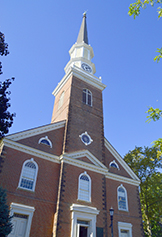
“Old First” remains at the center of Elizabeth Town, 350 years after a small group of Associates signed a treaty for the land on October 28, 1664, establishing the first English-speaking congregation in New Jersey. The original building was the weekday meeting house for public affairs, and a house of worship on Sundays.
The first Governor, Phillip Carteret, maintained his office there and the first meeting of the New Jersey legislature was held in 1668. The present sanctuary was opened in 1790 after the British burned the earlier buildings in 1780. A new steeple was installed in August 2008, replacing the spire lost to the fire in 1946.
Hours & Activities for 4 Centuries Weekend
- Explore the historic cemetery, with gravesites spanning four centuries
- Visit the Old First Museum at Snyder Academy, for Revolutionary War artifacts and presentations about the history of this site, where Alexander Hamilton and Aaron Burr were students
- Music and family activities
- Presentations about the “313+ Ancestors Speak” project
- Sunday: Experience live Revolutionary War reenactments by the 3rd New Jersey Regiment.
- Site is wheelchair-accessible via ramp entrance into the church, elevator at Snyder Academy on Caldwell Ave. side, and walking path through the cemetery.
- Parking available at the Bollwage Parking Garage at 37 Caldwell Place (across from Snyder Academy), in Parking Lot #6 (1167 Dickinson St.), and on local streets.
Belcher-Ogden Mansion & Nathaniel Bonnell Homestead⭐
1046 East Jersey St., Elizabeth | 908-581-7555
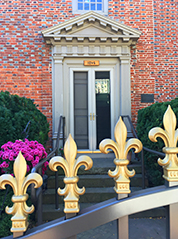
The Nathaniel Bonnell Homestead (1682) and Belcher-Ogden Mansion (1699–1755) anchor “the corner that history made.”
Bonnell displays post-and-beam construction, while Belcher-Ogden displays construction including Flemish Bond brick style. Both buildings are a celebration of adaptive reuse and historical ecology. The property includes a colonial garden.
Hours & Activities for 4 Centuries Weekend
- Tours of Belcher-Ogden house provided by the Historical Society of Elizabeth, in English and Spanish
- Picnic tables in Belcher-Ogden back yard available for carry-in litter-free lunch
- Belcher-Ogden first floor is wheelchair-accessible from back.
- Free parking on site at Bonnell House, 1045 East Jersey St.
↑ Back to Top ↑
Fanwood
Fanwood Train Station Museum
230 North Ave., Fanwood
908-322-8236 | fanwoodnj.org
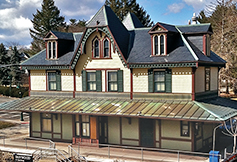
In 1874 the right of way to the Central Railroad of New Jersey was moved from present day Midway Avenue to its current location. This Victorian Gothic structure was built and used as a railroad station until 1965.
The Station is an excellent example of frame Victorian Gothic architecture. It is the oldest remaining railroad station in Union County.
The museum houses artifacts documenting the Borough’s historic ties to the Central Railroad of New Jersey, and its land development company that constructed some of the Victorian and Queen Anne homes in the Fanwood Park Historic District.
Hours & Activities for 4 Centuries Weekend
- Features local history, focused on rail service over the years
- Exhibit of political campaign buttons and other campaign memorabilia from over the decades, relevant with this year’s election for NJ governor.
- Building is wheelchair-accessible.
- Ample parking available on site at the Train Station.
↑ Back to Top ↑
Hillside
Evergreen Cemetery
1137 North Broad St., Hillside | 908-352-7940
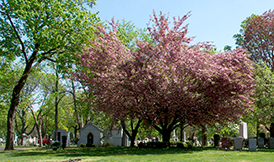
Evergreen Cemetery was created in 1853 as an interdenominational, rural burial ground. Its picturesque landscape, designed to preserve the natural terrain and existing trees, reflects the romantic, Victorian view of death.
Mausoleums and more than 10,000 monuments make Evergreen a virtual museum of funerary art. Special sections, such as the plot devoted to Civil War soldiers, illustrate historical and social developments in American History. Drive by the English Tudor Chapel designed in 1932 by an Elizabeth architect, C. Godfrey Poggi, located at the Dayton Avenue entrance.
Hours & Activities for 4 Centuries Weekend
- Request booklet at Woodruff House (111 Conant St.) for a self-guided tour of this historic cemetery and its elaborate monuments
Woodruff House/Eaton Store Museum⭐
111 Conant St., Hillside
908-353-8828 | www.woodruffhouse.org
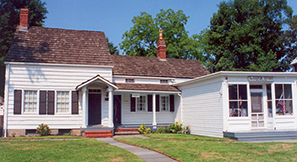
The Woodruff House was built in 1735 on land granted to John Woodruff in 1666. The first floor is furnished with circa 1800 antiques, including Woodruff memorabilia from the Earl and Lyon families. The house consists of the original 1735 side, an addition from 1790 and the 1900 Eaton Store. The restored Eaton Store illustrates a vast difference between a neighborhood store of the early 1900s and a supermarket of today. The store has the original counter, coffee grinder and gas lamp; the shelves are stocked with hundreds of products from long ago.
The property, originally an apple orchard, now has a reproduction post and beam barn with various items on display, old farm equipment, a two-seater privy, water pump, well and archival center. The Phil Rizzuto All Sports Museum houses a collection of memorabilia from Hillside resident and Baseball Hall of Famer, the late Phil Rizzuto, along with some memorabilia from other Hillside sports figures.
Hours & Activities for 4 Centuries Weekend
- Tours of Woodruff House (dating to 1735) and the Eaton Store, which dates to 1900
- Barn houses the Rizzuto All Sports Exhibit of memorabilia from local baseball legend Phil Rizzuto
- See the new Colonial Garden and vintage Model T Ford on display
- Pick up a brochure with map to take a self-guided tour of historic Evergreen Cemetery, located nearby
- Grounds, barn and Rizzuto exhibit are wheelchair-accessible; house and store are not wheelchair-accessible.
- Street parking available.
↑ Back to Top ↑
Kenilworth
Oswald J. Nitschke House
49 South 21 St., Kenilworth
908-276-9090 | kenilworthhistoricalsociety.org
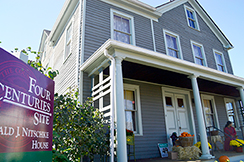
The Nitschke House (c. 1880) is one of Kenilworth’s original clapboard, wood-frame farmhouses, and represents the architectural style typical of homes built in the area in the 1800s. The house is named for one of Kenilworth’s pioneers, Oswald J. Nitschke, who owned the home and resided there in the early 1900s.
He advocated the 1907 incorporation of Kenilworth and was elected to the first Council, serving more than seven years. A three term mayor, Nitschke was responsible for development of the unique 120’ wide Boulevard and its extension through the Union County Park System.
The Kenilworth Historical Society has restored the house and transformed it into a “living history” museum and cultural center.
Hours & Activities for 4 Centuries Weekend
- Guided tours in English and Spanish of this circa-1880 authentically furnished home and its teaching garden of heirloom flowers, vegetables and herbs
- Interactive history program portrays the everyday life of an immigrant family in a developing suburb during the late 1800s/early 1900s
- Exhibits: “Generations of Hope” portrays the hopes and challenges facing newcomers to New Orange/Kenilworth in the late 1800s and beyond; “Through the Eyes of a Child” explores life as a child in the late 1800s/early 1900s
- Multicultural garden-to-table program
- Preview Kenilworth’s plans for celebrating the 250th of the American Revolution in 2026
- International music performed live on open front porch
- Light refreshments
- Grounds and building are wheelchair-accessible; elevator on site.
- Free parking in front of building, on the street and in municipal lot across the street.
↑ Back to Top ↑
Mountainside
Deacon Andrew Hetfield House⭐
Constitution Plaza, Watchung Ave., Mountainside
908-789-9420 | mountainsidehistory.org
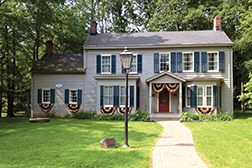
Originally constructed by Deacon Andrew Hetfield in about 1760, this house expanded in stages to meet the needs of the Hetfield family during their 186 year occupancy. By 1830, a simple colonial farmhouse had been transformed into a center-hall Georgian residence.
Also known as the “Dutch Oven House”, the building has been moved twice, first to protect it from a Route 22 widening. Used briefly as a tea room and antiques shop, the house was once rented to MacKinlay Kantor, author of the Civil War novel, Andersonville.
The structure was saved from demolition in 1985, when it was moved a second time to another part of the original Hetfield property.
Hours & Activities for 4 Centuries Weekend
- Ongoing tours of this circa-1760 house all weekend
- Miniature diorama shows the Revolutionary War Battle of the Short Hills, fought nearby in 1777. John Sileo, of Tri-State Historical Education Simulations, provides lively discussion about this battle, augmented by the diorama, with hundreds of hand-painted soldiers.
- Stop next door at the restored circa-1818 Levi Cory House Village Shop, open for visits and shopping
- Entry to house is via a 2-step porch.
- Parking lot on site.
↑ Back to Top ↑
New Providence
Salt Box Museum⭐
1350 Springfield Ave., New Providence
908-665-1034 | newprovidencehistorical.com
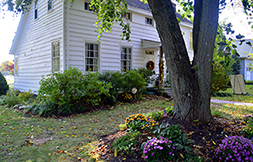
When two houses constructed at different locations during the 1840s were joined in the mid-19th century, the house, now known as the Salt Box Museum, was created. The house’s shape, with its steep, sloping rear roof, resembles the box in which salt used to be kept. In 1967, the entire house was moved across Springfield Avenue to its present site.
Today, the first floor is furnished to represent a typical New Jersey farmhouse of the mid-19th century. The Mason Room at the New Providence Library, 377 Elkwood Avenue, houses the Society’s collection of rare documents, maps, photographs and oral history tapes.
Hours & Activities for 4 Centuries Weekend
- Tours of this mid-1800s farmhouse, displaying fascinating artifacts
- Archival tools displayed outside include an ice plow and a hand-crank wringer
- New display about early 1900s baseball league in New Providence
- Saturday: Mason Room Archives: Explore local maps, photos, newspapers, personal journals and records in the archives of New Providence Historical Society, nearby at the rear of New Providence Memorial Library, 377 Elkwood Ave., New Providence.
- Saturday: Guided Tours of Churchyard Graves departing 1:30 pm and 2:30 pm from New Providence Presbyterian Church (across from Salt Box), 1307 Springfield Ave.
- Tour includes graves of local founding families and Revolutionary War soldiers.
- To register and receive confirmation, email NPcemeterytours@gmail.com with name, preferred time and number of people.
- Meet 10 min. before departure time, on sidewalk by church lot.
- Library building is wheelchair-accessible; Salt Box Museum is not.
- Park on the street for Salt Box Museum; in the church lot for the cemetery tour; or in the Library Lot for the Mason Room.
↑ Back to Top ↑
Plainfield
Drake House Museum⭐
602 West Front St., Plainfield
908-755-5831 | drakehouseplainfieldnj.org
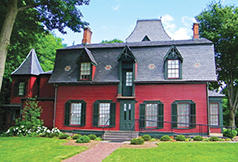
The Nathaniel Drake House, headquarters of the Historical Society of Plainfield, was built in 1746. Nestled within the towers and slate roof is the original farmhouse once used as George Washington’s headquarters during the Battle of Short Hills, June 25, 1777.
In 1864, John S. Harberger, a New York City bank president, enlarged and embellished the house in the Victorian style, making it his summer home during Plainfield’s development as a commuter suburb.
Today, period rooms portray both the farm life of the Drakes and the suburban life of the Harbergers. Significant American paintings, folk art, period furniture and decorative pieces make this site a museum of both history and art.
Hours & Activities for 4 Centuries Weekend
- Tours of this 1746 house, where George Washington consulted with his officers during the Revolutionary War
- Exhibit about the Washington-Rochambeau Revolutionary Route National Historic Trail, marking the longest march and most complex military maneuver of the Revolutionary War
- Craft activity for children: color a wooden figure commemorating our nation’s 250th
- Children will receive a bag of take-home activities, while supplies last
- Saturday: Washington-Rochambeau National Historic Trail Pop-Up Visitor Center – with W3R-NJ members on site answering questions
- Grounds and 1st floor are wheelchair-accessible.
- To park on site, enter at traffic light. An accessible parking space is available. Or, park on local side-streets.
Plainfield Quaker Meetinghouse
225 Watchung Ave, Plainfield | 908-757-5736 | plainfieldquakers.org
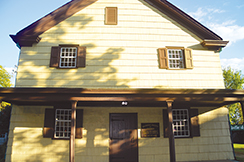
This is the New Plainfield Meetinghouse, built in 1788. The Quaker Meeting itself dates back to 1686 at Perth Amboy, with four meetinghouses built before it as Europeans moved inland from the coast. The forty years preceding this meetinghouse’s construction had been difficult for local Friends (Quakers). The Meeting had addressed the issue of slavery, requiring members to either free their slaves with the promise of continued support, or to leave the fellowship — which some did.
Originally, the meetinghouse was set on three acres. The street in front was called “Peace Street.” It was “The New Plainfield Meetinghouse,” and the town that grew up around it took the name. In 1832, a portion was lost to first the railroad, and then to 3rd Street. Later, the Friends lost the northern portion to the post office. During the racial strife of the 1970s, the Meetinghouse was a place of peace. Friends kept the meetinghouse open. When the National Guard arrived, Friends convinced soldiers not to go out on patrol, but to simply wait in case trouble arose, which it did not.
The Meetinghouse is available to community groups.
Hours & Activities for 4 Centuries Weekend
- Visit Plainfield’s oldest house of worship, in continuous use since 1788, with hand-hewn beams and benches fashioned by some of Plainfield’s earliest families — the congregation of this traditional meeting house dates back to 1686
- Wheelchair-accessible building, with an accessible parking space.
- Parking lot on site; or park on local streets.
duCret School of Art
1030 Central Ave., Plainfield
908-757-7171 | ducretarts.org
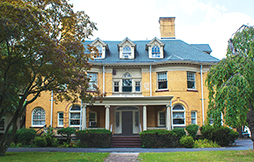
Designed by the architectural firm of Rossiter and Wright, this building was constructed in 1896 in the Colonial Revival style as a home for George and Harriet Strong. The house served as private residence until 1931. In 1933, the house was purchased and converted into a private school for boys, Wardlaw-Hartridge.
The duCret School of the Arts is the oldest arts school in New Jersey. Originally founded in 1926 by artist and teacher Marjorie Van Emburgh, it was first located in a carriage house in Plainfield. The Van Emburgh School of Art became the Van Emburgh/duCret School of Fine and Industrial Art, and moved into this building in 1970.
Hours & Activities for 4 Centuries Weekend
- Tour the first floor of this 1896 Colonial Revival building — originally the George Strong residence, a Gilded Age-era home
- Exhibit of the Ted Davis Art Collection
- The Strong residence is not wheelchair-accessible.
- Parking lot on site has ample parking.
↑ Back to Top ↑
Rahway
Merchants and Drovers Tavern⭐
261 Central Ave., Rahway
732-382-0541 | ebenezeramechurch.com
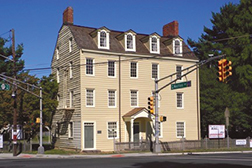
As a Tavern and Stagecoach stop, this early 19th-century hotel was the scene of auctions, public meetings, elections, business transactions, entertainment, horse breeding and a host of other activities.
The handsome Federal style inn contains a taproom, two parlors, 12 bedrooms and a kitchen wing with a working fireplace. Originally a house and store, the 1790s structure was adapted to tavern use in 1798.
A circa 1820 addition created the imposing building that stands today, its four stories making it a rare example of an early public house. The smaller, mid-18th century Terrill Tavern was moved to the property in the 1970s where it now stands as the museum shop.
Hours & Activities for 4 Centuries Weekend
- Tour this restored building, which served as a tavern and hotel from the 1790s to the 1920s, then a stagecoach stop in the early 1800s, and a Girl Scout headquarters in the mid-1900s — docents on hand will answer questions
- Permanent exhibit on second floor
- Saturday: Cider-pressing in the kitchen
- Sunday: Traditional colonial cooking demonstrated outdoors, with samples available to taste!
- First floor is wheelchair-accessible, including restroom. Upper floors, including permanent exhibit, require climbing stairs.
- Call in advance to 732-381-0441 for a virtual tour of upper floors (video shown on first floor).
- Parking available in lot behind the museum and on local streets.
African American History and Heritage Learning Center
261 Central Ave., Rahway | 732-382-0541 | ebenezeramechurch.com
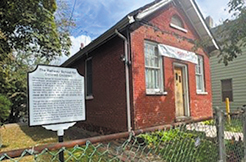
Construction began on the one-room school house in 1844, on the property of Jacob R. Shotwell, a former Vice President of RSI Bank. The primary funding, support and oversight for the school came from the Society of Friends (Quakers), who had a history of supporting persons of color. The Friends paid the school’s expenses and the salary of Martha (Matilda) Putnam, who served as both teacher and principal.
The school had an average enrollment of 35 students, and eventually received financial support from state public education funds. In 1882, the school was integrated, and by the mid 1880s, it closed. In the years that followed, Ms. Lucy H. Eddy, a local philanthropist from the neighborhood established the “Rahway School for Colored Children Trust Fund” that helped to preserve books and artifacts left from the school. These items are currently being stored at the Rahway Library, but will serve as the basis for the restoration and the holdings of the newly envisioned African-American History and Heritage Center of Rahway, NJ.
Hours & Activities for 4 Centuries Weekend
- Guided tours of this site, where an 1800s one-room schoolhouse for “colored children” once stood
- Presentation about the historical significance of the site
- Display about notable contributions made by African American figures
- Entrance at back is wheelchair-accessible (one low step).
- Street parking in front.
Union County Performing Arts Center
1601 Irving St., Rahway
732-499-8226 | ucpac.org
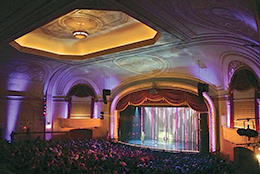
This classic Vaudeville house opened as the Rahway Theater on October 16, 1928 and featured a magnificent Wurlitzer pipe organ. This organ was the catalyst for the preservation effort from which the 1,300 seat Arts Center emerged. Carefully restored to its golden age of grandeur, the Arts Center is a monument of an age gone by.
The Union County Performing Arts Center is a non-profit 501(c)(3) corporation operating in the historic Rahway Theatre. Enjoying a prime location in Union County, UCPAC is dedicated to making this landmark theatre your choice for the performing arts – for education, inspiration and entertainment. This historic landmark is the cornerstone of the Rahway Arts District.
Hours & Activities for 4 Centuries Weekend
- Behind-the-scenes tours of this 1928 Vaudeville-era theatre include its rare Wurlizter — explore this architectural gem and discover what it takes to present live stage performances today
- Irving St. entrance is wheelchair-accessible. Accessible parking spaces behind the building, with ramp to enter building.
- Free parking available in spacious parking lot nearby at Hamilton Theatre, 276 Hamilton St., Rahway.
↑ Back to Top ↑
Roselle
Abraham Clark Memorial House⭐
101 W. 9th Ave., Roselle
732-221-7211
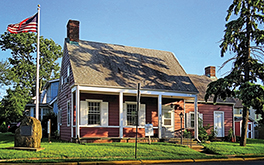
Abraham Clark boldly demonstrated his support of the Revolution as a New Jersey signer of the Declaration of Independence. He was born in what is now Roselle on February 15, 1726, the only child of Thomas Clark. He became a surveyor and studied common law. Clark and his wife Sarah raised ten children in their farmhouse, built in 1705.
Their house burned in 1900, but a replica was constructed in 1941. The original house stood a short distance from the current site on what is now Crane Street, near Wheatsheaf Road, which was known as Springfield Road in Colonial times.
The design of this house was based on old photographs and existing known facts from later owners and residents. The lot on which it stands was donated to the Abraham Clark Chapter of Sons of the American Revolution (SAR) by Mr. William M. Crane, once a part of the original Clark Farm in the eighteenth century.
The Office of New Jersey State Society of the Sons of the American Revolution (SAR) and its Archives are located at the Memorial House.
Hours & Activities for 4 Centuries Weekend
- Exhibits and artifacts about the history of Roselle and the life of Abraham Clark, a signer of the Declaration of Independence. This house is a replica of Abraham Clark’s original home, and is the headquarters of the NJ Society of the Sons of the American Revolution.
- Display of items from the Revolutionary War period, the Civil War and World War I
- From the 3rd NJ Infantry Regiment, the “Jersey Greys,” a soldier in Revolutionary-era uniform will be on site
- Building interior is not wheelchair-accessible.
- Ample street parking available.
↑ Back to Top ↑
Roselle Park
Roselle Park Museum
9 W. Grant Ave., Roselle Park | 908-245-1776
This site will not be open for the 2025 Four Centuries weekend
↑ Back to Top ↑
Scotch Plains
Osborn Cannonball House⭐
1840 Front St., Scotch Plains
908-757-1885 (weekend) | historicalsocietyspfnj.org
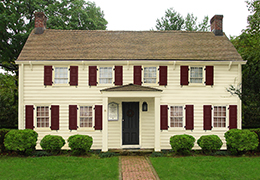
The white clapboard Osborn Cannonball House is a small jewel in the center of Scotch Plains. Brick walks, an arbor and formal gardens surrounded by a white board fence give this property a “Williamsburg” feel. Its location, adjacent to the town green and across from the Stage House Inn, adds to its interest.
Inside, four furnished rooms appointed with colonial and early 19th century furnishings will delight the visitor. A parlor reflects Victorian tastes. Built in the 1700s by Jonathan and Abigail Osborn, the house takes its name from the cannonball that struck it during a Revolutionary War skirmish.
Hours & Activities for 4 Centuries Weekend
- Costumed docents will give tours of this circa-1750 home of the Osborn family, showcasing the family’s history and their role in the Revolutionary War
- Exhibit: “NJ Passengers Aboard the RMS Titanic” includes replicas of actual items used aboard the ship — and Titanic-era Edwardian garments from the museum’s antique clothing collection, representing the three classes aboard the Titanic
- Craft activity for children — and an early Halloween treat!
- Building interior is not wheelchair-accessible.
- Parking available behind the Municipal Building (around the corner) or on local streets.
Ash Brook Reservation – Battle of Short Hills
Historic Trail ucnj.org/trails
This site will not be open for the 2025 Four Centuries weekend
Frazee House⭐
1451 Raritan Rd., Scotch Plains
frazeehouse.org
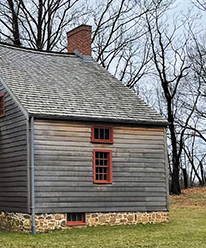
The Frazee House is a Revolutionary War period farmstead built in the typical and rare style of eighteenth-century Anglo-Dutch architecture. It sits in Scotch Plains at Two Bridges, near the intersection of Raritan and Terrill Roads, west of Ash Swamp. It is a Union County landmark due to its sheer survival for more than 230 years, and due to the tale of Elizabeth “Aunt Betty” Frazee’s legendary confrontation with British General Cornwallis during the Battle of the Short Hills in June of 1777.
The Fanwood-Scotch Plains Rotary Club committed to the restoration of the Historic Frazee House in 2004. The Rotary Club, along with the Township of Scotch Plains, is turning the house and adjoining acres into a resource for the community, further distinguishing New Jersey as a key site in the American Revolution.
Hours & Activities for 4 Centuries Weekend
- Tour this 1700s farmstead and learn the significance of this site on the Battle of the Short Hills Historic Trail
- Photos document the construction here
- Games and activities for children
- Displays about the Washington-Rouchambeau Revolutionary Route National Historic Trail and the Battle of the Short Hills Revolutionary Trail
- Community garden and bake sale with fall specialties
- Restroom cottage with ADA-compliant ramp, pending completion.
- Ample parking available on site.
Shady Rest Country Club
820 Jerusalem Rd., Scotch Plains
908-490-1577 | preserveshadyrest.org
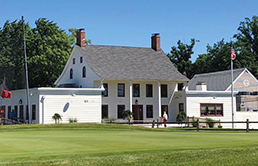
In the mid 1700s, Ephraim Tucker Farmhouse was built on a thirty one-acre plot of rural landscape just outside of Westfield. In the early 1800s, John Locey purchased this property. It later become the George B. Osborn Tavern. In the late 1800s, the property was sold to the Westfield Golf Club and was converted into a 9-hole golf course, with the main farmhouse serving as the clubhouse.
During this time, a close-knit community of African Americans lived on both sides of the golf course. These residents created a path across the golf course to visit friends and relatives living in the area. During this time of segregation, African Americans were not allowed membership at this white country club
In September 1921, a group of prominent African-American investors known as the Progressive Reality Company, Inc., purchased the former Westfield Golf Club and created the Shady Rest Golf and Country Club. This club was established to provide recreation and entertainment for all ages. Activities included golf, tennis, horseback riding, skeet shooting, and a dining room, where club members hosted famous people such as W.E.B. DuBois, Count Basie, Billie Holiday, Ella Fitzgerald, Althea Gibson and others.
The Shady Rest was the first African-American-owned golf and country club in the United States. It was the home course to the first African-American golfer professional ever to play the U.S. Open, John Matthew Shippen (1879-1968).
Hours & Activities for 4 Centuries Weekend
- Ongoing tours, video clips and films about this site — the first black-owned country club in the United States, which hosted performances by musical luminaries, including Duke Ellington and Ella Fitzgerald
- Visit the Shippen Museum
- Live jazz music from 1 to 4 pm, both days
- Mini-golf — plus a putting contest with prizes, both days
- Saturday at 12 noon: unveiling of new sign designating this site as part of the New Jersey Black Heritage Trail
- Building is wheelchair-accessible, including restroom.
- Ample parking on site, including accessible spaces.
↑ Back to Top ↑
Springfield
Cannon Ball House⭐
126 Morris Ave., Springfield | 973-912-4464
springfieldhistoricalsociety.webs.com
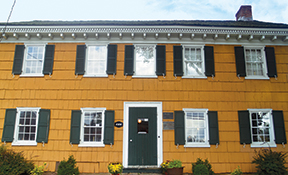
This mid-18th-century house is one of four buildings in Springfield to survive being burned by the retreating British Army after the Battle of Springfield in June 1780. This was the final major battle of the American Revolution in this area. Seven of the eight rooms in this house are open to the public.
Exhibits feature furniture and artifacts including 18th- and 19th-century household items. Relics from the Battle of Springfield include the cannonball that lodged in the wall of the house.
Hours & Activities for 4 Centuries Weekend
- Guided tours of this Colonial home, featuring highlights about its residents and tenants, dating back to 1761
- Learn about the Battle of Springfield — booklets and souvenirs about the battle are for sale
- Saturday: Re-enactors from the 3rd New Jersey Regiment
- Building is not wheelchair-accessible by ramp, however entrance at rear is just one step up.
- On Saturday, some reenactors will be outside to engage with anyone unable to access the interior of building.
- Printed brochure available on request.
- Limited parking on site.
↑ Back to Top ↑
Summit
Carter House⭐
90 Butler Parkway, Summit
908-277-1747 | summithistoricalsociety.org
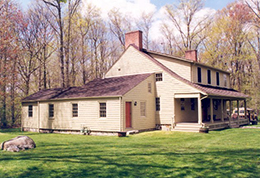
Summit’s oldest house, built by Benjamin Carter in the 1740’s, was moved in 1986 from its original location near the Passaic River to its present site, part of the original Carter farm. An East Jersey cottage, it shows a Dutch influence that is unusual in this part of the state. A 1740-1820 kitchen, 1820-1860 dining room and late Victorian library are interpreted with antique furnishings.
The house is also the archival center of the Summit Historical Society. Collections document Summit’s early development as a resort and commuter suburb as well as the town’s more recent history.
Hours & Activities for 4 Centuries Weekend
- Tour this circa-1741 cottage with its original Dutch door — displays include antique furniture, dishes and more
- Summit Historical Society displays artifacts related to the Revolutionary War era, including a diorama showing how the area looked when Washington marched his troops through the region; and a model of Beacon No. 10, which stood in Summit ready to be lit if needed, to warn soldiers in Morristown if the British advanced from the east. Learn about bread ovens constructed in town to fool the enemy.
- Shop offers handmade items and gifts with local themes
- The May Room houses the official archives for the City of Summit, including photos, postcards, family histories, scrapbooks, obituaries, house history files, maps, city directories, and Summit High School yearbooks
- 1920s Fire Dept. Chemical Engine on display in the garage
- Ramp at the back of the house provides barrier-free access to the May research room, exhibit room and Colonial kitchen. There is one step to access the restroom and the rest of the house. Garage is wheelchair-accessible.
- Ample free parking on the street, or park in the gravel lot on site.
Reeves-Reed Arboretum
165 Hobart Ave., Summit
908-273-8787 | reeves-reedarboretum.org
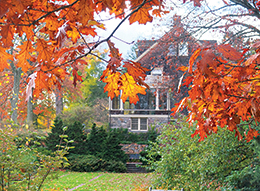
Celebrating 50 years as a historic public garden and education resource, Reeves-Reed Arboretum (RRA) is a living history museum which features the Wisner House and several outbuildings on 13.5 acres of pastoral lawns, woodland trails, a glacial bowl and historic gardens.
The buildings include galleries for cultural exhibits, classroom/workshop space for children and adult education programs in a historic carriage house, and a library which houses an extensive collection of historic documents, photos and books which are available for public access.
Hours & Activities for 4 Centuries Weekend
- Visit the public garden, education resource center, and living history museum, with 13.5 acres of pastoral lawns and trails on this historic estate (one area of grounds is closed for construction)
- • Guided Horticulture & History Tour at 10:30 am or 1:30 pm (meet in front of the Wisner House).
- • Grab a Map & Guide at the Visitors Center for a self-guided walk through the grounds, trails and gardens
- • History exhibit displays artifacts and photographs of the Reeves, Reed, and Wisner families
- • Art exhibit in Wisner House: “Nature’s Tapestry” — a collection of improvisational quilts by Carolyn McKibbin
- • See Beacon Signal Fire #10, a replica of the original Revolutionary War beacon
- Wheelchair-accessible paths are indicated on signage and on the Map & Guide available at Visitors Center.
- Buildings are wheelchair-accessible; signal tower and History Walk are not.
- Limited parking on site due to construction.
- Parking is available across the street on the opposite side of Hobart Ave.
- Observe parking regulations.
Summit Playhouse
908-273-2192 summitplayhouse.org
This site will not be open for the 2025 Four Centuries weekend
Twin Maples
214 Springfield Ave., Summit
908-273-0301 | twinmaplessummit.org
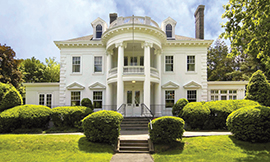
Twin Maples is an example of a suburban estate typical of those built in the Summit area between 1880 and 1920. This colonial revival style structure was built in 1908. The house was designed by Alfred F. Norris, a well-known New York and Montclair architect. It was erected with the finest materials and details of its time. It has an appearance similar to the “White House” in Washington. D.C. The house remained privately owned until 1949 when it was purchased by a women’s club founded in 1893, the Fortnightly Club of Summit.
During 2007-2008, the house underwent significant renovation to restore, modernize and beautify the property. Eco-Friendly, energy efficient and sustainable materials and systems were utilized throughout the process.
Hours & Activities for 4 Centuries Weekend
- Tour this 1908 Colonial Revival estate home, with a facade resembling the White House, a lavish entry hall, ballroom, and a “secret bath” tucked beneath the staircase
- Interior of building is not wheelchair-accessible.
- Parking lot on site.
Wallace Chapel A.M.E. Zion Church
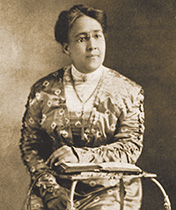
Wallace Chapel A.M.E. Zion Church is listed on the National and State Registers of Historic Places. Florence Spearing Randolph was one of the first women in the A.M.E. Zion denomination to be ordained as a Deacon, to become an elder, and to obtain a license to preach. She served as pastor here from 1925 to 1946.
Randolph organized the New Jersey State Federation of Colored Women’s Clubs, which focused on issues of race, gender, and social inequality. She was a member of the Executive Committee of the New Jersey State Suffrage Association.
Hours & Activities for 4 Centuries Weekend
- Tour the church and grounds, and learn about the work of Rev. Dr. Florence Spearing Randolph, the pastor here for 20 years, who advocated for justice, equality, women’s suffrage and civil rights
- Building is wheelchair-accessible. Chairlift is available.
- Parking lot at rear of church. Street parking also available.
↑ Back to Top ↑
Union
Caldwell Parsonage⭐
909 Caldwell Ave,. Union
908-687-7977 | unionhistory.org or uniontwphistoricalsociety.webs.com
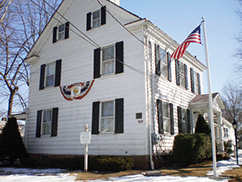
On June 7, 1780, after the battle of Connecticut Farms, retreating British and Hessian Troops passed the parsonage. A shot was fired through a bedroom window and Hannah Caldwell, the wife of James Caldwell, fell dead. Was it a mistake, or was it murder — an attempt to punish “the Fighting Parson” of the NJ militia and the Continental Army?
The British burned the Parsonage, the Connecticut Farms Presbyterian Church and other buildings in the area. The Parsonage was rebuilt two years later on its original foundation. An artist’s interpretation of Mrs. Caldwell’s death appears on the official Seal of Union County.
Today, the Parsonage contains furniture, clothing, personal belongings and other items relating to the families who established Connecticut Farms (which was incorporated as the Township of Union in 1808). Artifacts on display date from the 18th century to the early 20th century.
Hours & Activities for 4 Centuries Weekend
- Debut of “Hannah Caldwell,” depicted on the Union County seal, portrayed by Kelly Higgins
- Exhibit about World War II commemorates the 80th anniversary of the end of the war
- Marbles and other Colonial games
- Make your own lemonade and your own butter
- Craft a wampum necklace
- “Be Betsy Ross” — design your own flag
- Saturday: Meridoc Burkhardt portrays Rev. James Caldwell, narrating this site’s history and its place in the American Revolution
- Saturday, 1–4 pm: Acoustic rock/blues duo “Frank and Don” play patriotic tunes and their original “Ballad of Hannah Caldwell”
- Sunday: See how 18th-century tools were used: try wood-drawing using a draw knife and an awl in the Tool Museum.
- Building is wheelchair-accessible.
- Parking available on street or in the municipal lot, one block away.
Liberty Hall Museum⭐
1003 Morris Avenue, Union | 908-527-0400 | libertyhall.kean.edu
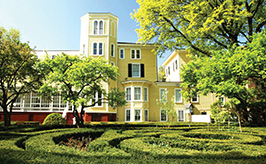
Built in 1772 on the eve of the American Revolution, Liberty Hall Museum at Kean University chronicles more than 240 years of American history. The former residence of William Livingston, New Jersey’s first elected governor and signer of the Constitution, Liberty Hall was originally constructed as a14-room home in the Georgian style, eventually expanding into the exquisite 50-room Victorian mansion you see today.
The museum houses extensive collections of furniture, ceramics, textiles, toys and tools owned by seven generations of the Livingston and Kean families. Descendants resided at Liberty Hall until 1995.
Hours & Activities for 4 Centuries Weekend
- Tour the original 14 rooms of Liberty Hall, a Revolutionary-era home built by William Livingston, New Jersey’s first elected governor. Tour includes the exhibit “Silver Jubilee: 25 Years of Liberty Hall.”
- Gardens highlight historical horticulture, including some of New Jersey’s oldest trees
- Gift shop in the Blue House
- Exhibit space is wheelchair-accessible, but main house is not.
- Ample parking in the gravel lot on site.
Connecticut Farms Church⭐
888 Stuyvesant Ave., Union
908-688-3164 | ctfarms.org
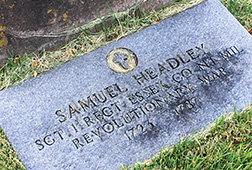
The First Presbyterian Congregation of Connecticut Farms was established here in 1730.
The original building served as a meeting house for public affairs on weekdays, and a house of worship on Sundays. British troops burned down the original church in 1780, during the Battle of Connecticut Farms. Its reconstruction was completed in 1788.
Hours & Activities for 4 Centuries Weekend
- Tours of this church and its grounds: Hear about the Revolutionary War battle that took place right in front of this church; visit the cemetery, with graves of soldiers who fought for American independence, as well as graves of Hessian and British soldiers
- Ring the 600-pound church bell!
- Craft and bake sale with a dessert cafe (proceeds assist families with a child battling cancer)
- Limited wheelchair accessibility. Wheelchair entry is via the cemetery, however stairs are required to reach next level inside.
- Park in lot at back of the church, off of W. Chestnut St.
Congressman Donald M. Payne Vauxhall Meeting Center
333 Russell St., Vauxhall (Union)
908-688-2797 | vhs1860@yahoo.com
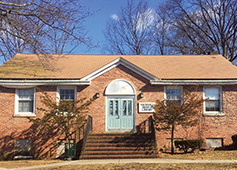
The Vauxhall Meeting Center is home to the Vauxhall Historical Society, which preserves and promotes the history of Vauxhall and surrounding areas. The Society focuses on the socio-economic, cultural, and political evolution of Vauxhall, from its early days as a farming community to its current status as a thriving urban center.
Vauxhall Historical Society maintains a collection of artifacts, documents, and photographs, as well as a research library that is open to the public. In addition to preserving local history, the Society also hosts events and educational programs, including lectures, exhibits and tours.
Hours & Activities for 4 Centuries Weekend
- Displays and information about the history of the Vauxhall section of Union, presented by Vauxhall Historical Society
- Building is wheelchair-accessible and fully ADA-compliant.
- Meeting Center has its own parking lot.
↑ Back to Top ↑
Westfield
Miller-Cory House⭐
614 Mountain Ave., Westfield
908-232-1776 | millercoryhouse.com
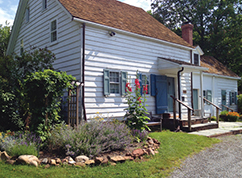
Eighteenth-Century outbuildings, herb and kitchen gardens help create a colonial atmosphere at the Miller-Cory House, where interactive tours engage the imagination of children and adults.
Built about 1740, the small, neat and authentically furnished farmhouse stands on its original site along the “road to the mountains.”
Hours & Activities for 4 Centuries Weekend
- Docent-led tours of this circa-1740 farmhouse
- Saturday: Visit with “George Washington”
- In the kitchen: authentic 1700s colonial cooking, using period recipes and techniques
- Intermittent demonstrations of fiber crafts
- Information coming soon
- Street parking only.
Burial Grounds at Presbyterian Church
137 Mountain Ave., Westfield (across from 140 Mountain Ave.)
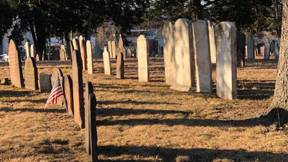
The Burial Grounds of the Presbyterian Church in the “West Fields of Elizabethtown” has been an active burial ground since 1737.
Set across the street from the church itself, it is the final resting place of founders of Westfield, veterans of American wars (including 73 veterans of the Revolutionary War), and many others.
The Burial Grounds serves the current congregation by maintaining an active section for cremation burials of church members. This cemetery is on the National Register of Historic Places.
Hours & Activities for 4 Centuries Weekend
- Guided tours about the history of this cemetery (graves date to 1737), with capsule biographies of people buried here
- Use either of two gates into the burial grounds.
- The gate farther from East Broad St. is wheelchair-accessible from the sidewalk.
- Undulating terrain of grounds may be difficult for wheelchair users.
- On request, tour will be given with views seen from the sidewalk.
- Parking available in church parking lot across the street from the Burial Grounds, adjacent to 140 Mountain Ave.
Reeve History & Cultural Resource Center
314 Mountain Ave., Westfield
908-654-1794 | westfieldhistoricalsociety.org
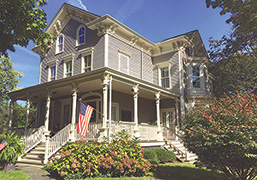
The Reeve History & Cultural Resource Center is located at the Westfield Historical Society headquarters. The Westfield Historical Society consists of the Reeve History & Cultural Resource Center (Reeve House) and the Miller Cory House Museum, located at 614 Mountain Ave, Westfield, NJ. The Reeve House is fully restored Victorian Italianate home, resplendent with many Victorian Antiques and artifacts from Westfield’s history.
The house originally built in 1872, was lived in until 1898 by the Stitt Family who owned the Westfield Hotel, and later by the Reeve Family from 1906 – 2001. William Reeve served Westfield through a variety of local projects including the establishment of the YMCA and the creation of Mindowaskin Park in 1918.
The Victorian home now serves the community as a historical resource center for Westfield as well as an exhibit center for special events throughout the year. A future educational facility which will also house the Westfield Historical Society archives, is in the funding stage and will provide for a museum and educational facility for the community to learn more about Westfield’s rich historical legacy.
Hours & Activities for 4 Centuries Weekend
- Docent-led tours of this Italianate Victorian-era home
- Website offers a virtual tour of the interior.
- Building interior is not wheelchair-accessible.
- Limited parking in lot on site; street parking recommended.
↑ Back to Top ↑
Photos from the Historic Sites
